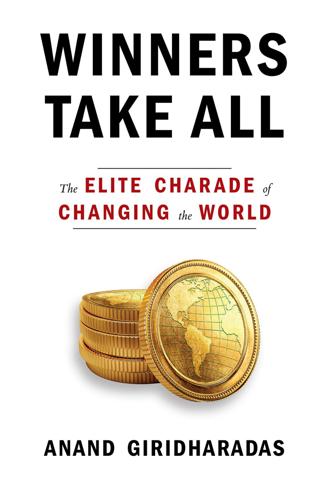
Winners Take All: The Elite Charade of Changing the World
by
Anand Giridharadas
Published 27 Aug 2018
I bonded with my classmates and exchanged my struggles with theirs and ended up being the officiant at one of their weddings. As I nestled into the Aspen Institute’s universe, there were other, more dubious pleasures. I began to have friends with private jets; sometimes I flew in them. I mingled with the ultra-rich in antler-decorated mansions overlooking the Roaring Fork Valley. I brought my mother to the Aspen Ideas Festival, where we shared a hotel room and could not stop laughing about who would get the tiger-print bathrobe and who the leopard-themed one. Even as I savored these luxuries and connections, I found something amiss about the Aspen Institute. Here were all these rich and powerful people coming together and speaking about giving back, and yet the people who seemed to reap most of the benefits of this coming-together were the helpers, not the helped.
…
Profitable companies built in questionable ways and employing reckless means engage in corporate social responsibility, and some rich people make a splash by “giving back”—regardless of the fact that they may have caused serious societal problems as they built their fortunes. Elite networking forums like the Aspen Institute and the Clinton Global Initiative groom the rich to be self-appointed leaders of social change, taking on the problems people like them have been instrumental in creating or sustaining. A new breed of community-minded so-called B Corporations has been born, reflecting a faith that more enlightened corporate self-interest—rather than, say, public regulation—is the surest guarantor of the public welfare.
…
“Not to say, ‘Shame on you, rich people,’ ” he said, “but to just ask questions and to interrogate and to talk about things that make people uncomfortable like wealth and race and privilege and justice, and the role that we all play in having more or less justice.” Walter Isaacson, the president of the Aspen Institute, one of the temples of MarketWorld, would be interviewing him onstage, and Walker knew exactly what Isaacson would want: Darren Walker’s improbable life story. “I can assure you Walter will prompt that, and he always does, and that’s fine,” Walker said. “That’s the idea. And so part of my approach is to give him what he wants.

Freezing Order: A True Story of Money Laundering, Murder, and Surviving Vladimir Putin's Wrath
by
Bill Browder
Published 11 Apr 2022
In late July, I was invited to the Aspen Institute to give a talk about the Magnitsky Act. The Institute is an international think tank and conference center that regularly brings together activists, entrepreneurs, politicians, and journalists to discuss issues of all kinds. Its campus along the Roaring Fork River is one of the most idyllic places you’ll ever see. For this particular gathering, I brought along my 17-year-old son, David, hoping he would be inspired. There was a cocktail reception at the end of the first day at the Doerr-Hosier Center, the main reception hall of the Aspen Institute. David, who was about to start at Stanford, was excited to rub shoulders with a handful of famous Silicon Valley entrepreneurs, and I was excited just to spend time with David.
…
He was visiting from California and was extremely worried by these developments. There wasn’t much he could do if the authorities came for me, but if they did, he could at least make sure the right people knew about it. The last time David and I had encountered trouble at the Aspen Institute, he was a teenager, but now he was a full-grown 22-year-old man. Having him with me made me feel a little better. I also got some comfort from the fact that the Aspen Institute was kicking off the Aspen Security Forum that day. This was an international conference that would bring together luminaries from the national security establishment, as well as countless journalists. If anything did happen, it would be covered on live television and witnessed by some of the most important people in government and the media.
…
We hadn’t brought umbrellas, so David and I broke into a jog, our arms shielding our heads from the fat raindrops. Suddenly, out of nowhere, a woman rushed toward me, shouting, “Mr. Browder! Mr. Browder!” Her tone was harsh. David and I stopped momentarily in our tracks. I squinted through the rain. I didn’t recognize her and noticed that she didn’t have an Aspen Institute badge hanging around her neck like everyone else at the conference. I was suddenly hit with a shot of adrenaline. My fight-or-flight instincts kicked in, and all the bad feelings from a month earlier in London flooded back. Whoever she was, I could tell she didn’t wish me well. I grabbed David and dragged him into a run.

Red Roulette: An Insider's Story of Wealth, Power, Corruption, and Vengeance in Today's China
by
Desmond Shum
Published 6 Sep 2021
sons and daughters of senior Party members were given good positions: Yuan Huai, “Chen Yun Appointed Me to Work under Li Rui of the Central Organization Department,” Mirror History Channel, November 10, 2020 https://www.mingjingnews.com/article/48411-20. Chapter Seventeen I addressed the Aspen Institute: “Leadership in Action Series: David Rubenstein; The China Model; Madeleine Albright,” The Aspen Institute, July 31, 2013, https://archive.org/details/Leadership_in_Action_Series_-_David_Rubenstein_The_China_Model_Madeleine_Albright. Chapter Eighteen He was the grandson of Gu Mu: Wu Ying, “A man, his horse, His mallet, his life,” China Daily, October 26, 2011, http://www.chinadaily.com.cn/cndy/2011-10/26/content_13976808.htm.
…
I was also inspired to look beyond business to consider the prospect of using China’s entrepreneurial class as a force for wider changes. While embryonic, my thinking—and that of other capitalists—began to focus on how to work within the system to shape China’s future. In 2003, I’d been introduced to the Aspen Institute by the consultant, author, and businessman Joshua Cooper Ramo, whom I’d met for lunch at the Grand Hyatt hotel in Beijing. Ramo was at work on a paper that he’d publish the next year called “The Beijing Consensus,” which argued that China’s mix of an authoritarian political system, meritocratic government, and semi-free market economy constituted a new model for development around the world.
…
Ramo was at work on a paper that he’d publish the next year called “The Beijing Consensus,” which argued that China’s mix of an authoritarian political system, meritocratic government, and semi-free market economy constituted a new model for development around the world. Ramo would soon go to work for Kissinger Associates, the firm started by former secretary of state Henry Kissinger, which made its money doing a foreigners version of Whitney’s guanxi business in China. With its many seminars and fellowships, the Aspen Institute was, at least to me, a stimulating place. From my earliest days, I’ve been a curious person, seeking out new intellectual experiences and ideas, and Aspen allowed me to fully exercise that muscle. It encouraged self-improvement, a trait I’ve embraced since my days in Shanghai reading the texts of Chinese philosopher Nan Huai-Chin, who argued that self-reflection was key to a full life.

A Framework for Understanding Poverty
by
Ruby K. Payne
Published 4 May 2012
The concern here is that a substantial minority of today's young people are being raised in disadvantaged circumstances that seriously impede their chances of growing into healthy, responsible, productive members of adult society." Zill, Nicholaus. "The Changing Realities of Family Life." Aspen Institute Quarterly. Winter 1993. Volume 5. Number 1. pp. 29-30. Ibid. Ibid. P. 32. Ibid. P. 35. Ibid. Ibid. In the section on Recent Trends in Poverty, Zill writes, "Childhood poverty is also more common in families lacking full-time, year-round workers; in families in which parents have low achievement test scores and education levels; in young families; and in minority families.
…
"Low income children interviewed by the National Commission on Children, particularly those living in urban environments, were far more likely to fear for their own safety and less likely to enjoy social supports or to feel that neighborhood resources were accessible and safe than children from more affluent families." Ibid. p. 128. Ibid. p. 129. Ibid. P. 136. Ibid. p. 162. Zill, Nicholaus. "The Changing Realities of Family Life." Aspen Institute Quarterly. Winter 1993. Volume 5. Number i. P. 29. Ibid. P. 38. In a study that "made use of data from two national surveys of families with children," it was found "that only about one-third of children in low-income families received stimulation and support from their parents comparable to that received by most children in families that were neither poor nor welfare dependent."
…
Kozol asks Jeremiah to explain what he means, and Jeremiah refers to Riverdale, "a mostly white and middle-class community in the northwest section of the Bronx." "'Life in Riverdale is opened up,' he says. `Where we live, it's locked down."' Kozol asks him, "'In what way?"' He responds, "'We can't go out and play.'" Ibid. pp. 159-160. Ibid. p. 162. Zill, Nicholaus. "The Changing Realities of Family Life." Aspen Institute Quarterly. Winter 1993. Volume 5. Number 1. P. 37. Kozol, Jonathan. Savage Inequalities. New York, NY: Harper Perennial, 1991. pp. 12-13. Kozol, Jonathan. Arnazing Grace. New York, NY: Crown Publishers, 1995. p. 32. A 15-year-old student, Isabel, says she thinks Jeremiah's description of feeling "'locked down'" is "too strong."
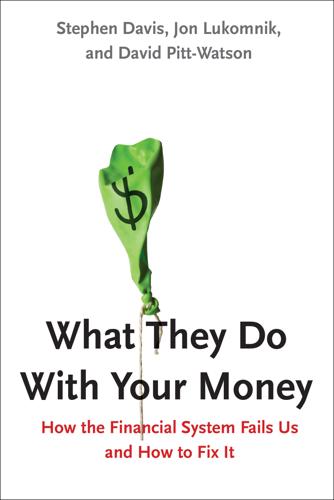
What They Do With Your Money: How the Financial System Fails Us, and How to Fix It
by
Stephen Davis
,
Jon Lukomnik
and
David Pitt-Watson
Published 30 Apr 2016
Ceres, www.ceres.org, accessed August 16, 2013. 69. ICGN Global Governance Principles, www.icgn.org. 70. www.sharegate.com, accessed November 11, 2013. 71. Ibid. 72. John Endean, “The Untapped Power of Individual Investors,” Wall Street Journal, October 5, 2014. 73. Ibid. 74. Aspen Institute, “Overcoming Short-Termism: A Call for a More Responsible Approach to Investment and Business Management” (Aspen Institute, September 9, 2009). 75. Hu and Black, “New Vote Buying.” 4 Not with My Money 1. Funston Advisory Services, “Fiduciary Audit Report of the South Carolina Retirement System Investment Commission” (Funston Advisory Services, April 18, 2014).
…
Bogle has calculated the titanic costs to investors when investment funds with permissive boards tolerate excessive buying and selling of securities with attendant fees and sales loads.14 Over twenty-five years ending in 2005, he suggests, fund companies reaped $500 billion in fees from overly complex products, while delivering returns to clients less than one third of the figure investors would have made had they put savings into a simple low-cost alternative. A 2009 Aspen Institute report came to similar conclusions, finding that “funds engage in behavior that is inconsistent with their investors’ goals.”15 New York City revealed that “high fees and failures to hit performance benchmarks have cost the pension system some $2.5 billion in lost value” over the decade ended 2014.16 Even fund managers admit that the rapid trading behavior that characterizes today’s investment markets is counterproductive and subtracts value.17 In short, thanks to experts operating with different interests, citizen savers have seen a bonfire of their nest eggs.
…
Those losses can offset capital gains, but deductions against ordinary income are currently capped at a miserly $3,000 per year in the United States. Raising or eliminating this limit would encourage investors to take risk, a common prerequisite to creating wealth. A panel of business, academic, and investing leaders assembled by the Aspen Institute endorsed just such a plan.74 BRING DERIVATIVES OUT OF THE SHADOWS A hundred years ago, US Supreme Court Justice Louis Brandeis observed that sunshine is the best disinfectant. Derivatives, by contrast, often hide in the shadows, protected by disclosure rules that are complex and inconsistent.75 For example, someone who wants to influence a company can buy a “call option,” that is, the right to purchase the company’s shares.

Gigged: The End of the Job and the Future of Work
by
Sarah Kessler
Published 11 Jun 2018
When Uber’s prices dropped, more customers would use Uber, and there would be more work to go around. Meanwhile, as the low pay offered less incentive to drivers, some workers would drop out of the market, restricting the supply of rides and pushing the price back up. In practice, this wasn’t how it always played out. As Ethan Pollack, an economist who works with the Aspen Institute’s “Future of Work” initiative, explained to me: While it’s possible that lowering of per-trip payments would result in drivers receiving more money, it’s unlikely, and if true would probably only be true in certain regions. So, for example, if drivers in a given region had a low utilization rate, and thus could be picking up a lot more passengers, then it’s possible the increased volume would more than make up for the loss in compensation per trip.
…
Though the letter was short on details, the broad coalition vaulted the phrase “portable benefits” into the Wall Street Journal, New York Times, and Washington Post. When Phyllis C. Borzi, Obama’s assistant secretary for the Employee Benefits Security Administration, US Department of Labor, spoke at the Aspen Institute months after the White House summit at which Obama had spoken, she commented on the change. “There’s been a lot of focus on retirement benefits and security, primarily because of the focus on the on-demand economy,” she said. “And that’s a good thing, that we’re focusing on this, because it’s possible that with a new set of characters and a new impetus to look at this issue, we might be able to actually get something done.”30 * * * Restructuring benefits was one of the ideas for mitigating the insecurity inherent in the gig economy.
…
But as it plays out in the real world, employers hesitate to cut wages immediately, so workers benefit from the increased commitment of employers to pay into social programs in the short term and possibly longer, if the decrease in pay would make the job uncompetitive. Portable benefits, however they were structured, seemed to many like the best chance to support workers without traditional jobs. As Ethan Pollack, the associate director of research and policy at the Aspen Institute, explains it: “If you mandated a 25% contribution [from employers], worker payments would likely not immediately go down by 25%. Now, the fact that they are contractors rather than [employees] probably means that the wages are less sticky, and therefore will adjust downward somewhat in the near term.
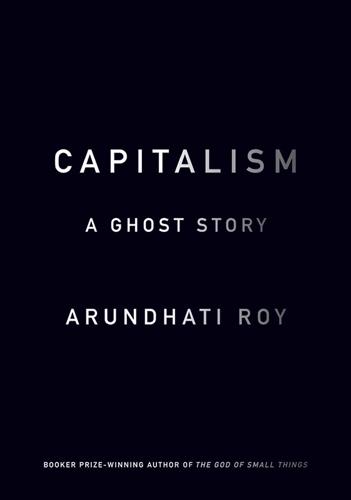
Capitalism: A Ghost Story
by
Arundhati Roy
Published 5 May 2014
Godrej, managing director of Godrej; Jamshed J. Irani, director of Tata Sons; and Gautam Thapar, CEO of Avantha Group).39 The Aspen Institute is an international club of local elites, businessmen, bureaucrats, and politicians, with franchises in several countries. Tarun Das is the president of the Aspen Institute, India. Gautam Thapar is chairman. Several senior officers of the McKinsey Global Institute (proposer of the Delhi Mumbai Industrial Corridor) are members of the CFR, the Trilateral Commission, and the Aspen Institute.40 The Ford Foundation (liberal foil to the more conservative Rockefeller Foundation, though the two work together constantly) was set up in 1936.
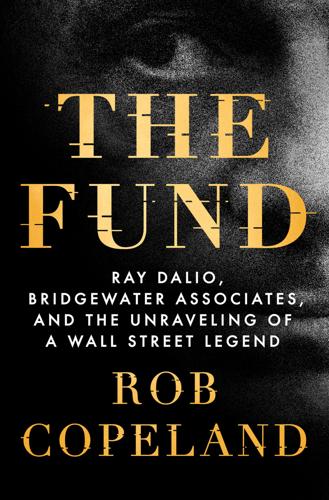
The Fund: Ray Dalio, Bridgewater Associates, and the Unraveling of a Wall Street Legend
by
Rob Copeland
Published 7 Nov 2023
Dalio’s disappointment showed, and an opportunity presented itself for David McCormick. What few would have known was that Dalio and Isaacson were more intertwined than it might have seemed. Dalio was a donor to the Aspen Institute, a white-shoe networking group for millionaires and billionaires to rub shoulders with former politicians and well-known intellectuals. McCormick was on the Aspen Institute board of trustees. Isaacson, who earlier in his career was the head of CNN, was now the Aspen Institute president. McCormick rang him up. Perhaps, as a favor to a patron, Isaacson would be willing to travel to Connecticut and speak with Ray? The visit was soon upgraded.
…
Dalio’s disappointment showed: Several former Bridgewater employees said they were told that Isaacson demurred when asked to write Dalio’s biography. Isaacson says he does not recall the request making it to him. Dalio was a donor: “Dalio Philanthropies,” InfluenceWatch. Aspen Institute: “New Trustees Elected to Aspen Institute Board,” Aspen Institute, May 5, 2010. McCormick rang him up: Walter Isaacson, author interview. television host Charlie Rose: Ray Dalio, interviewed by Charlie Rose, Charlie Rose, October 20, 2011. Off set: Charlie Rose, author interview. “I was enormously busy”: Ibid. review the copy: Maneet Ahuja, author interview.
…
For your reference, the terms that appear in the print index are listed below. Absolute Return (magazine) Ackman, Bill Adams, Tom Ahuja, Maneet Alexander, Keith Allred, Gloria Allstream project All-Weather portfolio Alpha (magazine) alpha, concept of Apple Arnold, Tara artificial intelligence Aspen Institute Banks of Mid-America Barber, Roy Bar Dea, Nir Barron’s (periodical) Bass, Kyle Bear Stearns believability believability weighting Benioff, Marc Bernanke, Ben beta, concept of Betfarhad, Ramsen Bezos, Jeff Black Mirror Blodget, Henry Bloomberg Businessweek (magazine) Book of the Future project Bridgewater Associates growth of Partnership of Principles of Transparency Library of see also individual entries Bridgewater Ethics Committee Buffett, Warren Burgess, Richard Burning Man festival Business Insider Campbell, Joseph Campbell, Kevin Canner, Niko Cassidy, John CBS This Morning Chief Investment Officer (magazine) China China Care Foundation China International Trust and Investment Corporation (CITIC) China Investment Corporation (CIC) Circle of Trust Cline, Michael cloud painters Coinbase Coltrera, Rick Comey, James B.
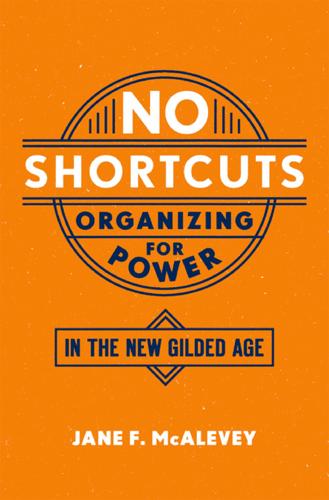
No Shortcuts: Organizing for Power in the New Gilded Age
by
Jane F. McAlevey
Published 14 Apr 2016
Within weeks, Emanuel’s campaign team developed a television ad in which the candidate took aim at Chicago’s teachers, chiding them for not working enough hours in the day and promising that as mayor, he would make it a top priority to lengthen Chicago’s school day. It later became known that this anti-teacher TV spot had been scripted in part by the fiercely anti-union Stand for Children campaign. Jonah Edelman, that group’s founder, was later caught snarkily boasting in a video clip from the 2011 elite annual gathering called the Summer Aspen Institute that Stand for Children had “duped the Chicago teachers into accepting a deal that would mean they could never go on strike.”53 Meanwhile, the union was functioning nonstop at a dynamic, exciting, and frenetic pace, trying to shift the CTU’s twenty-five-year-old bureaucratic administration, which had long since stopped functioning in any meaningful way.
…
I have also always refused them when leading contract negotiations.)64 In the early stages of the Chicago negotiations, neither the CTU nor the CPS was bargaining very seriously, and there weren’t many meetings set; each side believed that slowing the process down would work to their advantage under the new rules passed in SB7. Management, Jonah Edelman’s extensive videotaped comments at the Aspen Institute made clear, was sure that the union didn’t really understand the new rules very well, an incorrect assumption that perhaps made the employer overconfident. Meanwhile, the union was still methodically working to shore up the weaker schools identified by the mock strike vote, and also working with parents and community allies, making sure everyone was on the same page.
…
The ideas came from many organizers during a 1985 brainstorming session in a conference in Columbus, Ohio. 35.Ernie Mintor, 1199 member, unpublished organizing manual, in author’s possession; David Pickus’s 1199NE training document “The Four Stages to the Boss Campaign.” 36.Minimum wage in Connecticut was $8.70 per hour in October 2014 and $9.15 in January 2015; minimum wage in Washington was $9.32 per hour in October 2014 and $9.47 in January 2015. 37.Thomas, “Union, Nursing Home Alliance Team Up.” 38.Jonathan Rosenblum, author interview, March 2015. 39.Jerry Brown, author interview, May 2013. 40.David Pickus, author interview, September 2014. Chapter 4 1.Jonah Edelman, recorded in a talk at the Summer 2011 Aspen Institute of Ideas elite gathering. The entire 52-minute video was uploaded onto a website on YouTube, and some teachers edited it down to a shorter 14-minute clip of the highlights of Edelman’s remarks. The clip went viral among teachers, and shorter clips were also shown on Chicago television stations.
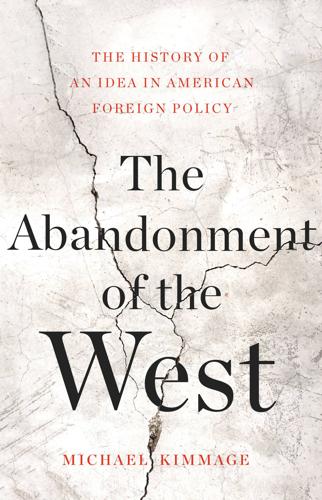
The Abandonment of the West
by
Michael Kimmage
Published 21 Apr 2020
Paepcke enlisted the University of Chicago’s Mortimer Adler to present various strands of Western culture at periodic meetings of the like-minded. These strands were great books, music, design and politics. In 1950, the Paepckes created the Aspen Institute for Humanistic Studies, developing an Executive Seminar in which academics met with distinguished figures from business and government. On the government side, a cofounder of the Aspen Institute was Elizabeth Paepcke’s brother, Paul Nitze, who served from 1950 to 1953 as director of the State Department’s Office of Policy Planning and who was among the primary authors of NSC-68, a 1950 policy document that argued for the rapid mobilization of Western resources and spirit against the Soviet menace.
…
Dwight Eisenhower, “we are very apt,” quoted in Herring, From Colony to Superpower, 647. 28. Sidney Hook, Out of Step: An Unquiet Life in the Twentieth Century (New York: Harper & Row, 1987), 440. 29. Hannah Arendt, The Origins of Totalitarianism (New York: Harcourt, Brace and World, 1966), 475, xxxi. 30. On the history of the Aspen Institute, see “A Brief History of the Aspen Institute,” https://www.aspeninstitute.org/about/heritage/. 31. Henry Kissinger, “embodiment of mankind’s hopes,” quoted in Hunt, Ideology and US Foreign Policy, 183. 32. W. W. Rostow and Max Millikan, A Proposal: Keys to an Effective Foreign Policy (New York: Harper, 1957), 8. 33.
…
On the government side, a cofounder of the Aspen Institute was Elizabeth Paepcke’s brother, Paul Nitze, who served from 1950 to 1953 as director of the State Department’s Office of Policy Planning and who was among the primary authors of NSC-68, a 1950 policy document that argued for the rapid mobilization of Western resources and spirit against the Soviet menace. William Nitze, Paul and Elizabeth’s father, taught Romance languages at the University of Chicago from 1909 to 1941. He was an expert on the legend of the Holy Grail.30 The Aspen Institute’s academic-policy bridge was emblematic of the Cold War university. Carl Friedrich’s student Henry Kissinger was not of Hannah Arendt’s or Leo Strauss’s generation. He was younger, but he, too, had been a German-Jewish refugee, arriving as a teenager in New York in 1938. Kissinger had Walter and Elizabeth Paepcke’s knack for amalgamating academic and government talent, which he did through the Harvard International Seminar starting in 1951 and which he would continue doing as a consultant to the State Department.
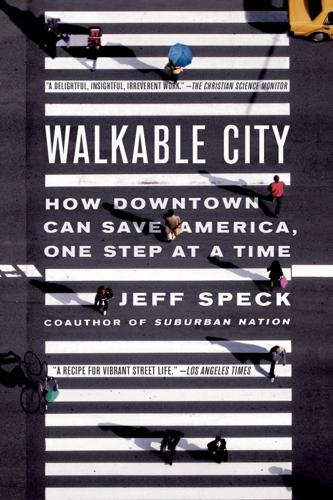
Walkable City: How Downtown Can Save America, One Step at a Time
by
Jeff Speck
Published 13 Nov 2012
This is a concept that is both stunningly obvious—cities exist, after all, because people benefit from coming together—and tantalizingly challenging to prove.● This hasn’t kept it from the lips of some of our leading thinkers, including Stewart Brand, Edward Glaeser, David Brooks, and Malcolm Gladwell. Speaking at the Aspen Institute, David Brooks pointed out how most U.S. patent applications, when they list similar patents that influenced them, point to other innovators located less than twenty-five miles away. He also mentioned a recent experiment at the University of Michigan, where “researchers brought groups of people together face to face and asked them to play a difficult cooperation game.
…
Leinberger, “Federal Restructuring.” 29. Catherine Lutz and Anne Lutz Fernandez, Carjacked, 207. 30. Leinberger, Option, 77–78, and “Here Comes the Neighborhood”; Jeff Mapes, Pedaling Revolution, 143. 31. Jon Swartz, “San Francisco’s Charm Lures High-Tech Workers.” 32. David Brooks, Lecture, Aspen Institute; and David Brooks, “The Splendor of Cities.” 33. Mapes, 268. 34. Jonah Lehrer, “A Physicist Solves the City,” 3. 35. Ibid., 4. 36. Hope Yen, “Suburbs Lose Young Whites to Cities”; Leinberger, Option, 170. 37. Ibid. WHY JOHNNY CAN’T WALK 1. Jim Colleran, “The Worst Streets in America.” 2.
…
“Streetcars’ Economic Impact in the United States.” PowerPoint presentation, May 26, 2010. Gabriel, Ron. “3-Way Street by ronconcocacola.” Vimeo. WebMD. “10 Worst Cities for Asthma.” Slideshow. webmd.com/asthma/slideshow-10-worst-cities-for-asthma. LECTURES AND CONFERENCES Brooks, David. Lecture. Aspen Institute, March 18, 2011. Frank, Lawrence. Lecture to the 18th Congress for the New Urbanism, Atlanta, Georgia, May 20, 2010. Gladwell, Malcolm. Remarks. Downtown Partnership of Baltimore Annual Meeting, November 17, 2010. Hales, Charles. Presentation at Rail-Volution, October 18, 2011. Livingstone, Ken.
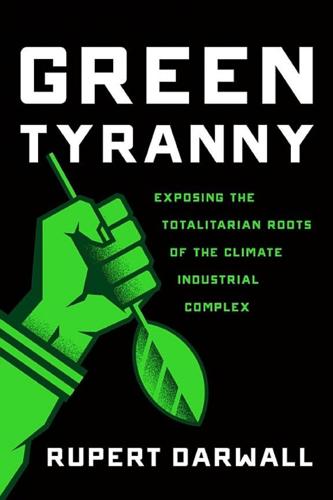
Green Tyranny: Exposing the Totalitarian Roots of the Climate Industrial Complex
by
Rupert Darwall
Published 2 Oct 2017
The occupants of the fortress threw them a welcome party and wealthy philanthropic foundations—Rockefeller, Ford, McArthur, and Pew—gave them the booty. Corporate and foundation wealth and power were handed to them on a plate. Already in 1962, the Aspen Institute for Humanistic Studies had run a program on climate in the eleventh and sixteenth centuries—“the subject entailed an enquiry into the ways sharp climatic changes could affect the conditions of life on earth.”61 The Aspen Institute had been founded in 1949 as a celebration of humanism and German culture (1949 was the bicentenary of Goethe’s birth). After the death of founder Walter Paepcke in 1960, Aspen’s new chairman, Robert Anderson, wanted a new focus.
…
For the experts at Aspen, the reality of a gathering environmental storm was becoming an article of faith. Slater was friends with Sweden’s ambassador to the UN, who in May 1968 had formally proposed to the UN General Assembly that the UN should convene, for the first time, a major conference on the environment. The proposal went forward. It would be held in Stockholm in June 1972. The Aspen Institute’s activities were then geared around the impending UN conference. Wilson established the Aspen Environment and Quality of Life Program. Leading environmentalists who appeared at Aspen include Lester Brown (the Rockefeller Foundation financed Brown’s Worldwatch Institute and subsequently the Earth Policy Institute) and the two principal architects of the Stockholm conference—Barbara Ward and Maurice Strong.† Wilson acted as Strong’s personal consultant.
…
Leading environmentalists who appeared at Aspen include Lester Brown (the Rockefeller Foundation financed Brown’s Worldwatch Institute and subsequently the Earth Policy Institute) and the two principal architects of the Stockholm conference—Barbara Ward and Maurice Strong.† Wilson acted as Strong’s personal consultant. He wined and dined corporate leaders in Paris and New York, ending up with the International Chamber of Commerce formally pledging support for the UN program on the environment. At the conference itself, the Aspen Institute hosted a Distinguished Lecture Series financed by the International Population Institute. Speakers included Gunnar Myrdal, Barbara Ward, and the Club of Rome’s Aurelio Peccei, who had commissioned The Limits to Growth, which was published two months before the conference. “Likely to be one of the most important documents of our age,” Anthony Lewis wrote in the New York Times, showing “the complete irrelevance of most of today’s political concerns.”65 1972 was the year postwar environmentalism came of age.

Dark Mirror: Edward Snowden and the Surveillance State
by
Barton Gellman
Published 20 May 2020
Clapper Jr., Litt was the government’s senior intelligence lawyer. He sounded tense, but he began with a pleasantry. We had met before, he said, at the Wye River Conference Center in Maryland. He was not sure I remembered. I could hardly have forgotten. We had spent two intense days in a conference room in the spring of 2011, when the Aspen Institute convened a small group of journalists and intelligence officials. It was supposed to be a dialogue, as it happened, about news coverage of national security secrets. There were twenty-eight men and women at the table, including a future FBI director and a former deputy director of national intelligence.
…
“You as a reporter make the call that it’s more important for the public—and I would contend, more important for the reporter—to get that story out before somebody scoops you,” he said. “The nature of your job is to report. That is in your DNA. And I think your default position is to report. And you can always make a case in your own mind why the American people need to know something.” * * * — Long before my first contact with Snowden, the Aspen Institute had asked me to moderate a plenary session. The headliners would be two former directors of national intelligence, Ambassador John Negroponte and Admiral Dennis Blair. Our assigned subject was entitled “Mission Accomplished? Has the Intelligence Community Connected All the Dots?” So it was that six weeks after the first Snowden disclosures, blind luck granted me an hour onstage with two men who had helped define the modern age of surveillance.
…
Clapper, 321 Addington, David, 70, 71, 123 address books, electronic, NSA collection of, 315–18 Aftergood, Steven, 264 air gaps, 72 Albright, Madeleine, 15 Alexander, Keith, 180, 182, 185, 193, 336, 377 bulk collection defended by, 316 Google cloud story mischaracterized by, 301–2 in internal video about NSA leaks, 243–45, 246 in lies about NSA data collection, 164, 177 raids on Pandora documents proposed by, 245–46, 247, 249 al Qaeda, 184, 212 torture of suspected members of, 263 Amash, Justin, 264 American Revolution, 346 American Spies (Granick), 339 Amir, Yigal, 10 Anderson, Lonny, 36, 68, 69 Anderson, Mavanee, 55 Angler (Gellman), 11, 26, 243, 312 anonymous proxies, xvii, 45 Anthony (Tekserve technician), 233–34 Apple: iPhone security as priority of, 215–20 Xcode software development kit of, 217 Armed Forces Qualification Test, 46–47 Army Foreign Counterintelligence Activity, 149 Army Special Forces, U.S., 46 Ars Technica, ES’s posts on, 37–38, 42–43, 50, 51, 54, 56 Ashcroft, John, 222 Aspen Institute, BG at plenary session of, 155–66, 181–82 Litt’s sparring with BG at, 144–45 Aspen Security Forum, 186 BG’s encounter with McRaven at, 151–53 Assange, Julian, 256–57 espionage charges against, 261 AT&T, 197 NSA’s collection of data from, 199, 310 Atlantic, 345 Bacon, Kevin, 159–60 Baine, Kevin, 103, 109, 114–15 and Baron’s agreement to hold Pandora backup drive, 115–16 BG’s one-on-one meeting with, 100–103 and BG’s plans to meet ES in Hong Kong, 133–34 cryptographic signature issue and, 132–33 Bair, Katie, 43 Baker, Stewart, 163 Barlow, John Perry, 7 Baron, Marty, 133, 134, 139, 195, 228 BG’s first meeting with, 104–16 custody of Pandora backup assumed by, 115–16, 246 in decision to publish NSA story, 113–14 PRISM slides shown to, 109–13 Soltani hired by, 198–99 as Washington Post editor, 89–91 Barr, Cameron, 103, 108, 228 Basic Telecommunications Training Program (CIA), ES at, 52–54 Bauman, Ethan, letter to Congress on NSA leaks by, 78 BeamPro, 320–21 Belgrade, Serbia, 59 Bellofatto, Jodon, 44 Berlin, Charles H., III, 189 bin Laden, Osama, 222 journalists falsely blamed for loss of NSA phone surveillance of, 273–74, 406 killing of, 152, 153–54 Binney, Bill, 26 MAINWAY’s precomputation confirmed by, 175–76 in resignation from NSA, 174–75 Blair, Dennis, 151 in Aspen Institute panel with BG, 156–66 NSA call data collection defended by, 165–66 Blakslee, Ed, 44–45 BLARNEY, 199, 310 Booz Allen: ES as contractor at, 83–88 ES’s test-system proposal for, 62–63 Boston Globe, 89, 104 Brand, Joseph J., 72, 185 on FIRSTFRUITS, 274 on SIGINT leaks, 272–73 Brauchli, Marcus, 92–93, 103, 380 Brenner, Joel F., 118, 122–23 on import of FISA Amendments, 126–27 Bruce, James, 273–74 Bucharest, Romania, ES’s temporary CIA assignment to, 54–55 burner phones, xvii Bush, George W., 54–55, 158, 273 warrantless surveillance authorized by, 26, 70, 97, 122–23, 157, 169 Bush administration, FISA amendments defended by, 126 BYZANTINEHADES, 206 CACI International, 35 Calabresi, Massimo, 94, 96 Callas, Jon, 218 Cappuccio, Paul, 95 CAPTAINCRUNCH, 86 Carter, Ash, 334 cellphones: CIA preoccupation with security of, 215–20 NSA location tracking of, 318–20, 324–25 Central Intelligence Agency (CIA), 14 Agency Data Network of, 75 ES as contractor at headquarters of, 49–50 ES as Dell liaison with, 61–62 ES as employee of, 51 ES posted to Geneva by, 54 ES’s departure from, 56–57 ES’s disillusionment with, 55–56 Information Operations Center of, 61 Intellipedia of, 76 iPhone security preoccupation of, 215–20 Century Foundation, BG’s fellowship at, 93, 232 Cheney, Dick, 11, 26, 70, 89, 367 and creation of MAINWAY and STELLARWIND programs, 122–23, 169 China, cyber attacks by, 34–35, 57–58, 83 Church, Frank, on inherent threat of surveillance, 346 “Churchyard, Dave M.”

The Sharing Economy: The End of Employment and the Rise of Crowd-Based Capitalism
by
Arun Sundararajan
Published 12 May 2016
One solution would be to apply machine-learning techniques to be able to identify patterns associated with discriminatory behavior. No doubt, many platforms are already using such systems. In a September 2014 panel discussion I participated in at the Techonomy Detroit conference, the moderator, Jennifer Bradley of the Aspen Institute, asked TaskRabbit’s president Stacy Brown-Philpot whether the platform had “flags or protections or things that could alert you to discrimination in the system or bad actors.” “We do. We have a data science team that we run [to] constantly to make sure we’re flagging and alerting human beings to actually go through and look at it,” Brown-Philpot replied, “and we actually track data on what drives somebody to select a tasker, and you can see all their pictures so you know what they look like, and the most important thing is a smile.
…
According to Justice Wiley Blount Rutledge, quoted by Justin Fox in a Bloomberg View article: Few problems in the law have given greater variety of application and conflict in results than the cases arising in the borderland between what is clearly an employer-employee relationship and what is clearly one of independent entrepreneurial dealing.1 As Fox points out, Rutledge is not a local judge commenting on Lyft in 2014 but rather a US Supreme Court justice deciding on the employment status of newsboys in 1944, in a case that pitted the National Labor Relations Board (NLRB) against media giant Hearst. As US Labor Secretary Tom Perez said at a December 2015 Aspen Institute workshop about portable benefits, ambiguity in labor classification is neither a new challenge, nor one created by the on-demand economy. Worker categorization is thus a historically vexing issue, not a fresh challenge posed by the sharing economy’s newly minted corporate giants. Second, the determination of “employee” versus “independent contractor” is not algorithmic.
…
The 40 or so other initial signatories included the CEOs of Etsy (Chad Dickerson), Handy (Oisin Hanrahan), and Instacart (Apoorva Mehta); Lyft’s president John Zimmer and its CEO Logan Green; the Silicon Valley icon Tim O’Reilly; the influential labor organizer and former SEIU president Andy Stern; the venture capitalists Brad Burnham, Simon Rothman, and Hunter Walk; as well as the leadership of the Aspen Institute, the Roosevelt Institute, the Institute for the Future, and a few other professors, from Berkeley, Harvard and Northwestern. The letter set out a number of principles to guide the creation of these portable benefits. These included a call for the model to be: Independent: Any worker should be able to access a certain basic set of protections as an individual regardless of where they source income opportunities.
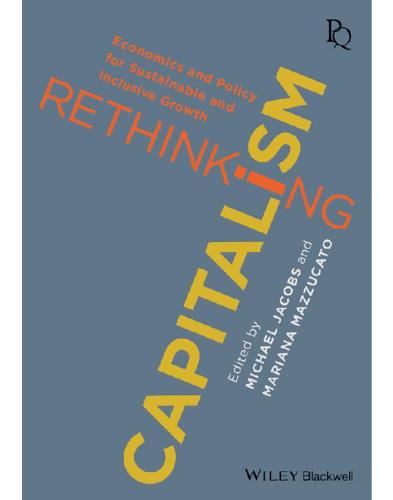
Rethinking Capitalism: Economics and Policy for Sustainable and Inclusive Growth
by
Michael Jacobs
and
Mariana Mazzucato
Published 31 Jul 2016
Also, not all corporate investment results in patents, so such a study investigates only a particular subsample of firms. 33 The benchmark category is the wholesale and retail trade sector, with the median ratio of fixed assets to profits in the sample. 34 Specifically, we assume a standard Cobb–Douglas production function with constant returns to scale and an elasticity of output with respect to capital of 0.3. 35 Aspen Institute, Overcoming Short-termism: A Call for a More Responsible Approach to Investment and Business Management, The Aspen Institute Business and Society Program, 9 September 2009; Chartered Financial Analyst Institute, Breaking the Short Term Cycle. Discussion and Recommendations on how Corporate Leaders, Asset Managers, Investors and Analysts can Refocus on Long-term Value, CFA Centre for Financial Market Integrity/Business Roundtable Institute for Corporate Ethics, 2006. 36 House of Lords and House of Commons, ‘Changing banking for good’, Report of the Parliamentary Commission on Banking Standards, http://www.parliament.uk/documents/banking-commission/Banking-final-report-volume-i.pdf (accessed 2010). 37 See Haldane, ‘Capital discipline’. 38 J.
…
Kay, The Kay Review of UK Equity Markets and Long-Term Decision Making, Department for Investment, Business and Skills, July 2012. 39 E. Duruigbo, ‘Tackling shareholder short-termism and managerial myopia’, Kentucky Law Journal, vol. 100, 2012, p. 531. 40 Securities and Exchange Commission, Facilitating Shareholder Director Nominations, 15 November 2010; Aspen Institute, Overcoming Short-termism. 41 Aspen Institute, Short-Termism and US Capital Markets, A Compelling Case for Change, 2010; see also Poterba and Summers, ‘A CEO survey’. 42 P. Bolton and F. Samama, L-Shares: Rewarding Long-term Investors, mimeo, 2010, Committee on Global Thought, Columbia University. 5. Innovative Enterprise and the Theory of the Firm WILLIAM LAZONICK Introduction: what makes capitalism productive?
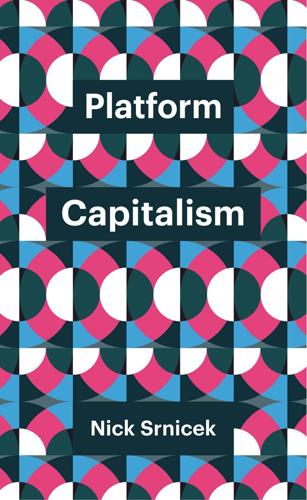
Platform Capitalism
by
Nick Srnicek
Published 22 Dec 2016
Various estimates include: 0.5% of the labour force (Katz and Kreuger, 2016); 0.4–1.3% (Harris and Kreuger, 2015: 12); 1.0% (McKinsey: see Manyika, Lund, Robinson, Valentino, and Dobbs, 2015); 2.0% (Intuit: see Business Wire, 2015). One outlier survey from Burson-Marsteller suggests that 28.6% of the US labour force has provided services through the gig economy (see Burson-Marsteller, Aspen Institute, and TIME, 2016). 73. Harris and Krueger, 2015: 12. 74. Various estimates are: 3.0% of the labour force (Coyle, 2016: 7); 3.9% (Huws and Joyce, 2016); 6.0% (Business Wire, 2015). See also Hesse, 2015. 75. A Nesta survey found that 25% of Brits had been involved in internet-enabled collaborative activity, but this category includes people who purchase from the internet rather than just workers.
…
The Atlantic, 8 January. http://www.theatlantic.com/technology/archive/2016/01/amazon-web-services-data-center/423147 (accessed 4 June 2016). Burson-Marsteller. 2016. ‘Net Display Ad Revenues Worldwide, by Company, 2014–2016’. https://pbs.twimg.com/media/Chsi8ZwUgAA-NnG.jpg (accessed 4 June 2016). Burson-Marsteller, Aspen Institute, and TIME. 2016. The On-Demand Economy Survey. Burson-Marsteller. 6 January. http://www.burson-marsteller.com/ondemand-survey (accessed 5 June 2016). Business Wire. 2015. ‘Intuit Forecast: 7.6 Million People in On-Demand Economy by 2020’. Business Wire. 13 August. http://www.businesswire.com/news/home/20150813005317/en (accessed 27 May 2016).
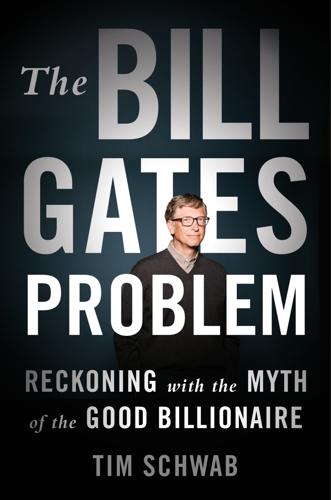
The Bill Gates Problem: Reckoning With the Myth of the Good Billionaire
by
Tim Schwab
Published 13 Nov 2023
“CARE knows that when leaders witness the best U.S. foreign investments have to offer, up close and in person,” the group’s website notes, “they go home inspired, motivated and challenged to make change happen back in the U.S.” Another group that organizes trips with the foundation’s money (alongside many other projects) is the Aspen Institute, a Washington, DC, think tank and recipient of more than $100 million from Gates. This includes a 2007 charitable grant for $664,000 “to inform an on-going group of senior committee staff on education policy issues and provide an opportunity to reflect and discuss in a neutral setting and build a collaborative working relationship.”
…
While the full scope of the Gates Foundation’s giving is unknowable, we can see that the foundation’s money travels far and wide across the media landscape, funding print, digital, and documentary content alongside fellowships, conferences, and trainings. The foundation gave $1.9 million to Johns Hopkins University “to train U.S. journalists in covering global health and development issues by providing fellowships and reporting opportunities” and $165,000 to the Aspen Institute “to identify how journalism training can improve the quantity and quality of media coverage of health issues in the developing world.” A more liberal analysis of Gates’s funding would also include the more than $20 million given to the Alliance for Science, which gives out journalism grants and trains African reporters on agricultural policy, and the more than $35 million given to the New America Foundation, one of the only sources of fellowship funding for nonfiction book authors.
…
However, these groups issued their political advocacy as “communities of color” and as a project of “Rockefeller Philanthropy Advisors,” routinely failing to disclose their funding from the Gates Foundation. The foundation also found ways to elevate its message in front of Congress, like funding the Aspen Institute and the Postsecondary National Policy Institute to organize retreats for congressional staffers to learn about education policy. Gates’s multipronged political campaign worked—or seemed to work. States began adopting the standards before a final draft had been made public and despite the fact that there had been no pilot program or assessment to make sure Common Core was effective.
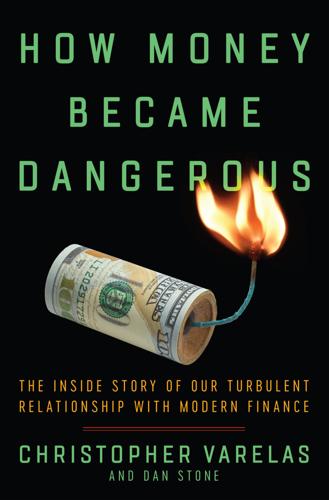
How Money Became Dangerous
by
Christopher Varelas
Published 15 Oct 2019
Several years ago, I became involved with the Aspen Institute, whose mission is to train effective and enlightened leaders. There are a handful of key readings with which every Aspen participant is familiar, and one of those is George Orwell’s essay “Shooting an Elephant,” which describes a white police officer in Burma, perhaps Orwell himself, being persuaded by the natives to shoot dead an escaped elephant. The narrator doesn’t want to shoot the animal, which, by the time the narrator encounters it, is grazing peacefully in a field, but he finally succumbs to the pressure and pulls the trigger. In an Aspen Institute seminar that had a big impact on me personally, we discussed the story.
…
This has created an unfortunate cycle: The industry often fails because it lacks leadership; when it fails, it is attacked; because of the barrage of attacks, great leaders go elsewhere; and this dearth of strong leadership allows for further failures. One of the few efforts to attract and develop enlightened leaders is at the Aspen Institute, with which I’ve been involved for a number of years as a co-founder of their Finance Leaders Fellowship program. Each year we select a class of twenty industry professionals from around the world who have demonstrated the potential for enlightened leadership, and we lead them through a part-time, two-year program of intensive seminars.
…
A huge thank you to my longtime executive assistant and friend, Angela Murray, for typing what must have been thousands of pages, most of which ended up in the trash; for her many corrections of my grammar; and for the positive reinforcement of every new draft, regardless of how rough and off-message it may have been. Thanks too to Don Walerstein for his legal advice, and to Tom Colligan for his diligent fact-checking. I’d also like to thank the Aspen Institute’s Finance Leaders Fellowship. All of my proceeds from this book will be donated to the worthy and needed cause of creating and nourishing values-based leadership in the financial services industry. Dan and I would like to thank our brilliant wives, Kim Gooden and Jessica Varelas. As insightful readers and thoughtful editors, they improved the book immeasurably through their hard work and dedication.
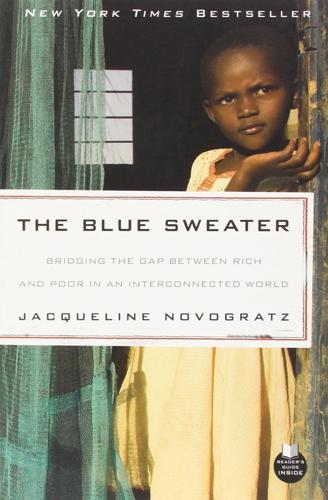
The Blue Sweater: Bridging the Gap Between Rich and Poor in an Interconnected World
by
Jacqueline Novogratz
Published 15 Feb 2009
Prior to Acumen Fund, Jacqueline founded and directed the Philanthropy Workshop and the Next Generation Leadership program at the Rockefeller Foundation. She also founded Duterimbere, a microfinance institution in Rwanda. She began her career in international banking, and is currently on the advisory boards of Stanford Graduate School of Business and Innovations, a journal published by MIT Press. She is a Henry Crown Fellow at the Aspen Institute and a Synergos Institute Senior Fellow, as well as a frequent speaker at international conferences, including the World Economic Forum, the Clinton Global Initiative, and TED. In 2009, Jacqueline was named one of the “Top 100 Global Thinkers” by Foreign Policy magazine and one of the “25 Smartest People of the Decade” by The Daily Beast.
…
We surprised ourselves by agreeing on the basics: The program would be action oriented; focus on solving problems, not just discussing them; and include reading and reflection. Two of my great privileges had been to serve as a teaching fellow at Harvard with the reknowned child psychologist Robert Coles, and to participate in an executive program at the Aspen Institute. Both experiences had taught me the power of using literature and great philosophical and political works as springboards into conversations about values and principles. I agreed with Plato that our world needs philosopher-kings and felt it was critical to combine action and reflection in building future leaders.
…
Foundation, GAIN, Lehman Brothers, Jim Leitner, Polly Guth, the Lundin for Africa Foundation, the Aman Foundation, Raj and Asha Rajaratnam, Amy Robbins, Niklas and Catherine Zennstrom, the Bill & Melinda Gates Foundation, Google. org, the Skoll Foundation, and the Woodcock Foundation. No one builds an enduring institution alone, and you have helped in so many ways. And thank you, too, to the Stanford GSB and the Aspen Institute for the inspiration and sense of community I always receive. My greatest thanks goes to my family, who taught me to love the world: my parents, Barbara and Bob; my siblings, Robert, Michael, Elizabeth, John, Amy, and Matthew; and my in-laws, Sukey, Cortney, and Tina. And finally, to my darling Chris, for challenging me and supporting me, for reading through endless drafts and always improving them, for your patience, your kindness, and your love.

Class Warfare: Inside the Fight to Fix America's Schools
by
Steven Brill
Published 15 Aug 2011
That school, called KIPP NOW (New Orleans West), became one of the highest-performing schools in the Houston school district and stayed open through the following year for the New Orleans children who were still evacuated, while KIPP also opened a campus in New Orleans for those who came back to the city. Meanwhile, Usdin began coordinating a multi-pronged effort put together by local civic groups, the state education department, and several nonprofits—including the Aspen Institute, whose CEO, Walter Isaacson, grew up in New Orleans—to create an entirely new school system. (Isaacson is also the board chair of TFA.) The old school system was mostly abolished. State education department superintendent Cecil Picard, with the support of Democratic governor Kathleen Blanco, took over all but 16 of New Orleans’s 118 schools.
…
Three weeks after the New Teacher Project report was published, Duncan was booed at a National Education Association convention when he mentioned student test data and went on to say that “inflexible seniority and rigid tenure rules . . . put adults ahead of children. These policies were created over the past century to protect the rights of teachers, but they have produced an industrial factory model of education that treats all teachers like interchangeable widgets.” In that talk and in one a few days earlier at the Aspen Institute, Duncan signaled that this Democratic administration was serious about reform. Yet he still offered few details. At the same convention, NEA longtime general counsel Robert Chanin gave a valedictory speech on the eve of his retirement. He sounded a defiant, if candid note. His union was effective he said, “not because we care about children, and it is not because we have a vision of a great public school for every child.
…
With the press talking about how key public officials were “suiting up” for the showdown—in some cases, even governors were accompanying their school superintendents to Washington—and with Duncan’s rules having heralded the Q&A as a pivotal aspect of these all-important presentations, this kind of final tune-up made sense. Among those making up these murder boards were education policy staff people from the Aspen Institute. Aspen’s CEO, Walter Isaacson, is an ardent reformer and New Orleans native who had been instrumental in organizing the post-Katrina overhaul of his city’s schools. Among the states that participated were Louisiana, Tennessee, Colorado, Illinois, Rhode Island, and Florida, and the District of Columbia (although Rhee was highly skeptical of her chances because her union contract was still in limbo).

This Is Your Country on Drugs: The Secret History of Getting High in America
by
Ryan Grim
Published 7 Jul 2009
“You wouldn’t believe how many parents still don’t realize that under no circumstances should spanking or hitting be used to discipline children,” she added. And “the second most frequent problem,” she said, “is not parents endangering children, but rather parents who try to ‘control’ their children, which stifles self-expression.” She was working from a set of assumptions that was backed by more than just pop psychology. At a 1995 Aspen Institute program called “The Challenge of Parenting in the ’90s,” those gathered heard from Harvard professor Stuart T. Hauser, then director of the school’s Judge Baker Children’s Center. Relying on a longitudinal study he published in 1991, he told the conference that the “chances of a teenager experimenting with new ideas and embracing new perceptions are greatly increased when he or she is in a family where curiosity and open-mindedness are valued, and uncertainty is tolerated.”
…
.); teenagers “Adolescents and Their Families” (Hauser) advertising campaigns Internet links to marijuana of Partnership for a Drug-Free America patent-medicine companies and teenage drug use and AET (α-ethyltryptamine) Afghanistan Africa African Americans, crack and Agreda, Rimer AIDS Air America alcohol MADD and opium and Prohibition and WCTU and women’s suffrage movement and Aldridge Medical Care All Good Music Festival & Camp Out American Academy of Pediatrics American Civil Liberties Union (ACLU) American Express Bank American Medical Association American Pharmaceutical Association Americans for Safe Access (ASA) American Temperance Society American Trucking Association amphetamines AMT (5-methoxy-α-methyltryptamine) Analogue Act Anderson, Jack Anheuser-Busch Anslinger, Harry TheAntiDrug.com Apperson, Clyde Aranda, Luis Arizona Aspen Institute aspirin Associated Press Astorga, Luís attention-deficit/hyperactivity disorder (ADHD) Aultman, Randall Aum Shin Rikyyo ayahuasca Baca, Joe Ball, Judy Banisteriopsis caapi Banzer, Hugo Barbitta, Mykey Barger, Brian Barnett, Randy Barstow, Chris Bayer Beattie, Melody Beecher, Reverend Lyman Bennett, William Bensinger, DuPont & Associates Benzedrine benzodiazepines Bermúdez, Enrique Bernstein, David Beyond the Valley of the Dolls Biden, Joe “biker speed”/“biker meth,” Bingham, Theodore Black, Danielle Blandón, Danilo Blue Mystic Bok, Edward Bolivia coca growers of financial issues of drug market and U.S. coca eradication attempts and Bonnaroo Boston Medical and Surgical Journal Bourne, Peter Boys n the Hood Bradford, James Bradshaw, John Brandenburg, Mary Brazil Breaking Bad “Brett’s Law,” Brin, Sergy Britt, Donna Brotherhood of Eternal Love Brotherhood of Eternal Love, The (Tendler, May) Brown, Jerry Brown, Lee Bruce, Rick Bryan, William Jennings Burgett, Lauri Burning Man Bush, George H.
…
See also marijuana Cannabis Buyers Club Cannabis indica Cannabis sativa Can’t Find My Way Home (Torgoff ) Cantú, Esteban Cardenas, Javier Valdez Caribbean Carrillo, Amado Carter, Jimmy Castro, Fidel CBS CBS News West 57th Centro Espirita Beneficiente União do Vegetal church Ceppos, Jerry “Challenge of Parenting in the ’90s, The” (Aspen Institute) Chavez, Hugo Cheney, Dick Chidester, Brett children. See Drug Abuse Resistance Education (D.A.R.E.); teenagers Childress, Ed China opium and U.S. foreign policy and Chronic, The (Dr. Dre) CIA Contras and heroin trade and “CIA and Crack” (Washington Post) Cisco Systems Citibank Clark, Ramsey Clark, William Clements, Kenneth W.
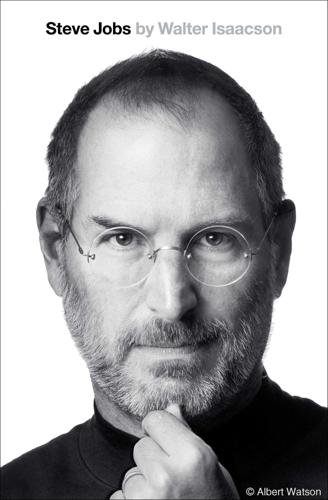
Steve Jobs
by
Walter Isaacson
Published 23 Oct 2011
Driven by demons, Jobs could drive those around him to fury and despair. But his personality and products were interrelated, just as Apple’s hardware and software tended to be, as if part of an integrated system. His tale is instructive and cautionary, filled with lessons about innovation, character, leadership, and values. Walter Isaacson, the CEO of the Aspen Institute, has been the chairman of CNN and the managing editor of Time magazine. He is the author of Einstein: His Life and Universe, Benjamin Franklin: An American Life, and Kissinger: A Biography, and is the coauthor, with Evan Thomas, of The Wise Men: Six Friends and the World They Made. He and his wife live in Washington, D.C.
…
He had been scattershot friendly to me over the years, with occasional bursts of intensity, especially when he was launching a new product that he wanted on the cover of Time or featured on CNN, places where I’d worked. But now that I was no longer at either of those places, I hadn’t heard from him much. We talked a bit about the Aspen Institute, which I had recently joined, and I invited him to speak at our summer campus in Colorado. He’d be happy to come, he said, but not to be onstage. He wanted instead to take a walk so that we could talk. That seemed a bit odd. I didn’t yet know that taking a long walk was his preferred way to have a serious conversation.
…
“I had come to revere the Italian designers, just like the kid in Breaking Away reveres the Italian bikers,” recalled Jobs, “so it was an amazing inspiration.” In Aspen he was exposed to the spare and functional design philosophy of the Bauhaus movement, which was enshrined by Herbert Bayer in the buildings, living suites, sans serif font typography, and furniture on the Aspen Institute campus. Like his mentors Walter Gropius and Ludwig Mies van der Rohe, Bayer believed that there should be no distinction between fine art and applied industrial design. The modernist International Style championed by the Bauhaus taught that design should be simple, yet have an expressive spirit.
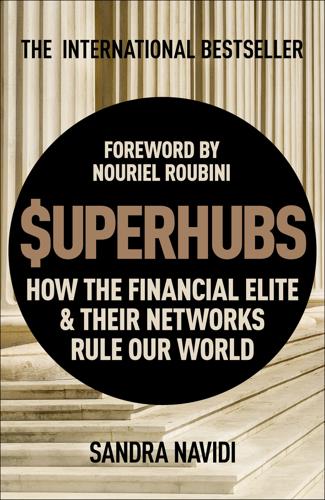
SUPERHUBS: How the Financial Elite and Their Networks Rule Our World
by
Sandra Navidi
Published 24 Jan 2017
WHY NETWORKS NEED PLATFORMS: CONNECTIVITY Networks need platforms to form, expand, and strengthen. The financial elite follow a yearly migration pattern, flocking to invitation-only conclaves such as the World Economic Forum in Davos, the International Monetary Fund, the Bilderberg Group, the Aspen Institute, the Allen & Company Sun Valley Conference, and many more. This tribal super circuit has evolved over time, and its members ritualistically attend these “ceremonies” to see and be seen, affirm their status, and receive acknowledgment. Reinforcing a sense of community, these meetings provide a safe cocoon for interaction, yet are unstructured enough to leave room for serendipity, which many powerful executives credit with at least part of their success.4 When it comes to power platforms, the magic word is “access”; they have high barriers to entry, and only superhubs get admitted.
…
There, Pao became head of staff for billionaire John Doerr, one of Kleiner Perkins’s most successful partners. It was an enviable position at the intersection of tech and finance with invaluable exposure to top people and unique opportunities. Then Fletcher’s and Pao’s lives fatefully intersected in the summer of 2007 at the Henry Crown Fellowship Program at the Aspen Institute, a leadership seminar for extraordinarily gifted professionals. A whirlwind courtship ensued, culminating in a wedding four months later and the birth of a baby girl a few months thereafter.11 Perhaps most stunning was the fact that throughout his life Fletcher had been openly gay, for many years living with a male partner, and in 2005 accepted the Harvard Gay & Lesbian Caucus’s annual Civil Rights Award.
…
See also Deutsche Bank at EQT Partners, 144 family of, 136 general references to, 101, 118, 120 International Institute of Finance and, 131 legal charges against, 142–143 Mannesmann AG and, 142–143 Pierre Wauthier suicide and, 138, 144 public relations mistakes by, 143 at Zürich Insurance, 144 “Age of irresponsibility,” 222 Ahamed, Liaquat, 160 AIG, 31, 48, 183–184, 217 Air France, 193 “Airport test,” 80 Albania, 27 Alibada Group, 103 Allen & Company Sun Valley Conference, 112 Alpha personality, 55–58 Alps, 38, 93, 122 Altman, Roger, 121 Alumni networks, 81 Al-Waleed, Prince of Saudi Arabia, 205 Amazon, 199 Amygdala, 98 “Analysis paralysis,” 51 Analytical thinking, 218 Anarchy, 213 Andreessen Horowitz, 189 Anger, 57 Annan, Kofi, 27 Ant colonies, 6 “Anthropocene,” xxvii Apollo Global Management, 88 Appaloosa Management, 88 Arab Spring, 226 Arabella Sheraton Hotel Seehof, 115 Arbitrage traders, 166, 208 Arcadia Conference, 34 Archbishop of Westminster, 226 Aristotle, 79 Arrow, Kenneth, 185 “Ask gap,” 153 Aspen Institute, 112, 200 Assess the Value of Your Networks, 41 Assessment gap, 152–153 “Assortative mating,” 80 Athleticism, 126 Atlantic Council, 158 Avenue Capital Group, 90 AXA, 179 Axel Springer, 136 Azerbaijan, 171 B Babacan, Ali, 120 Bacall, Lauren, 199 Bacon, Louis, 109 Bailouts, 10–11, 216 Bair, Sheila, 56, 150, 168, 172–173, 176, 214 Baker & McKenzie, 154, 159 Banamex Bank, 167 Banco Santander, 121, 148 Bank(s) bailouts of, 10–11, 216 central, xxv, 6, 10, 32–33, 37 CEOs of, 38, 87–88, 174 commercial, 37 description of, xxv investment, 38 postcrisis regulation of, 218 private, 37 private equity firms and, 61 regular, 37 savings, 37 shadow, 38 “too big to fail,” 216 Bank Credit-Dnepr, 195 Bank for International Settlements, 37, 78, 214 Bank of America, 115, 151, 183 Bank of Cyprus, 144–145 Bank of England, xxv, 32, 43, 57, 84, 106, 165, 214–215, 222 Bank of Israel, 36, 84 Bank of New York, 196 Bank One, 65 Banking Conduct and Culture, 223 Banque de France, 39 Barabasi, Albert-László, 19 Barak, Ehud, 9 Barclays, 43, 137, 179, 183, 205 Basel Committee on Banking Supervision, 37 BASF, 115 Bass, Kyle, 154 Baur au Lac Hotel, 38 Bear Stearns, 41, 56–57, 198 Beaux-Arts style, 34 Behavior of networks, 20 Beijing, 103, 194 “Believability index,” 72 “Believability matrices,” 71 Belvédère Hotel, 3, 9, 29 Berkeley Hotel, 43 Berkshire Hathaway, 60 Berlusconi, Silvio, 177–178 Bernanke, Ben annual salary of, 165 as Federal Reserve chairman, 34–37, 188 background on, 36 at Bilderberg conference, 121 in Euro crisis, 177–178 in financial crisis of 2007–2008 management, 11, 36–37, 84, 172 Medley Global Advisors leak and, 43 power of, 35 Princeton University graduation speech by, 50, 80 successor to, 188 Bernstein, Leonard, 199 Beverly Hills Hotel, 192 Bieber, Justin, 67 “Big data analysis” programs, 72 Bild, 136 Bilderberg conference, 120–122 Bilderberg Group, 96, 112 Bilderberg Steering Committee, 142 Billionaires, 123 BIS.

Tailspin: The People and Forces Behind America's Fifty-Year Fall--And Those Fighting to Reverse It
by
Steven Brill
Published 28 May 2018
In the nearly fifty years since, it has reigned as the business world’s mantra for justifying a dizzying array of legal and financial engineering that would be performed by the new wave of meritocrats, who would be celebrated, and rewarded, as brilliant innovators even as their work undermined the capacity of the country to produce economic security for average Americans. In a hallway at the Aspen Institute’s New York office there is a blowup of a New Yorker cartoon published in 2012. A man in a tattered suit and tie sits cross-legged, in the dirt, with his three children around a makeshift fire in the dark. A dust-filled skyline of half-collapsed buildings looms in the background. It looks like a scene from a disaster movie.
…
Similarly, every private organization working to counter the forces of the tailspin that has been described in this book—OpenSecrets, Issue One, the Bipartisan Policy Center, Better Markets, the Partnership for Public Service, the Coalition for Queens/Tech Equality, Year Up, Philip Howard’s Common Good, the Aspen Institute’s anti-short-termism American Prosperity Project—has seen a dramatic increase in support and in talent joining their cause. They are ready to step in and lead. And they may find followers. Americans may finally be ready to get into the same foxhole. This will not be a revolution of those on the left against those on the right.
…
Baruch spends approximately: Information provided via email by Suzanne Bronski. top three fifths: David Leonhardt, “America’s Great Working Class Colleges,” New York Times, January 18, 2017, https://www.nytimes.com/2017/01/18/opinion/sunday/americas-great-working-class-colleges.html?_r=0. 3 CASINO COUNTRY Aspen Institute’s New York office: Visit to the office. “the disease of short-termism” and subsequent quotes: Interviews with Samuelson. “The social responsibility”: Milton Friedman, “A Friedman Doctrine—The Social Responsibility of a Business Is to Increase Its Profits,” September 13, 1970, http://www.nytimes.com/1970/09/13/archives/a-friedman-doctrine-the-social-responsibility-of-business-is-to.html.
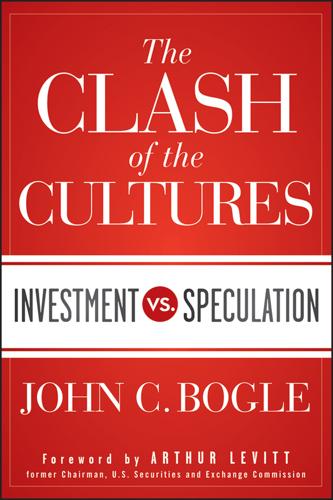
The Clash of the Cultures
by
John C. Bogle
Published 30 Jun 2012
A few years earlier, in 2006, as these issues of our failed ownership society began to heat up, the Business Roundtable Institute for Corporate Ethics, sponsored by the Chartered Financial Analyst (CFA) Institute Centre for Financial Market Integrity, took up the task in a 20-page white paper entitled “Breaking the Short-Term Cycle.” And in 2009, the Aspen Institute published “Overcoming Short-Termism: A Call for a More Responsible Approach to Investment and Business Management.” Both of these excellent public policy reports sought to encourage patient capital, discourage investor “churning,” and generally reinforce long-term investing, enlisting natural market forces and establishing incentives for market actors to modify their respective behaviors.
…
First, I was a commissioner on the Conference Board study, ably co-chaired by former Secretary of Commerce Peter G. Peterson, and including former Federal Reserve Chairman Paul Volcker, Intel founder Andrew Grove, and Johnson & Johnson CEO Ralph Larsen. I was also a participant on the CFA panel, and a member of the Aspen Institute Coalition. I was honored by the opportunity both to express my own views and to learn from the views of the other members of these three “Blue-Ribbon” groups, and I wholly endorse the reports that were issued. 6 In my Amicus Curiae brief on Jones v. Harris Associates that I submitted to the Supreme Court in 2009, I hammered at this distinction as hard as I could.
…
See also Equity mutual funds evaluating fund managers holding periods returns success, standards for turnover rates Admiral shares, Vanguard Advertising Affiliated Managers Group (AMG) Agency relationship, defined Agency society Agents, defined Aguilar, Luis Alito, Samuel Alpha Ambachtsheer, Keith American Century American Express American Federation of State, County, and Municipal Employees (AFSCME) American Funds: distribution unit proxy votes Stewardship Quotient American National Bank (Chicago) Ameriprise Financial Apartheid Archilochus Aspen Institute Asset allocation Asset managers Assets: bond mutual funds equity mutual funds exchange traded funds gathering by mutual funds money market funds mutual fund industry traditional index funds Wellington Fund Avery, Sewell L. Bajakian, Vincent Balanced funds. See also Wellington Fund Barclay’s Aggregate Bond Index Batterymarch Financial Management Berkshire Hathaway Berle, Adolph A.
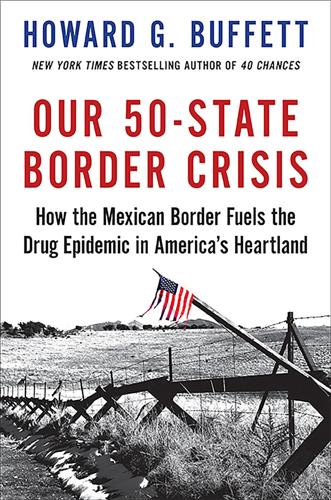
Our 50-State Border Crisis: How the Mexican Border Fuels the Drug Epidemic Across America
by
Howard G. Buffett
Published 2 Apr 2018
Retrieved October 18, 2017, from https://www.washingtonpost.com/news/federal-eye/wp/2014/09/25/outsized-congressional-oversight-weighing-down-department-of-homeland-security. 17 Annenberg Foundation Trust at Sunnylands and Aspen Institute Justice and Society Program. (2013, September). Task Force Report on Streamlining and Consolidating Congressional Oversight of the U.S. Department of Homeland Security (Rep.). Retrieved October 18, 2017, from the Aspen Institute Justice & Society Program website, https://assets.aspeninstitute.org/content/uploads/files/content/upload/DHS%20whitepaper%20final_0.pdf. 18 Longmire, S. (2014). Border Insecurity: Why Big Money, Fences, and Drones Aren’t Making Us Safer.
…
Coast Guard and FEMA fall under the Transportation and Infrastructure Committee. The fractured congressional oversight means that committees address DHS issues in a piecemeal way and no committee has full authority for solving problems, and so they don’t get solved. Former Homeland Security secretary Michael Chertoff explained in a 2013 Aspen Institute report: “It’s a little bit like childhood soccer games. Everybody runs after the ball, and they wind up colliding into each other.”17 What would success look like? In part 1, I mentioned that one significant challenge is that stakeholders have not accepted one definition of what border security means.
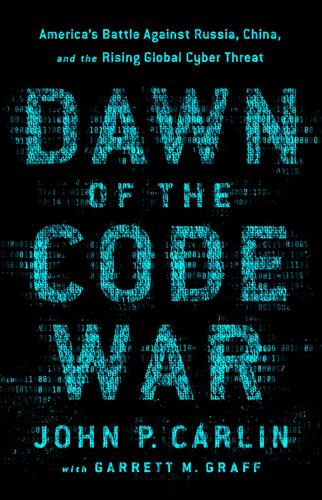
Dawn of the Code War: America's Battle Against Russia, China, and the Rising Global Cyber Threat
by
John P. Carlin
and
Garrett M. Graff
Published 15 Oct 2018
A career federal prosecutor and graduate of Harvard Law School, John has spent much of the last decade working at the center of the nation’s response to the rise of terrorism and cyberthreats, including serving as national coordinator of the Justice Department’s Computer Hacking and Intellectual Property (CHIP) program, as an Assistant United States Attorney for the District of Columbia, and as chief of staff to FBI Director Robert Mueller. Today, Carlin is the chair of the Aspen Institute’s Cybersecurity & Technology Program. He also is the global chair of the risk and crisis management practice for the law firm Morrison & Foerster and is a sought-after industry speaker on cyber issues as well as a CNBC contributor on cybersecurity and national security issues. GARRETT M. GRAFF is an award-winning journalist who has spent nearly a decade covering national security. Today, he serves as executive director of the Aspen Institute’s Cybersecurity & Technology Program and is a contributor to Wired and CNN.
…
I’m especially grateful to Michael Gaynor and Vanessa Sauter for helping gather court records, indictments, and other research, and my editor Ben Adams for his vision and patience, as well as Melissa Veronesi and Melissa Raymond at PublicAffairs. In my new life outside of government, Walter Isaacson and the Aspen Institute and my new colleagues at Morrison & Foerster have welcomed me and allowed me to continue to work to improve cybersecurity. Thank you to Garrett Graff, for your craft, your good humor, and your patience: without you, there would be no book and I know I fought every minute of the process, conflicted between a belief that the story needs to be told and a long-ingrained professional trait of saying as little as possible.
…
Garrett Graff, “How the FBI Took Down Russia’s Spam King—and His Massive Botnet,” Wired, April 11, 2017, www.wired.com/2017/04/fbi-took-russias-spam-king-massive-botnet/. 20. Government of Georgia, Ministry of Justice, “Cyber Espionage Against Georgian Government,” http://dea.gov.ge/uploads/CERT%20DOCS/Cyber%20Espion age.pdf. 21. “Exclusive: The Aspen Institute and Morrison & Foerster’s John Carlin Speaks with White House Cybersecurity Coordinator Rob Joyce from the Cambridge Cyber Summit Today,” CNBC, October 4, 2017, www.cnbc.com/2017/10/04/exclusive-morrison-and-foersters-john-carlin-speaks-with-white-house-cybersecurity-coordinator-rob-joyce-from-the-cambridge-cyber-summit-today.html. 22.

Business Lessons From a Radical Industrialist
by
Ray C. Anderson
Published 28 Mar 2011
Case Western Reserve, Northwestern, Stanford, the University of Michigan, and George Washington University now have concentrations in sustainable enterprise. The Yale School of Management offers a joint degree—an M.B.A. and Master’s of Environmental Management. For a person seeking a green M.B.A., the problem is not so much finding a program that offers what you’re looking for, but picking the best one. To help with the search, the Aspen Institute publishes a biennial survey called Beyond Grey Pinstripes. Its Center for Business Education publishes this ranking of business schools to spotlight M.B.A. programs that integrate social and environmental stewardship into their curricula and research. The survey measures course work, faculty research, and something they call “institutional support,” a wide spectrum of activities that includes social and environmental impact management, seminars and conferences, internships, student competitions, and career development services.
…
Cornell University 7. Duquesne University 8. Yale University 9. New York University 10. University of North Carolina at Chapel Hill The pace of this good trend is both positive and accelerating. A survey of ninety-one business schools released in October 2008 by the World Resources Institute and the Aspen Institute found that 54 percent require a course in ethics, corporate social responsibility, sustainability, or business and society. That’s up from just 34 percent in 2001. The Wharton School at the University of Pennsylvania has created its Institute for Global Environmental Leadership, and Interface holds a position on its Advisory Board.
…
engineering studies environmental commitment, outsiders’ doubts about family of first jobs football scholarship of founding of Interface journey to sustainability as kickoff speaker for Interface’s environmental task force retirement thoughts Anheuser-Busch appliances, high-efficiency Armstrong, Karen artisans Aspen Institute, Center for Business Education Association for the Advancement of Sustainability in Higher Education (AASHE) Atlanta, Ga. Automobile Association of America automobile industry fuel economy mandates automobiles California standards for less-polluting, reward for purchasing life-cycle cost of slavery to Auto VLB(tm) “away,” no such place (for throwing away) Bainbridge Institute Ball, Jim banking, concentration of, and boom-bust cycles Basic Economic Problem Bayer Beck, Rich Becker, Bill Becker, Daniel Belleville, Ontario, Interface facility Bennett, Brian Bennett, Mike Bentley Prince Street (BPS) Interface facility Benyus, Janine Biomimicry: Innovation Inspired by Nature Berkeley, California Bertolucci, Michael BHAGs (big, hairy, audacious goals) biodegradability biological concentration biomimicry biopolymers biosphere emissions that harm recycling genius of and technosphere, balance of thinness of bitumen bottled water industry bottling plants Bowen, “Dinky” Bowie, Patrick Bowlin, Mike BP Bradford, John Brasstown Valley retreat Brower, David brown companies, can’t make green products Brundtland Commission Brush, Charles F.

When Work Disappears: The World of the New Urban Poor
by
William Julius Wilson
Published 1 Jan 1996
“Antipoverty Politics, Affirmative Action, and Racial Attitudes.” In Confronting Poverty: Prescriptions for Change, edited by Sheldon H. Danziger, Gary D. Sandefur, and Daniel H. Weinberg, pp. 365–95. Cambridge: Harvard University Press. Bok, Derek. 1994. “Cities and Suburbs.” Paper prepared for the Aspen Institute Domestic Strategy Group. Aspen Institute, Washington, D.C. Borjas, George, Richard Freeman, and Lawrence Katz. 1992. “On the Labor Market Effects of Immigration and Trade.” In Immigration and the Work Force, edited by George Borjas and Richard Freeman, pp. 213–44. Chicago: University of Chicago Press (for NBER).
…
In State of the Union: America in the 1990s, vol. 1, edited by Reynolds Farley. New York: Russell Sage Foundation. Katz, Lawrence F. 1995. “Work-Force Preparation Policies to Promote Economic Opportunity.” Paper presented at the Domestic Strategy Group Meeting on “Opportunity in the United States: Social and Individual Responsibility,” Aspen Institute, August 19–23, Aspen, Colo. Katz, Michael B. 1993. “Reframing the ‘Underclass Debate.’ ” In The “Underclass” Debate: Views from History, edited by Michael B. Katz, pp. 440–78. Princeton: Princeton University Press. Kaus, Mickey. 1986. “The Work-Ethic State.” New Republic, July 7, pp. 22–33. ———. 1992.
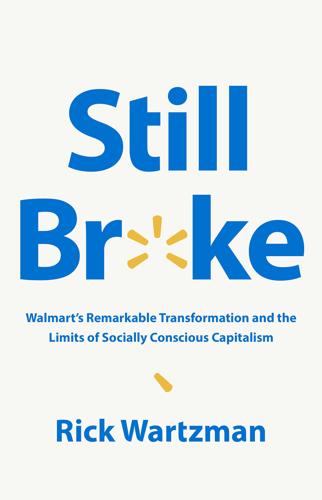
Still Broke: Walmart's Remarkable Transformation and the Limits of Socially Conscious Capitalism
by
Rick Wartzman
Published 15 Nov 2022
“Hey, before we go any further with this,” she said, “I feel like you need to know that I protested against your company when I was in high school and college.” Gehrki was unfazed. “We need you to come help us,” she told Agnew. One of Agnew’s first assignments was to talk with Maureen Conway of the Aspen Institute. Like Auguste, Conway tried to emphasize that training workers could be beneficial—for them and for the company—but it was no substitute for paying people what they needed to live on. “You have to think about economic stability and not just economic mobility,” said Conway, who in April 2014 had coauthored a paper on the topic.
…
I am lucky to have her in my corner. Those at the Drucker Institute are more like family than colleagues. In ways big and small, they have my back—one of many reasons the institute is the perfect perch from which to write. I am grateful to them all. As I puzzled out my conclusions, Miguel Padro of the Aspen Institute Business and Society Program was an invaluable sounding board. Gary Claxton of KFF, one of the nation’s leading experts on employer-provided health coverage, shared his expertise. And Michael Schultz of NORC and Molly Kinder of the Brookings Institution made me wrestle harder with what it would take to institute a living wage in this country.
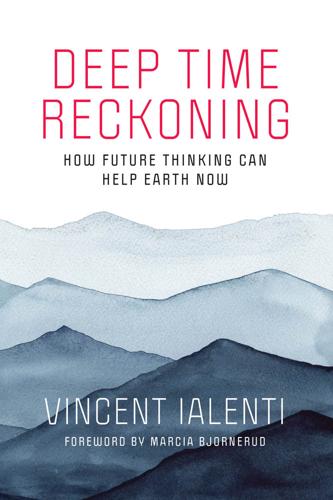
Deep Time Reckoning: How Future Thinking Can Help Earth Now
by
Vincent Ialenti
Published 22 Sep 2020
It could be a United Nations project, an association funded by big philanthropies, or an offshoot of several professional organizations. The organizations could collaborate to establish a more broadly framed “supra-association” focused on long-term thinking. It could hold events in the spirit of the Aspen Institute: a global nonprofit think tank for idea exchange and leadership devoted to the common good. It could have a journal, conferences, a magazine, a website, and a yearly global summit. To enhance public outreach during the deflation of expertise, it could take cues from the space exploration advocacy organization, the Planetary Society.
…
INDEX Aalto University, 10, 73 Aapo (Greenland Analogue Project expert), 50–52 Adams, Barbara, 112 Adventurous learning, 157 Afghanistan, refugees from, 9 Äikäs, Timo, 33 “Alternative fact,” 28 Ammattikorkeakoulut, 73 Analogue monuments, 150 Analogues analogous reasoning and research, 53–54 forest analogy, Laura’s, 94–95, 98, 101, 102, 105–106, 110, 116, 120 as interscalar vehicles, 57 and multiple lines of reasoning, 54–57, 66–67 natural, defined, 161 other resources and tools, 65–66 Anders (Swedish expert), 49–50, 51–52, 58, 65 Anthropocene, xiii, 2, 4, 14–18, 157, 167n20 characteristics and questions, 5–7 and deflation of expertise, 36 Anthropocene Poetics: Deep Time, Sacrifice Zones and Extinction (Farrier), 66 Anthropocene Working Group (IUGS), 14–15 Ants, Sisyphean, 18–19, 88 Archaeological Analogues, 46–48, 157 Areva-Siemens, 100 Art of War, The (Sun Tzu), xiv Asiat riitelevät, eivät ihmiset, 157 Aspen Institute, 115 Atlas Obscura, 58, 62 Atomic Age, and the Anthropocene, 15 “Atomic Priesthood,” 24 Attunement, 157 B+Tech, 10, 19 Ballard, J. G., 151 Bateson, Gregory, 135 BBC, 33 Bechtel Corporation, 24 Bede, 151 Beneford, Gregory, 3, 23 Bergson, Henri, 151 Bhopal, 31 Big Bang, 91 Big History, 70, 157 Biosphere Assessment and assessors, 20, 157–158 Bjornerud, Marcia, 102 Bothnia, Gulf of, 4 Boyer, Dominic, 135 Brand, Stewart, 39 British Petroleum (BP), oil spill, 31 Buffon, Comte de, 167n20 Bureaucracy, in Finland’s institutions, 77 Burke, Edmund, 101 Canticle for Liebowitz, A (Miller), 147 Case Pyhäjoki, 34 Cats, bioengineering of (proposed), 24 Center for the Study of Existential Risk (Cambridge), 3 CGIAR Climate Analogues Project, 54, 66, 158 Chakrabarty, Dipesh, 15 Chernobyl, 31, 100 Climate Scenarios for Olkiluoto on a Time-Scale of 120,000 Years, 12 Cold War, Finland during, 102 Comb Ceramic cultures, 98 Complementary Considerations (report), 56, 67, 158 Computer simulation.
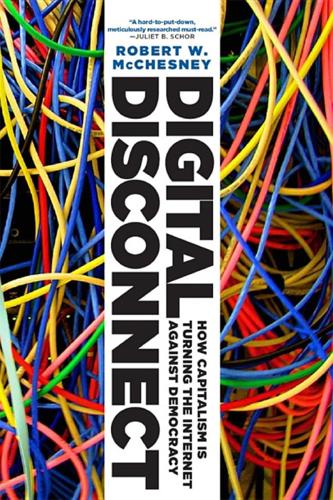
Digital Disconnect: How Capitalism Is Turning the Internet Against Democracy
by
Robert W. McChesney
Published 5 Mar 2013
Kenneth David Nichols, The Road to Trinity: A Personal Account of How America’s Nuclear Policies Were Made (New York: William Morrow, 1987), 34–35. 24. Wu, Master Switch, 276. 25. Eden Medina, Cybernetic Revolutionaries: Technology and Politics in Allende’s Chile (Cambridge, MA: MIT Press, 2011). 26. Richard Adler, Updating Rules of the Digital Road: Privacy, Security, Intellectual Property (Washington, DC: Aspen Institute, 2012), 4. 27. Rebecca MacKinnon, Consent of the Networked: The Worldwide Struggle for Internet Freedom (New York: Basic Books, 2012), 18–19. 28. Heather Brooke, The Revolution Will Be Digitised: Dispatches from the Information War (London: Heinemann, 2011), 24. See also Johan Soderberg, Hacking Capitalism: The Free and Open Source Software Movement (New York: Routledge, 2008). 29.
…
See Ryan Ellis, “Binding the Nation Together? Postal Policy in the Era of Competition,” International Communication Association Conference, San Francisco, May 2007, 57–65. 36. Nowak, Sex, Bombs and Burgers, 206. 37. Richard Adler, Updating Rules of the Digital Road: Privacy, Security, Intellectual Property (Washington, DC: Aspen Institute, 2012), 4. 38. Curran, “Rethinking Internet History,” 45. 39. Tim Berners-Lee, Weaving the Web (New York: HarperCollins, 1999), 197–98. 40. Project Censored, http://www.projectcensored.org/top-stories/articles/category/top-stories/top-25-of-1996/page/3. 41. This story is brilliantly told in Fred Turner, From Counterculture to Cyberculture (Chicago: University of Chicago Press, 2006). 42.
…
James Ball, “Me and My Data: How Much Do the Internet Giants Really Know?” The Guardian, Apr. 22, 2012. 148. Tanzina Vega, “Opt-Out Provision Would Halt Some, But Not All, Web Tracking,” New York Times, Feb. 27, 2012, B1. 149. Cited in Richard Adler, Updating Rules of the Digital Road: Privacy, Security, Intellectual Property (Washington, DC: Aspen Institute, 2012), 10. 150. Murphy, “How to Muddy Your Tracks.” 151. The one area that would be most likely to motivate Americans into action is online data collection and advertising to children. Perhaps the one great legislative victory in the public interest was 1998’s Children’s Online Privacy Protection Act (COPPA).
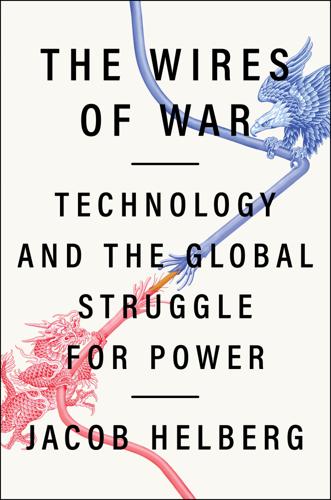
The Wires of War: Technology and the Global Struggle for Power
by
Jacob Helberg
Published 11 Oct 2021
This alliance should be expanded geographically, to include a preapproved group of allies like Japan (which is keenly aware of China’s growing technological might), France, Germany, and Norway. The foundations for such a bloc are already apparent, whether through that prospective Japanese-Indian-Australian supply-chain partnership, ideas like the Aspen Institute’s proposal for a Tech 10,46 or UK prime minister Boris Johnson’s proposal to expand the G7 to a new D-10—a ten-nation democratic coalition that can collaboratively fund and create alternatives to Chinese 5G technology.47 In late November 2020, the E.U. proposed a Transatlantic Trade and Technology Council with the United States, to establish shared technology standards and coordinate issues like screening foreign investors.48 Components manufactured in these countries—whether drones or database servers—would be considered as secure as if they were produced in Boston or Virginia.
…
Cicilline.” 5 Ibid. 6 Ibid. 7 Sanger, The Perfect Weapon, xi. 8 Noah Smith, “Interview: Marc Andreessen, VC and tech pioneer,” Substack, June 22, 2021, https://noahpinion.substack.com/p/interview-marc-andreessen-vc-and. 9 Margaret O’Mara, The Code: Silicon Valley and the Remaking of America (New York: Penguin Press, 2019), 15. 10 Ibid., 18. 11 Ibid., 36. 12 “Tech-Politik: Historical Perspectives on Innovation, Technology, and Strategic Competition,” Center for Strategic and International Studies, December 19, 2019, https://www.csis.org/analysis/tech-politik-historical-perspectives-innovation-technology-and-strategic-competition. 13 O’Mara, The Code, 24. 14 Liz Jacobs, “GPS, lithium batteries, the internet, cellular technology, airbags: A Q&A about how governments often fuel innovation,” TED Blog, October 28, 2013, https://blog.ted.com/qa-mariana-mazzucato-governments-often-fuel-innovation/. 15 “Technology and National Security: Maintaining America’s Edge,” Aspen Institute, February 7, 2019, https://www.aspeninstitute.org/publications/technology-and-national-security-maintaining-americas-edge/. 16 David B. Green, “This Day in Jewish History, 1998: Two Computer Scientists Who Disagreed on Everything Found Google,” Haaretz, September 4, 2015, https://www.haaretz.com/jewish/2-computer-scientists-found-google-1.5394903. 17 “Technology and National Security: Maintaining America’s Edge.” 18 “(U) Review of the Unauthorized Disclosures of Former National Security Agency Contractor Edward Snowden,” U.S.
…
Witt, “Prepare for the U.S. and China to Decouple,” Harvard Business Review, June 26, 2020, https://hbr.org/2020/06/prepare-for-the-u-s-and-china-to-decouple. 44 “Trump again raises idea of decoupling economy from China,” Reuters, September 15, 2020, https://www.reuters.com/article/us-usa-trump-china/trump-again-raises-idea-of-decoupling-economy-from-china-idUSKBN25Y1V9. 45 Jacky Wong, “Beijing Still Wants Microchips Made in China,” Wall Street Journal, April 17, 2020, https://www.wsj.com/articles/beijing-still-wants-microchips-made-in-china-11587125377. 46 Joseph S. Nye Jr. and Condoleezza Rice, “The Struggle for Power: U.S.-China Relations in the 21st Century,” Aspen Institute, 2020, https://assets.aspeninstitute.org/content/uploads/2020/01/TheStruggleForPower.pdf?_ga=2.61349548.1878621097.1579623448-1739069731.1574791461. 47 Lucy Fisher, “Downing Street plans new 5G club of democracies,” The Times, May 29, 2020, https://www.thetimes.co.uk/article/downing-street-plans-new-5g-club-of-democracies-bfnd5wj57. 48 Jakob Hanke Vela and David M.

Tomorrow's Capitalist: My Search for the Soul of Business
by
Alan Murray
Published 15 Dec 2022
Piling on, the Drucker Institute’s Rick Wartzman, who had once worked with me in the Washington bureau of the Wall Street Journal, wrote a scathing verdict in Fast Company, noting that for all its efforts to address pressing social issues, “the Roundtable is failing in an area that lies at the very core of the connection between business and society: It continues to elevate shareholders’ interests above everybody else’s.”2 As chairman of the BRT, Dimon was taken aback by the criticism. In October 2018, he chose to face the critics head-on, inviting Pearlstein, Wartzman, Judy Samuelson from the Aspen Institute, and several others to an off-the-record dinner at JPMorgan headquarters. The dinner was friendly at first, but grew testy. Dimon attempted to explain his position, which was that most BRT companies were already giving serious attention to a range of stakeholders when they made decisions—effectively transgressing the statement of purpose.
…
It’s been said that companies today are taking on unsolvable problems and solving them, while government is staring at solvable problems and doing nothing. That’s why Marc Benioff calls business “the greatest platform for change.”2 UNFINISHED BUSINESS In a book called The Six New Rules of Business, Judy Samuelson, founder of the Aspen Institute’s Business and Society Program, describes the fundamental changes that have occurred as hard assets and financial capital have become less important, and reputation, intellectual property, and human capital have become more so.3 Like me, Samuelson believes those changes have led business to focus more directly on its impact on society—a change reflected in the Business Roundtable’s statement on stakeholder capitalism in 2019.
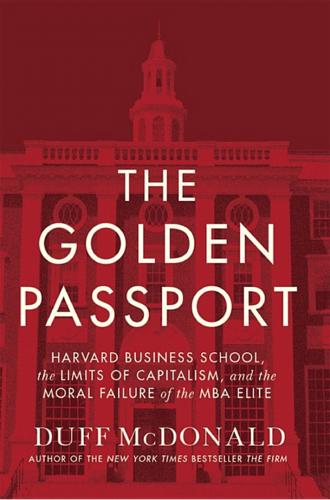
The Golden Passport: Harvard Business School, the Limits of Capitalism, and the Moral Failure of the MBA Elite
by
Duff McDonald
Published 24 Apr 2017
“Employers were increasingly enthusiastic about hiring business school students, [but] they seemed to care very little about whether students had been inculcated with such professional attitudes as communalism, disinterestedness, and a social orientation,” writes Khurana, “norms that had been central to the rationale for creating university-based business schools in the first place.”9 Recent studies by the Aspen Institute show that when students enter business school, they believe that the purpose of a corporation is to produce goods and services for the benefit of society. When they graduate, they believe that it is to maximize shareholder value. John McArthur, then dean of HBS, liked Jensen’s message and invited him to HBS as a visiting professor in 1984.
…
Yet if you look at the discussions going on in the press, there’s very little attention paid to compensation committees.” So it was the media’s fault. (Isn’t is always?) Also: What press had he been reading? The issue had been given more than enough attention for more than a decade. In 2008, the Aspen Institute published “Long Term Value Creation Principles,” which included a section on the “appropriate structure” of compensation. It all made perfect sense, including the ideas that executives be forced to hold their equity compensation for a period beyond their tenure (thus seeking to avoid the juicing of short-term results at the expense of long-term value), the use of “clawbacks,” and transparency in the timing of equity awards.
…
Davis, “Corporate Power in the 21st Century,” in Subramanian Rangan, ed., Performance and Progress: Essays on Capitalism, Business and Society (Oxford, U.K.: Oxford University Press, forthcoming). 8“At the Center of Corporate Scandal Where Do We Go From Here?,” HBS Working Knowledge, March 16, 2003, http://hbswk.hbs.edu/item/at-the-center-of-corporate-scandal-where-do-we-go-from-here. 9“Long-Term Value Creation Principles,” Aspen Institute, accessed January 27, 2016, http://www.aspeninstitute.org/policy-work/business-society/Corporate-Values-Strategy-Group-Curbing-Short-Termism/Long-Term-Value-Principles. 10Suzanne Mettler, “From Pioneer Egalitarianism to the Reign of the Super-Rich: How the U.S. Political System Has Promoted Equality and Inequality over Time,” Tax Law Review, April 1, 2015, p. 606. 11Walter Kiechel, “The Management Century,” Harvard Business Review, November 2012, accessed July 29, 2015, https://hbr.org/2012/11/the-management-century. 12Barbara Kellerman, The End of Leadership (New York: HarperBusiness, 2012), p. 117. 13Graham Kenny, “How Boards Can Rein in CEO Pay,” Harvard Business Review, December 1, 2014, https://hbr.org/2014/12/how-boards-can-rein-in-ceo-pay 14Thomas Piketty, Emmanuel Saez, and Stefanie Stantcheva, “Optimal Taxation of Top Labor Incomes: A Tale of Three Elasticities,” working paper, National Bureau of Economic Research, November 2011, http://www.nber.org/papers/w17616. 15Sureyya Burcu Avci, Cindy A.
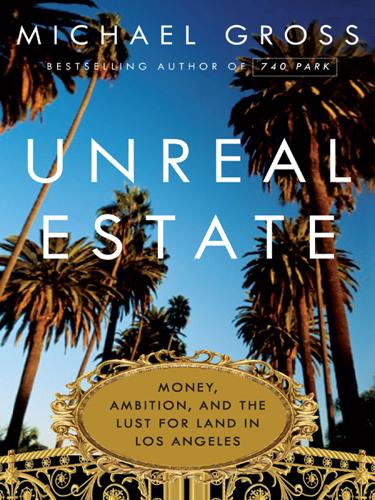
Unreal Estate: Money, Ambition, and the Lust for Land in Los Angeles
by
Michael Gross
Published 1 Nov 2011
At UCLA, their name is on the Stewart and Lynda Resnick Neuropsychiatric Hospital, partly financed with a $15 million gift from the duo, and they’ve also given $3 million toward a new medical sciences building. They donated $20 million for a Resnick Sustainability Institute to study energy technology at Caltech, and have given generously to the Aspen Institute.41 Less noisily, big money’s gone to Conservation International and Bard College, which runs a charter school, the Paramount Bard Academy, one of a number of schools and scholarship funds for Paramount employee children that the Resnicks have funded in the Central Valley. Smaller amounts go to a range of causes, from the King Hussein Foundation and the Vaclav Havel Library to the United Jewish Foundation and the U.S.
…
Smaller amounts go to a range of causes, from the King Hussein Foundation and the Vaclav Havel Library to the United Jewish Foundation and the U.S. Department of Agriculture’s research service, which has studied navel orangeworms in pistachios. They also give their time. Lynda sits on the board of the Aspen Institute, where she chairs the Communications Committee; UCLA Medical Sciences; the Prostate Cancer Foundation; and the Milken Family Foundation. She is also a trustee of the Philadelphia Museum of Art, which got $1 million from the couple in 1987, when they owned the local Franklin Mint, to endow the gallery where van Gogh’s Sunflowers hangs.
…
Battered by several years of declining sales and competition from eBay, the Resnicks laid off two-thirds of the Franklin Mint’s employees in 2003 and sold it three years later. 41. In 1997, the Resnicks moved into a new vacation home they’d built on seventy acres outside Aspen, but as in many high-end resort communities, they were disdained by locals as part-time residents—and showy ones at that. Even after the couple made large donations to the Aspen Institute (along with the Aspen Skiing Corporation, one of the two tent-pole institutions in the former mining town) and Lynda was named to the board of the liberal think tank in 1999, the local newspaper continued to call them part-timers. Some of the animosity stemmed from lawsuits filed by the Resnicks in 2000 and 2001 to stop Aspen from building seventeen units of much-needed low-cost housing for local service employees a half mile from Little Lake Lodge, as they call their vacation home, claiming it would devalue the property.
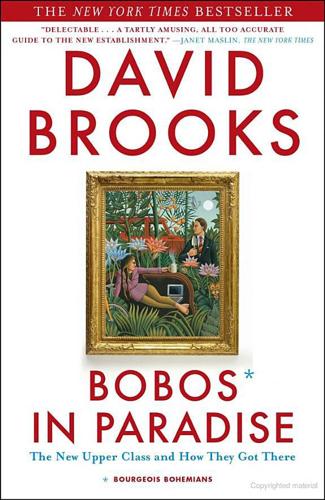
Bobos in Paradise: The New Upper Class and How They Got There
by
David Brooks
Published 1 Jan 2000
New codes are in place that are different from the old codes but serve many of the same social functions of giving order and coherence to life. American social life, for example, is just as hierarchical as it was in the 1950s, maybe more so. Hierarchies based on connections have given way. Under the code of the meritocrats, people are more likely to be judged by their posts. Invitations to Renaissance weekends, Aspen Institute seminars, Esther Dyson technology conferences, and exclusive private dinners are all determined by what job you have. If you have a prestigious position, your social life is secure. You will find constant validation by surrounding yourself with people as accomplished as or even more accomplished than you are, and you will come to relish what might be called the joy of summits.
…
Imagine, for example, our worldly intellectual, now middle-aged and well established, at a dinner for the Society for the Preservation of Historic Chicago at the Drake Hotel. All night long she has been telling stories about Ted Koppel (emphasizing her recent Nightline appearance) and Bill Bradley (recounting their joint Aspen Institute conference in August). She’s kept the bankers and lawyers and doctors at her table enthralled. They retire afterward to the hotel bar for seven-dollar martinis and are joined by a consultant from Deloitte & Touche and his wife, a partner at Winston & Strawn—a two-ampersand couple. She is just as amusing at the bar, filling the air with inside dope about the publishing industry and magazine gossip.

What Would Google Do?
by
Jeff Jarvis
Published 15 Feb 2009
Rather came from an era of control when journalists were taught, ironically, to hide things from the public—sources, research, decision-making, and opinions. “Judge us by our product, not our process,” a former network news president told me in a discussion about journalistic transparency at the Aspen Institute. But today, on the internet, the process has become the product. By revealing their work as it progresses, journalists can be transparent about how they operate and can open up the story for input from the public. Bloggers purposely post incomplete knowledge so they can get help to make it complete.
…
I want to thank Peter Hauck, Margaret Kimble, Scott Karp, Clay Shirky, David Weinberger, Doc Searls, Jay Rosen, Rishad Tobaccowala, Fred Wilson, Paulo Coelho, Paula Bracconot, Gary Vaynerchuk, Edward Roussel, Tom Evslin, Seth Godin, Craig Newmark, Samir Arora, Marc Benioff, Chris Bruzzo, Peter Osnos, Jim Louderback, Mark Zuckerberg, Dave Winer, Umair Haque, Martin Nisenholtz, Jeffrey Rayport, Andrew Heyward, Kevin Rose, David Cohn, Dave Morgan, Nick Denton, Scott Heiferman, Chris Anderson, Steven Johnson, Ken Layne, Matt Welch, Caterina Fake, Stewart Butterfield, Bob Garfield, Jimmy Wales, Joan Feeney, Bob Wyman, Will Richardson, Andrew Tyndall, Rick Segal, Bonnie Arnold, Tim O’Reilly, Henry Copeland, Marcel Reichert, Stephanie Czerny, Jochen Wegner, Hubert Burda, Wolfgang Blau, Claudia Gonzalez Gisiger, the World Economic Forum, the Aspen Institute, Lionel Menchaca, Richard@Dell, Michael Dell, and Dell itself. Note that I am not thanking Google. I am grateful for Google’s existence, its lessons, and its inspiration—not to mention Marissa Mayer’s quotable advice online. But I want to note that I did not seek access to Google for this book because I wanted to judge it and learn from it at a distance.

The Power of Pull: How Small Moves, Smartly Made, Can Set Big Things in Motion
by
John Hagel Iii
and
John Seely Brown
Published 12 Apr 2010
We’ve already seen how Yossi Vardi parks himself in the lobby at big conferences to make himself accessible to the beneficial effects of serendipity. Jack Hidary adds an enhancement to that approach by actually going to conferences—or breakouts within larger conferences—that are devoted to topics he knows nothing about. That’s how he ended up getting involved in clean technology. He was attending the Socrates seminars at the Aspen Institute and on a whim wandered into a presentation being made at an Aspen Energy Forum in the same building. At first he sat in the back, listening to what seemed like a foreign language—a set of acronyms and jargon particular to the people familiar with the energy domain. Gradually he began talking to the other participants, learning, making connections between energy and what he knew from other domains.
…
Index Access, as first level of pull introducedig of limited value to resources for survival, success scalability increased by Internet in specialized domains through pull platforms Achieve, as level of pulligig introduced through shaping strategies Agassi, Shai pulls from top of SAP reshapes transportation around renewable resources uses pull to change the world Ahmadinejad, Mahmoud Al Jazeera news network Amazon Ambient Findability (Morville) Amplifiers to increase unexpected encounters Android communications technology Anticipated demand in push systems. See Demand forecasts AOL Apparel industry Apple Apple Computer Application programming interfaces (APIs) Archimedes ARM Ask.com Aspen Institute Socrates seminars Astronomy as creation platform Athletic shoes industries Attention allocating attracting, sustaining, with online social networks enhancing the productivity of reciprocity of those sharing passions teasers Attract, as second level of pullig introducedig techniques for drawing people and resources Attraction leading to serendipity with people on edges Bank of America Banzai Pipeline, Oahu, Hawaii Barber, Elinor Barger, Kai Bassij militia Beacon sending Beer brewing example Beginner’s mind Benioff, Marc Berkman Center, Harvard Law School Bernays, Edward Best Buy Better Place Big Shift described first wave: digital infrastructural second wave: knowledge flows third wave: institutional innovations Big wave surfing as a creation space as example of profession as passion expulsion protocols and knowledge flows performance envelopes pushed as physical platform pro tour Bing Blizzard Entertainment Blogs or blogosphere Body Glove Bonner, Sean Boredom in push systems Boston Consulting Group (BCG) Branson, Richard Brin, Sergey Burma.
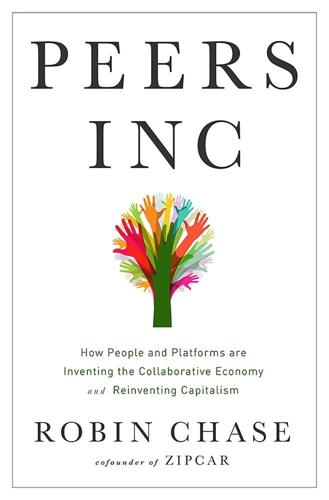
Peers Inc: How People and Platforms Are Inventing the Collaborative Economy and Reinventing Capitalism
by
Robin Chase
Published 14 May 2015
These are the companies that cracked the kernel platform-building stage, are experiencing the exuberant growth of the everybody-welcome stage, and are therefore the ones who raised the most money. While a good fraction of the value is likely the result of a bubble, the potential of the three Peers Inc miracles to deliver—based on fast-paced growth, fast learning, and speedy low-cost localization—is worth a lot to investors. In the summer of 2014, I was at a roundtable meeting at the Aspen Institute. One of the participants suggested that the huge valuations for Peers Inc companies gives these startups large amounts of “cheap” capital to play with, and therefore the ability to buy growth rather than earn it. Lyft and Uber are fierce competitors in the new app-based medallion-free taxi market.
…
Unfortunately, some of these regulations are pointless and outdated, serving the best interests of no one, or are blatantly anti-competitive, existing solely to prevent competition. What happens when the speed of innovation outstrips the pace of regulation? Enter Dan Doney, chief innovation officer of the Defense Intelligence Agency, who explained this to me in a way I hadn’t understood before. I met Dan when I was at the Aspen Institute in the summer of 2014. We were together in a roundtable of a dozen or so professionals with diverse sector expertise. One person would lead off a topic with a ten-minute exposition (I did the leading for two sessions for two roundtables with the Peers Inc thesis), and then we’d have a passionate roundtable discussion that tended to be dominated by a few people and featured lots of interruptions.
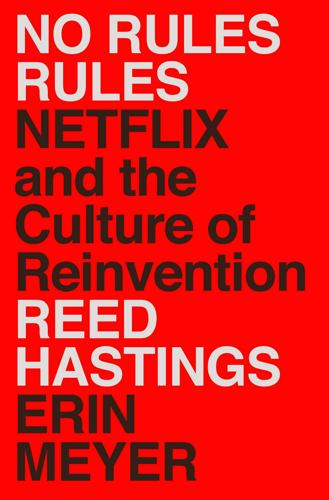
No Rules Rules: Netflix and the Culture of Reinvention
by
Reed Hastings
and
Erin Meyer
Published 7 Sep 2020
Answer from Reed: remove the umbrella My response to Quiz Scenario 1 is (b): continue sharing quarterly financial data with employees before announcing it publicly—while also warning them about the dire potential consequences of leaks. I first learned about open-book management in 1998. Netflix was one year old, and I attended a leadership development course at Aspen Institute. There were executives from many companies and we discussed several provocative readings. One of them was a case study about a manager called Jack Stack. Jack, a manager in Springfield, Missouri, successfully revives a remanufacturing plant once owned by International Harvester. The plant is about to be closed but he raises money and stages a leveraged buyout.
…
A Academy Awards, xvii, 165, 233 “accept or discard” feedback guideline, 31, 33 accidents and safety issues, management style and, 213–14, 269–71 “actionable” feedback guideline, 30, 31, 33, 36, 193, 257 “adapt” feedback guideline, 264 “aim to assist” feedback guideline, 30, 31, 33, 36 Airbnb, 136 Alexa and Katie, 145 alignment, 217–18, 231 on a North Star, 218–21 as tree, 221–31 Allmovie.com, 87 Amazon, 3, 81, 97, 136, 208, 232 Prime, 146, 148 amygdala, 21 Anitta, 97 annual performance reviews, 191 Antioco, John, xi–xii AOL, xviii, 236 Apple, xvii, 77, 97 “appreciate” feedback guideline, 31, 33 Arc de Triomphe, 268–69 Ariely, Dan, 83 Armstrong, Lance, 207, 232–33 Aronson, Elliot, 124 Aspen Institute, 107–8 autonomy, 133 see also decision-making; decision-making approvals, eliminating Avalos, Diego, 151 B Ballad of Buster Scruggs, The, xviii Ballmer, Steve, 122–23 Baptiste, Nigel, 64–66, 68 Bazay, Dominique, 223, 224, 227–31 Bde Maka Ska, 267, 268 Becker, Justin, 35–36 belonging cues, 24–25 bet-taking analogy, 138–40, 153–57, 225–27 Bird Box, 165 Blacklist, The, 26 Black Mirror, 157–59 Blitstein, Ryan, 52 Blockbuster, 3, 171, 236 bankruptcy of, xii, xviii late fees of, 3 Netflix’s offer to, xi–xii size of, xi, xii bonuses, 80–84 Booz Allen Hamilton, 81 brain: feedback and, 20, 21 secrets and, 103 Branson, Richard, xxiv, 50 Brazil, 137, 150, 224–26, 243, 247, 249–51, 257, 264 Brier, David, xxiv brilliant jerks, 34–36, 200 Brown, Brené, 123 Bruk, Anna, 123–24 Bull Durham, 169 Bullock, Sandra, 165 bungee jumping, 194–95 C Canada, 241 candor, 18–21, 141, 175 cultural differences around the world, 250-55, 260, 263–64 culture of, 22–23 dentist visits compared to, 190–91 as disliked but needed, 20–22 failure to speak up, 18, 27, 141 increasing, xx, xxi, 1, 12–37, 72, 100–127, 188–205 jerks and, 34–36 misuse of, 29, 30, 36 “only say about someone what you will say to their face,” 15, 189–90 performance and, 17–20 and readiness to release decision-making controls, 133–35 saying what you really think with positive intent, 13–37 see also feedback; transparency Carey, Chris, 181 Caro, Manolo, 137 Caruso, Rob, 113–14 Casa De Papel, La, xviii celebrating wins, 140, 152 Chapman, Jack, 86 Chase, Chevy, 222 cheating, 62–64 Chelsea, 115–16 children’s programming, 144–45, 226–31 Choy, Josephine, 252–54, 257 Christensen, Nathan, 51 circle of feedback (360-degree assessments), 26–27, 189–205 benefits of, 202–3 discussion facilitated by, 194 in Japan, 256 live, 197–203 stepping out of line during, 200–201 tips for, 199–200 written, names used in, 191–97 Cobb, Melissa, 221–27, 231 Coen, Joel and Ethan, xii Coherent Software, 101, 104 collaboration, 170, 178 Colombia, 251 Comparably, xvii competitiveness, internal, 177–78 compliments and praise, 21, 23 computer software, 77–78, 216 conformity, 141–42 connecting the dots, xxiv first dot, 10–11 second dot, 36 third dot, 69 fourth dot, 98 fifth dot, 125 sixth dot, 160 seventh dot, 185 eighth dot, 203–4 ninth dot, 233 last dot, 264–65 consensus building, 149 contagious behavior, 8–10 context, see leading with context, not control contract signing, 149–51 control, leadership by, 209 ExxonMobil example of, 213–14 leading with context versus, 209–12 see also leading with context, not control controls, removing, xx, xxi, 1, 38–72, 128–61, 206–36 decision-making approvals, 129–61 bet-taking analogy in, 138–40, 153–57, 225–27 Informed Captain model in, 140, 149–52, 216, 223, 224, 231, 248 and picking the best people, 165–66 readiness for, 133–35 signing contracts, 149–51 travel and expense approvals, 55–72 cheating and, 62–64 company’s best interest and, 58, 59, 61, 66, 68–69 context and, 59–62 Freedom and Responsibility ethos and, 60–62 frugality and, 64–69 vacation policy, xv, 39–53, 56, 69–70 freedom and responsibility and, 52–53 Hastings’ nightmares about, 40–41, 42, 44 Hastings’ vacations, 44, 45, 47 Japanese workers and, 46–47 leaders’ modeling and, 42–47 loss aversion and, xv–xvi and setting and reinforcing context to guide employee behavior, 48–49 value added by, 50–52 see also leading with context, not control corporate culture, xiii of Netflix, xiii, xxii, xxiii, 45 Netflix Culture Deck, xiii–xvi, 172–73 Costa, Omarson, 150–51 coupling: alignment and, 218 loose versus tight, 215–17 Coyle, Daniel, 24 creative positions, 78–79, 83–84 criticism (negative feedback), 19–21, 23 belonging cues and, 24 brain and, 20, 21 cultural differences around the world, 251, 261 as disliked but needed, 20–22 language used in, 251–52 responding to, 24, 31 upgraders and downgraders in, 251–52 see also feedback Crook-Davies, Danielle, 19–20 Crown, The, xvii Cryan, John, 82–83 Cuarón, Alfonso, xii, 165 cultural differences around the world, see global expansion and cultural differences Culture Code, The (Coyle), 24 culture map, 242–50 Culture Map, The (Meyer), xxii, 19, 242–50 culture of freedom and responsibility, see Freedom and Responsibility D Daring Greatly: How the Courage to Be Vulnerable Transforms the Way We Live, Love, Parent, and Lead (Brown), 123 Dark, xvii days off, 39–40 see also vacation policy, removing decision-making: dispersed, 216–17 innovation and, 130, 131, 135, 136 and leading with context, 210, 216, 217 to please the boss, 129–30, 133, 152–53 pyramid structure for, 129, 221–23 spreadsheet system and, 143–44 talent density and, 131 transparency and, 131 decision-making approvals, eliminating, 129–61 bet-taking analogy in, 138–40, 153–57, 225–27 Informed Captain model in, 140, 149–52, 216, 223, 224, 231, 248 and picking the best people, 165–66 readiness for, 133–35 signing contracts, 149–51 Del Castillo, Kate, 138 Del Deo, Adam, 207–9, 232–33 Disney, 144, 221, 222, 226, 227 dissent, farming for, 140–44, 158 diversity, 241 Dora the Explorer, 145 Dormen, Yasemin, 157–59 dot-com bubble, 4 dots, see connecting the dots downloading, 146–48 dream teams, 76 DreamWorks, 145, 221, 226 driver feedback, 22 Dutch, Netherlands, 242, 243, 246, 248, 251, 261–63 DVDs, 3–4, 5, 129 Qwikster and, 140–42 shift to streaming from, xii, xvii, 140–41, 236 E Edmondson, Amy, xv Eichenwald, Kurt, 176 Eisner, Michael, 195 elephants, penguins versus, 174 Elite, xvii Emmy Awards, xvii, 145 “Emperor’s New Clothes” syndrome, 23–29 empowerment, 109, 133, 134 see also decision-making; decision-making approvals, eliminating; Freedom and Responsibility Engadget, 158 Enron, xiii entrepreneurship, 138 error prevention, and management style, 213–14, 220, 269–71 Escobar, Pablo, 132 Estaff meetings, 218–19, 243 Evening Standard, 25 Eventbrite, 50 expenses, see travel and expenses; travel and expense approvals, removing experimentation, 138 Explorer project, 154–55, 157 Express, 158 ExxonMobil, 213–14 F Facebook, xiii, 77, 97, 130, 137, 195 failures, 140, 152–59 asking what learning came from the project, 153, 155 not making a big deal about, 153–55 sunshining of, 153, 155–59 family business metaphor, 166–68 moving to sports team metaphor from, 168–70, 173–74 farming for dissent, 140–44, 158 Fast Company, xxiv, 213 fear of losing one’s job, xv, 178–80, 183–84 Fearless Organization, The (Edmondson), xv FedEx, 139 feedback, 14–17, 139, 175, 190, 240 annual performance reviews and, 191 belonging cues and, 24 brain’s response to, 20, 21 circle of (360-degree assessments), 26–27, 189–205 benefits of, 202–3 discussion facilitated by, 194 in Japan, 256 live, 197–203 stepping out of line during, 200–201 tips for, 199–200 written, names used in, 191–97 cultural differences and, 250-57, 260, 261–64 for drivers, 22 “Emperor’s New Clothes” syndrome and, 23–29 failure to speak up with, 18, 27, 141 4A guidelines for, 29–36, 255, 264 accept or discard, 31, 33 actionable, 30, 31, 33, 36, 193, 257 adding 5th A to (adapt), 264 aim to assist, 30, 31, 33, 36 appreciate, 31, 33 cultural differences and, 260 for giving feedback, 30 for receiving feedback, 31 frequency of, 18 Hastings and, 26–29 honesty in, 18; see also candor Japanese culture and, 251–57 loop of, 22–23 Meyer and, 19, 32 negative (criticism), 19–21, 23 belonging cues and, 24 brain and, 20, 21 cultural differences around the world, 251, 261 as disliked but needed, 20–22 language used in, 251–52 responding to, 24, 31 upgraders and downgraders in, 251–52 positive, brain and, 21 responding to, 24, 31 and speaking and reading between the lines, 253 spreadsheet system for gathering, 143–44 survey on, 21–22 teaching employees how to give and receive, 29–32 from teammates, 199 when and where to give, 31–34 see also candor Felps, Will, 8–9 firing, see letting people go Fisher Phillips, 50 five-year plans, 219–20 Flint, Joe, 178 flexibility, and leading with context or control, 220, 221 Fogel, Bryan, 207–8, 233 4K ultra high definition televisions, 65–66 Fowler, Geoffrey, 65–66 Fox, 221 France, 240, 251 Paris, 268–69 Freedom and Responsibility (F&R), xx–xxi, 191, 236, 267, 268 expenses and, 60–62 first steps to, 1–72 Informed Captain model in, 140, 149–52, 216, 223, 224, 231, 248 next steps to, 73–161 techniques to reinforce, 163–236 vacations and, 52–53 weight of responsibility in, 150–52 Friedland, Jonathan, 196 Fuller House, 145 G Game of Thrones, 131–32 Garden Grove, Calif., 22 Gates, Bill, 78 General Electric (GE), 177–78 Germany, 147–48, 250–51 Gizmodo, 178 Gladwell, Malcolm, 142 Glassdoor, xv, 50 global expansion and cultural differences, 237–65, 239–65 adjusting your style for, 257–61 Brazil, 137, 150, 224–26, 243, 247, 249–51, 257, 264 candor and, 250–55, 260, 263–64 culture map, 242–50 feedback and, 250–57, 260, 261–64 Google and, 240–41 Japan, 46–47, 183, 224, 225, 257, 261 in culture map, 243, 247, 248 feedback and criticism in, 251–57 Japanese language, 252–53 360 process and, 256 Netherlands, 242, 243, 246, 248, 251, 261–63 Schlumberger and, 240–41 Singapore, 243, 246, 248, 251, 257–59, 261, 264 trust and, 248, 249 Golden Globe Awards, xvii, 76 Goldman Sachs, 177 Golin, 50 Google, xvii, 77, 94–96, 98, 136 global expansion of, 240–41 gossip, 189 Guillermo, Rob, 207 H Handler, Chelsea, 115–16 happiness, xvii Harvard Business Review, xxii Hastings, Mike, 87 Hastings, Reed: childhood of, 10, 13 at Coherent Software, 101, 104 downloading issue and, 146–48 feedback and, 26–27 interview with, 173–80 in leadership tree, 224–25 marriage of, 13–15 Meyer contacted by, xxii–xxiii Netflix cofounded by, xi, 3–4 in Netflix’s offer to Blockbuster, xi–xii in Peace Corps, xxii, xxiii, 14, 101, 239–40 Pure Software company of, xviii–xix, xxiv, 3, 4, 6, 7, 13–14, 55, 64, 71, 101, 122, 123, 236 Qwikster and, 140–42 HBO, 113–14, 208 Hewlett-Packard (HP), 66–67 hierarchy of picking, 165–66 Hired, xvii hiring: hierarchy of picking and, 165–66 talent density and, see talent density honesty, xvi, xxiii, 178 and spending company money, 58–59 see also candor; transparency hours worked, 39 House of Cards, xvii, 65, 75, 171, 236 HubSpot, xvii, 50 Huffington Post, xxii Hulu, 208, 232 humility, 123 Hunger Games, The, 176 Hunt, Neil, 41, 45, 94, 98, 154, 196 downloads and, 146, 148 and Netflix as team, not family, 173–74 360s and, 197, 198 vacations of, 41 I Icarus, 207–8, 232–33 India, 83, 84, 147–48, 224–26 Mighty Little Bheem in, 228–31 industrial era, 269, 271 industry shifts, xvii–xviii, xix Informed Captain model, 140, 149–52, 216, 223, 224, 231, 248 innovation, xv, xix, xxi, 84, 135–36, 155, 271–72 decision-making and, 130, 131, 135, 136 and leading with context or control, 214–15, 217 Innovation Cycle, 139–40 asking what learning came from the project, 153, 155 celebrating wins, 140, 152 failures and, 140, 152–59 farming for dissent, 140–44, 158 not making a big deal about failures, 153–55 placing your bet as an informed captain, 140, 149–52 socializing the idea, 140, 144–45, 158, 159 spreadsheet system and, 143–44 sunshining failures, 153, 155–59 testing out big ideas, 140, 146–48 International Olympic Committee, 232 internet, 146–48, 154 internet bubble, 4 iPhone, 130 Italy, 131–32 J Jacobson, Daniel, 166–68 Jaffe, Chris, 153–57 Japan, 46–47, 183, 224, 225, 257, 261 in culture map, 243, 247, 248 feedback and criticism in, 251–57 Japanese language, 252–53 360 process and, 256 jerks, 34–36, 200 Jobs, Steve, xxiv, 130 Jones, Rhett, 178 K karoshi, 46 kayaking, 180 Keeper Test, xiv, 165–87, 240, 242 Keeper Test Prompt, 180–83 Key Performance Indicators (KPIs), 81, 191, 209 Kilgore, Leslie, 14–15, 81, 94, 171 expense reports and, 61–62 on hiring and recruiters, 95–96 “lead with context, not control” coined by, 48, 208–9 new customers and, 81–82 signing contracts and, 149–50 360s and, 192, 193, 197, 198 King, Rochelle, 27–29 Kodak, xviii, 236 Korea, 224, 225 Kung Fu Panda, 221 L Lanusse, Adrien, 148 Latin America, 136, 241, 249 Brazil, 137, 150, 224–26, 243, 247, 249–51, 257, 264 Lawrence, Jennifer, 176 lawsuits, 175 layoffs at Netflix, 4–7, 10, 77, 168 leading with context, not control, 48, 207–36 alignment in, 217–18, 231 on a North Star, 218–21 as tree, 221–31 control versus context, 209–12 decision-making in, 210, 216, 217 Downton Abbey-type cook example, 211–12, 218 error prevention and, 213–14, 220, 269–71 ExxonMobil example, 213–14 Icarus example, 207–8, 232–33 innovation and, 214–15, 217 Kilgore’s coining of phrase, 48, 208–9 and loose versus tight coupling, 215–17 Mighty Little Bheem example, 228–31 parenting example, 210–11 spending and, 59–62 talent density and, 212, 213 Target example, 213–15 lean workforce, 79 letting people go, 173–76 “adequate performance gets a generous severance,” xv, xxii, 171, 175–76, 242 employee fears about, xv, 178–80, 183–84 employee turnover, 184–85 in Japan, 183 Keeper Test, xiv, 165–87, 240, 242 Keeper Test Prompt, 180–83 lawsuits and, 175 at Netflix, 185 Netflix layoffs in 2001, 4–7, 10, 77, 168 post-exit communications, 117–20, 183–84 quotas for, 178 LinkedIn, 50, 51, 137 Little Prince, The (Saint-Exupéry), 215 loose versus tight coupling, 215–17 Lorenzoni, Paolo, 131–33, 135, 138 loss aversion, xv–xvi Low, Christopher, 258–60 M Mammoth, 51 Management by Objectives, 209 Man of the House, 222 Massachusetts Institute of Technology, 83 McCarthy, Barry, 14–15, 56 McCord, Patty, 4–7, 9, 10, 15, 27–28, 41, 53, 71, 173 all-hands meetings and, 108 departure from Netflix, 171 expense policy and, 55, 60–61 financial data and, 110 salary policy and, 78, 81, 94, 96 team metaphor and, 169 360s and, 197–99 vacation policy and, 40, 43, 45, 52–53 Memento project, 156, 157 Mexico, 136–38 Meyer, Erin, xxii The Culture Map, xxii, 19, 242–50 Hastings’ message to, xxii–xxiii keynote address of, 19, 32 Netflix employees interviewed by, xxiii, 19–20 in Peace Corps, xxii micromanaging, 130, 133, 134 Microsoft, 78, 122, 176–78 Mighty Little Bheem, 228–31 Mirer, Scott, 200–201 mistakes, 121–25, 271–72 distancing yourself from, 157 management style and, 213–14, 220, 270 sunshining of, 157 see also failures Morgan Stanley, 123 Moss, Trenton, 50–51 Mr.
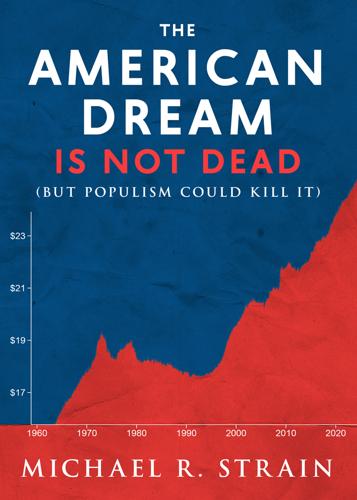
The American Dream Is Not Dead: (But Populism Could Kill It)
by
Michael R. Strain
Published 25 Feb 2020
I thank conference participants at Harvard and the University of Wisconsin for helpful feedback on an earlier version of this project. Some sections of the fifth chapter of this book draw on an essay I wrote for the Guardian in June 2019, and some sections of the sixth chapter draw on a paper I published with the Aspen Institute in February 2019. Several of the arguments in this book received their first airing by me in my Bloomberg column. I owe the most to my lovely wife, Carolyne. I would never have been able to finish this book on schedule without her support, patience, and encouragement. She endured too many nights and weekends with me holed up in the study working on this project.

The Code Breaker: Jennifer Doudna, Gene Editing, and the Future of the Human Race
by
Walter Isaacson
Published 9 Mar 2021
Christine Heenan, who was then vice president of communications at Harvard, was asked by Lander to help smooth things over. I had known Eric for a long time, and I was (and am) one of his alloyed admirers. So Heenan asked me to host a discussion with him for the press and scientific community at the Washington headquarters of the Aspen Institute, where I worked. Her goal was to tamp down the controversy by getting Lander to say that he hadn’t meant to minimize Doudna’s contributions to the CRISPR field. Lander tried to do what Heenan urged, albeit not in a way that could be described as valiantly. “My intention is not to diminish anybody,” he said, adding that Doudna was “a spectacular scientist.”
…
I hope this book would have. I’ve dedicated it to their memory. More from the Author Leonardo da Vinci The Innovators Kissinger The Wise Men Steve Jobs American Sketches ABOUT THE AUTHOR WALTER ISAACSON, a professor of history at Tulane, has been CEO of the Aspen Institute, chair of CNN, and editor of Time. He is the author of Leonardo da Vinci; The Innovators; Steve Jobs; Einstein: His Life and Universe; Benjamin Franklin: An American Life; and Kissinger: A Biography, and the coauthor of The Wise Men: Six Friends and the World They Made. SimonandSchuster.com www.SimonandSchuster.com/Authors/Walter-Isaacson @simonbooks ALSO BY WALTER ISAACSON Leonardo da Vinci The Innovators: How a Group of Hackers, Geniuses, and Geeks Created the Digital Revolution Steve Jobs American Sketches Einstein: His Life and Universe Benjamin Franklin: An American Life Kissinger: A Biography The Wise Men: Six Friends and the World They Made (with Evan Thomas) Pro and Con We hope you enjoyed reading this Simon & Schuster ebook.
…
Abbott, Tim, 455 Abbott Labs, 430 abortion, 293, 337 Abudayyeh, Omar, 425, 426, 428, 451 ACE2 protein, 404 Achenbach, Joel, 229 ACTN3 gene, 349 adenine, 26, 27 adenoviruses, 438, 456 Advanced Photon Source, 85–86 Aeschylus, 243 Afeyan, Noubar, 442, 447 African Americans COVID vaccines and, 461 as researchers, 461 sickle-cell anemia and, see sickle-cell anemia and skin color as disadvantage, 347–48 Watson’s comments on race, 37, 49, 386–92, 394 Agee, James, 265 AIDS and HIV, 166, 305, 390, 431 He Jiankui’s removal of HIV receptor in embryos, xv–xvi, 251, 303–13, 316–24, 369, 404 sperm-washing and, 305, 322 Alda, Alan, 221 Alexander, Lamar, 328 Alliance of Chief Executives, 116 Altman, Sidney, 44–45, 53 Alzheimer’s, 250, 251, 324, 339, 365 American Association for the Advancement of Science, 268 American Cancer Society, 465 American Masters: Decoding Watson (PBS documentary), 384, 386, 389–90, 392, 393 American Society for Microbiology conference (2011), 119, 127–28 American Telephone and Telegraph Company, 90 Anarchy, State, and Utopia (Nozick), 357–58 Anderson, French, 276 Andreasen, Nancy, 352 Andromeda Strain, The (Crichton), 271 antibiotics bacterial resistance to, 121–22 penicillin, 56, 122 antigen tests, 430–31 APOE4 gene, 251 Apple, 358, 463 “Think Different” ad, 326, 371 Apollo program, 417 archaea, 71–73, 155 Argonne National Laboratory, 85–86 Aristotle, 464 Ashkenazi Jews, 389 Asilomar, 266, 269–73, 278, 286–88, 330, 331 Asimov, Isaac, 13 Aspen Institute, 228 Associated Press (AP), 308–10, 319, 321 AstraZeneda, 439 Atlantic, 281 atom bomb, xvii, 89, 117, 224, 265, 338 atoms, 8 autism, 346 Avery, Oswald, 17 Avoid Boring People (Watson), 386–87 Ax, Emanuel, 388 Azar, Alex, 407–9 babies, designer, 355–56 see also CRISPR babies bacteria, 34, 71–73, 155, 216 antibiotic resistance in, 121–22 cloning genes from, 34–35 E. coli, 71, 72, 74, 98 fruiting bodies formed by, 33 oil spills and, 232 in ponds, 402 Streptococcus pyogenes, 122, 139, 182 Streptococcus thermophilus, 91, 182 in yogurt starter cultures, xviii, 90–92, 133, 143 bacteriophages (viruses that attack bacteria), see phages Baltimore, David, 270, 272, 282, 287–88, 293, 330 at International Summit on Human Genome Editing, 315, 321, 323, 324 Bancel, Stéphane, 442 Banfield, Jillian, 78, 79, 97, 402, 472 Doudna invited to work on CRISPR by, xviii, 77, 79–80, 81, 93, 471 Bannister, Roger, 326 Bardeen, John, 90 Barnabé, Duilio, 395 Barrangou, Rodolphe, 88, 90–93, 143–46, 148, 149, 177, 178, 213, 217, 220, 223, 309, 470 Bayh-Dole Act, 232 BBC, 386 Beagle, HMS, 11–12 Beam Therapeutics, 461 Beckinsale, Kate, 219 Beijing Review, 301 Bell Labs, 89–90, 201 Belluck, Pam, 307 Berg, Paul, 98–100, 153, 232, 287–88, 330 at Asilomar, 266, 269–73 Watson and, 271 Berkeley, University of California at, 64–65, 114, 115, 117, 397 COVID and, xiii-xv Doudna at, xiii–xv, xvii, 64–65, 83, 98, 101, 107 Doudna and Charpentier’s patent with, 207–8, 210, 219, 224, 233–40 Doudna’s lab at, 103–11, 104, 117 Isaacson learns to edit at, xiv, 378, 379–83 entrepreneurship and, 115–16 Haas School of Business, 115 Innovative Genomics Institute, 248, 261, 380–82, 401–3, 456 COVID and, 401–5, 413–18, 419 Berkeley Fire Department, 406, 418 Berkeley National Laboratory, 64, 87, 117, 456–57 Better Than Human (Buchanan), 310 Biden, Joe, 465 Bill and Melinda Gates Foundation, 118, 248, 439 biochemistry, 18, 29–35, 51, 80, 183, 201, 478 bioconservatives, 267–69, 280 Biogen, 206 biohacking, 253–57, 263, 285, 288, 443–44 biology, 8, 133, 183, 474 bringing into the home, 432–33, 445, 460 central dogma of, 44, 47, 270 public interest in, 460, 473 structural, 18, 51–53, 80, 166 BioNTech, 435, 441, 445, 447 Bio-Revolution and Its Implications for Army Combat Capabilities, The (conference), 262–63 biotechnology, 64, 98–100, 113–15, 153, 211, 232, 461, 477 Asilomar and, 269–73 commercial development of, 288 crowdsourcing and, 256–57, 285 moral concerns about, see moral questions patents in, 232 regulation of, 270, 278, 281 utopians vs. bioconservatives and, 267–69 see also genetic engineering bipolar disorder, 177, 327, 352–53 Bishop, Kevin, 461 bits (binary digits), xvii, 28 Bitterman, Kevin, 209–10 Black Death, 447 black markets, 291 blindness, xviii, 250 Blue Room meeting, 206, 207 Bohr, Niels, 224 Bondy-Denomy, Joseph, 258, 260–61 Borgia, Cesare, 259 Boston Globe, 291 Bourla, Albert, 447 Boyer, Herbert, 96, 98–100, 153, 232, 266, 270 Bragg, Lawrence, 20, 23, 26 brain, 167, 207 experience machine and, 353 Brannigan, David, 418 Brave New World (Huxley), xv, 267, 269, 280, 281, 353, 358–59 Breakthrough Prize in Life Sciences, 219–21 breeding, 11, 12, 14 Brenner, Sydney, 266, 272 Brigham and Women’s Hospital, 410 Brin, Sergey, 219 Britain, 278, 294 Medical Research Council in, 26 Nuffield Council in, 293, 294 Parliamentary and Scientific Committee in, 333 Royal Society in, 292 Broad, Eli and Edythe, 175 Broad Institute of MIT and Harvard, xv, 64, 144, 160, 175–78, 187, 189, 192, 206, 330, 388, 425, 450, 453, 461 COVID and, 410–11, 429 founding of, 175 Lander as director of, 64, 144, 160, 175, 216, 220, 223, 225–28 Zhang at, xv, 159, 161, 177, 179, 184–86, 189, 374, 421, 423, 424, 450–51, 454 Zhang’s patent with, 192, 207–8, 210–11, 219, 224–27, 233–40 Brouns, Stan, 84 Brown, Louise (first test-tube baby), 274, 313, 328 Buchanan, Allen, 309–10 Buchman, Lauren, 284–86 Burger, Warren, 232 Bush, George W., 280 Bush, Vannevar, 89, 117 calculus, 159 California Institute for Quantitative Biosciences (QB3), 116 Caltech, 270 Cambridge University Cavendish Laboratory, 20–23, 26 Camus, Albert, 399 cancer, xviii, 100, 177, 259, 339, 365, 441, 442 CRISPR and, xviii, 249–51 Canseco, José, 349 Carey, Mariah, 352 Caribou Biosciences, 113–18, 203, 207–8, 213 Intellia Therapeutics, 213 CARMEN, 453, 460 Carroll, Dana, 185 Carter, Jimmy, 273 CARVER, 452–53, 455–57 “Case Against Perfection, The” (Rawls), 281 “Case for Developing America’s Talent, A” (study), 164 Cas enzymes, see CRISPR-associated enzymes Casey Eye Institute, 250 Cassidy, Bill, 328–29 Cate, Andrew, xiii, 62, 63, 97, 101, 114, 132, 199, 209, 328, 368, 402, 465, 468, 470 Cate, Jamie, xiii, 56, 57, 60, 62, 63–64, 97, 101, 114, 199, 381, 402, 422, 424, 468, 470, 472 Jennifer’s marriage to, 63 Cavendish Laboratory, 20–23, 26 CDC, 407–10 CDKN1C gene, 349–50 Cech, Thomas, 44–45, 49, 53–56 Celera, 39, 40 Cell, 143, 146, 376 Lander’s “Heroes of CRISPR” piece in, 182, 223–29, 388 Cell Reports, 143 Centers for Disease Control (CDC), 407–10 Chan, Priscilla, 472 character, 345–46 Chargaff, Erwin, 273 Charité, 124 Charles, Prince, 100 Charo, Alta, 288, 316 Charpentier, Emmanuelle, 119–28, 120, 129–32, 130, 138, 147, 204, 214, 283, 292, 330, 385, 477 Breakthrough Prize in Life Sciences awarded to, 219–21 Church and, 206 Church’s email to Doudna and, 173, 197 company formations and, 205–7, 209, 213 CRISPR Therapeutics, 207, 213, 245, 465 CRISPR paper of (2011), 125–27, 131, 147, 179–80, 185, 218 CRISPR paper written by Doudna and (2012), 126, 137–41, 144–46, 148, 149, 156, 172–73, 179, 180, 182–86, 191, 192, 194–95, 202, 227, 233, 237–38, 374–75 CRISPR paper written by Doudna and (2014), 215 CRISPR patent of Doudna and, 207–8, 210, 219, 224, 233–40 Doudna’s collaboration with, 135, 140, 160, 183, 199–200, 206, 215–21, 464–67, 475 Doudna’s meeting of, 119, 122, 127–28, 200 Doudna’s rift with, 215–21, 464, 466 Gray and, 247 Jinek and, 128 Kavli Prize awarded to, 221 Lander and, 220, 223–24 Lander’s “Heroes of CRISPR” and, 223–29, 388 media and, 216 Nobel Prize awarded to Doudna and, xix, 468, 469–73 Novak and, 122, 205–7, 213 proprietary feelings about CRISPR-Cas9, 216 tracrRNA work of, 124–27, 131, 217–18, 225 Chase, Leah, 479 chemistry, 8, 19 biochemistry, 18, 29–35, 51, 80, 183, 201, 478 Doudna’s study of, 31–34 Chen, Janice, 420, 421–24, 429–32, 451, 460 Chernobyl disaster, 262 Chez Boulay, 376 Chez Panisse, 140–41, 145 chimpanzees, 438 China, 294–95, 300, 427 Academy of Sciences in, 292, 319 cancer treatment in, 249 COVID in, 263, 403, 452 editing of nonviable embryos in, 288, 290 genetic engineering in, 301 germline editing prohibited in, 292, 317 SARS outbreaks in, 65, 403 South University of Science and Technology in, 300–301 cholesterol, 251 Choudhary, Amit, 260 Church, Gaylord, 170 Church, George, 40–41, 48, 158, 160, 167, 168, 169–74, 211, 212, 228, 262, 291, 360, 385, 470, 472, 474 Charpentier and, 206 childhood of, 170–71 company formations and, 203–6, 208, 209, 213 in competition to adapt CRISPR into tool for gene editing in humans, 64, 160, 173–74, 192–95, 197–99, 201, 202 Cong and, 177, 178, 192–94 CRISPR paper of, 192, 194–95, 197, 199, 201, 202 CRISPR paper sent to Doudna by, 197, 234 DARPA grant received by, 260 Doudna on, 172–74 at Duke, 171–72 email to Doudna and Charpentier, 173, 197 germline editing and, 291, 292, 303 Happy Healthy Baby and, 286 at Harvard, 172 Lander and, 172, 227–28 Lander’s “Heroes of CRISPR” and, 225–26 Neanderthal idea of, 205 Personal Genetics Education Project of, 220–21 prizes and, 220–21 woolly mammoth project of, 160, 169, 172 Zayner and, 255 Zhang and, 167, 174, 175, 178, 192–94 Chylinski, Krzysztof, 125, 128, 129–31, 130, 135, 142 CRISPR conference presentation of, 141, 147–48 CRISPR paper and, 137, 140 citizen involvement in science, 263, 445 Clapper, James, 259 Clinton, Bill, 39–40, 309 cloning, 34–35, 98, 153, 280, 313, 415–16 codons, 190, 191–92, 194 cognitive skills, 354, 376 intelligence, 354, 360–62, 376 Watson’s comments on, 385–87, 389–90, 392, 397 memory, 354 Cohen, Jon, 316 Cohen, Stanley, 98, 153, 232 Cold Spring Harbor Laboratory, 37–38, 48–49, 53, 271, 298, 385–91, 458 Blackford Bar at, 462–63 CRISPR conferences at, 302, 304, 385, 391, 393, 397, 415, 458, 459–67 founding of, 37, 463 Watson as director of, 37 Watson disassociated from, 386, 387, 390 Watson portrait at, 302, 384, 386, 390, 396 Collins, Francis, 36, 39–40, 294, 325, 329–31, 364, 390, 446 Columbia University, 98 Comfort, Nathaniel, 226–27 computers, xvii, 117, 163–64, 256, 358–59, 432 hacking of, 263 internet, xvii, 117, 262, 359 software, 432 open-source, 163, 256 Cong, Le, 177–78, 184, 192–94 Congress, U.S., 290–91, 294, 325, 328–29 Constitution, U.S., 231 contact tracing, 257 Conti, Elena, 84–85 continuum conundrum, 337–38 Copenhagen (Frayn), 224 Coppola, Francis Ford, 352 coronaviruses, 47, 90, 270, 339, 365, 451 CRISPR systems to detect, 118 name of, 404 PAC-MAN and, 454–57, 460 RNA of, 65, 403–4 RNA interference and, 66–67 SARS, 65, 403, 441 SARS-CoV-2, 403–4 see also COVID-19 pandemic coronary heart disease, 251 Costolo, Dick, 219 Council of Europe, 278 Count Me In, 177 COVID-19 pandemic, xiii, xv, xvii, 251, 257, 262, 335, 373, 399–475, 477 Berkeley and, xiii–xv Innovative Genomics Institute, 401–5, 413–18, 419 China origin of, 263, 403, 452 Cold Spring Harbor conference and, 459–62 CRISPR cures and, xviii, 449–57 PAC-MAN, 454–57, 460 deaths in, 404, 449 legacies of, 473–75 SARS-CoV-2 in, 403–4 testing and, xiv–xv, 405, 406, 407–11, 413–18, 427–33 antigen tests, 430–31 Broad Institute and, 410–11, 429 CDC and, 407–10 CRISPR and, 413, 417, 421–25, 427–33, 453 Fauci and, 410 FDA and, 407–10 first person in U.S. to test positive, 407 Mammoth Biosciences and, 423–25, 429–32 PCR tests, 408, 413, 416, 421, 425, 428, 430 Sherlock Biosciences and, 428, 430 Trump administration and, 411 University of Washington and, 409–10, 415 Zhang and, 421, 427–32 vaccines and, 434, 435–47, 449 clinical trials of, 435–36, 440–41, 445–46, 461 Fauci and, 442 FDA and, 446 Isaacson in trial of, 435–36, 440–41, 445–46 cowpox, 436 Crichton, Michael, 271 Crick, Francis, 20–28, 47, 166, 389, 475 at Asilomar, 269 on central dogma of biology, 44 in DNA double-helix structure discovery, xviii, 7, 11, 26–28, 29–31, 46, 51, 58, 159, 423, 470 with DNA model, 16 Franklin’s work and, 25, 26 Nobel Prize awarded to, 28, 470 Watson’s meeting of, 20 CRISPR (clustered regularly interspaced short palindromic repeats), 69–149, 449–50, 477, 480 anti-CRISPRs, 260–61 as bacterial immune system, xiv, xviii, xix, 67, 86, 87 Banfield’s enlistment of Doudna to work on, xviii, 77, 79–80, 81, 93, 471 Barrangou and Horvath’s work on, 90–93, 143–44, 177, 178, 220, 223, 470 diagram of mechanism of, 133 discovery of, 71–77 DNA targeting in, xiv, xviii, 67, 76–77, 86, 87, 93–94, 106, 111, 131, 132, 133, 146, 217 Doudna’s creation of team for studying, 103–11 enzymes in, see CRISPR-associated enzymes in vitro vs. in vivo studies of, 80, 94–95, 183, 191, 202 Koonin’s study of, 76–77, 80, 92 and linear model of innovation, 90 Mojica’s study of, 71–76, 80, 91, 92, 220, 223, 224, 470, 479 naming of, 73 RNA in, 79, 108, 133 Cas13 targeting of RNA, 423–25, 429, 451, 452, 454–57 CRISPR RNA (crRNA), 86, 106, 124–26, 131–35, 137–39, 143, 146, 147, 180, 184, 186, 217 RNA interference, 77, 79, 93 single-guide RNA (sgRNA), 134–35, 139, 186, 190, 191, 195, 198 trans-activating CRISPR RNA (tracrRNA), 124–27, 131, 134, 135, 139, 146–47, 179–80, 182, 184–86, 217–18, 225 viruses’ disabling of, 260–61 yogurt starter cultures and, xviii, 90–92, 133, 143 CRISPR applications, 243–63 affordability of, 247–48 biohacking, 253–57, 263, 285, 288, 443–44 coronavirus testing, 413, 417 cures for viral infections, 449–57 CARVER, 452–53, 455–57 PAC-MAN, 454–57, 460 defense against terrorists, 259–63 diagnostic tests for cancers, 250 diagnostic tests for viruses, 115, 118, 421–25, 431–32, 451 at-home tests, 430–32, 460 coronavirus, 413, 417, 421–25, 427–33, 453 HPV, 422–23 ex vivo and in vivo, 246, 250 germline (inheritable) editing, see human germline editing somatic editing, 246, 276–77, 288, 329, 336, 338, 341 therapies, 233, 245–51 blindness, xviii, 250 cancer, xviii, 249–51 safe viruses as delivery method in, 456 sickle cell, xviii, 245–49, 329, 340 CRISPR-associated (Cas) enzymes, 73, 76, 84, 86, 92 Cas1, 86–87, 106, 128 Cas6, 106–7, 113, 128 as diagnostic tool, 115, 118 Cas9, 86, 92, 119, 124–25, 127, 128, 129–36, 133, 422–24, 440 purchasing of, 380 see also CRISPR-Cas9 gene editing Cas12, 86, 422–24, 429 Cas13, 86, 379, 423–25, 429, 451, 452, 454–57 CASCADE array of, 111 fluorescence microscopy and, 107–8 Zhang’s work with multiple proteins, 181 CRISPR babies, 245–47, 297–332, 325–32, 335, 337 birth of, 311–13, 315, 318 He Jiankui’s conviction and sentencing for his work, 332 He Jiankui’s removal of HIV receptor in, xv–xvi, 251, 303–13, 316–24, 369, 404 CRISPR-Cas9 gene editing, xiii, xiv, xvii–xix, 60, 90, 94, 97–98, 132–36, 151–241, 272 applications of, see CRISPR applications codons and, 190, 191–92, 194 companies formed to commercialize applications of, 203–13, 430 CRISPR Therapeutics, 207, 213, 245, 465 Editas Medicine, 209–13, 250, 454 Intellia Therapeutics, 213 competition to prove human application of, xv, 64, 143–49, 155–56, 157–60, 201–2, 374 Church in, 64, 160, 173–74, 192–95, 197–99, 201, 202 Doudna in, xv, 64, 160, 173–74, 179, 187–90, 197–202 Lander in, 64, 160 Zhang in, xv, 64, 159–60, 174, 175–86, 191–95, 197, 199–202, 227 Doudna and Charpentier’s 2012 paper on, 126, 137–41, 144–46, 148, 149, 156, 172–73, 179, 180, 182–86, 191, 192, 194–95, 202, 227, 233, 237–38, 374–75 in eukaryotic cells, 148–49, 184, 237–38 as inevitable, 202 in vitro vs. in vivo, 184, 382 Isaacson’s learning of, xiv, 378, 379–83 licensing of, 208, 211 moral questions concerning, see moral questions patents for, 92, 94, 115, 135–36, 144, 156, 232–41 of Doudna, Charpentier, and Berkeley, 207–8, 210, 219, 224, 233–40 Doudna’s battle with Zhang over, 184, 194, 208, 224, 234–40, 425, 470 pool idea for, 207–8 of Zhang and the Broad Institute, 192, 207–8, 210–11, 219, 224–27, 233–40 regulation of, 255, 361 Šikšnys’s paper and, 144 transposons and, 374, 375 virus infections and, xv, xix CRISPR conferences, 93, 129 in Berkeley (2012), 140, 141, 145–49 at Cold Spring Harbor, 302, 304, 385, 391, 393, 397, 415, 458, 459–67 in Quebec (2019), 373–77 CRISPR Journal, 85, 309, 319 CRISPR Therapeutics, 207, 213, 245, 465 crowdsourcing, 256–57, 285, 464 cryocooling, 57, 63 crystallography, 84, 187 Cas1 and, 86–87 DNA and, 19–23, 51 “photograph 51,” 25, 25, 395 phase problem in, 57 RNA and, 53, 55–57, 66, 171, 181 Cumberbatch, Benedict, 219 Cure Sickle Cell Initiative, 248 Curie, Marie, 8, 470 curiosity, 478–79 of Doudna, xix, 4, 5, 8, 31, 46, 51, 479 science driven by, xix, 89, 90, 457, 473, 479 Current Contents, 72 cystic fibrosis, 248 cytosine, 26, 27 Daley, George, 282, 316, 324, 369 Danisco, 90–92, 143, 148, 177, 220 Dantseva, Dariia, 434, 443–45 DARPA, 259–62, 351, 452, 454 Safe Genes project of, 260, 262, 380 Darwin, Charles, 10, 11–14, 28, 159, 292, 302, 364, 475 Davenport, Charles, 37 Davies, Kevin, 85, 309, 320 Davis, Miles, 345 Davos, World Economic Forum in, 368 deafness, 346–48 Decoding Watson (PBS documentary), 384, 386, 389–90, 392, 393 Deem, Michael, 298, 300, 301, 307–9 Defense Advanced Research Projects Agency (DARPA), 259–62, 351, 452, 454 Safe Genes project of, 260, 262, 380 Defense Department, U.S., 4, 259, 262 Defoe, Daniel, 414 Deisseroth, Karl, 167 Delbrück, Max, 37 Deltcheva, Elitza, 125–26 Dengue virus, 424 depression, 166, 352–53 bipolar disorder, 177, 327, 352–53 Derain, André, 395 designer babies, 355–56 see also CRISPR babies Desmond-Hellmann, Sue, 100 DETECTR (DNA endonuclease targeted CRISPR trans reporter), 422–23, 429, 460 Dhanda, Rahul, 428 diabetes, 99 Diana, Princess, 100 Diaz, Cameron, 219 Dicer enzyme, 66, 79 Didion, Joan, 7 digital technology, xvii, 28, 114 disabilities, 345–48 diversity, 362, 376, 480 DNA (deoxyribonucleic acid), xvii, xviii, 17–28, 43–47 bases in, 26, 27, 37, 71, 382, 480 in central dogma of biology, 44, 47, 270 cloning, 34–35, 98, 153, 280, 313, 415–16 CRISPR sequences of, see CRISPR crystallography and, 19–23, 51 discovery of double-helix structure of, xviii, 7, 11, 26–28, 29–31, 46, 51, 58, 159, 386, 390, 395, 397, 423, 470 editing of, see gene editing Franklin’s work on, xviii, 7, 22–26, 28, 31, 46, 51, 53, 227, 389, 459, 470 “photograph 51,” 25, 25, 395 Human Genome Project and, 37–41, 43, 45, 74, 172, 175, 280, 330, 352, 388, 390, 391 “junk,” 416 model of, 16, 27 mutations in, 41, 302 Pauling’s work on structure of, 21–25, 51, 159, 391 “photograph 51” of, 25, 25, 395 race to discover structure of, 21–28, 159, 390, 391 reverse transcription and, 270, 408 sequencing of, 71–72, 74, 79, 80, 83, 172 vaccines, 439–41, 444–45, 456 in viruses, 65 in yeast, 35, 45 Dolly the sheep, 280, 313, 415–16 Double Helix, The (Watson), xix, 6–8, 9, 20, 21, 27, 29–31, 50, 157, 328, 391, 397, 398, 414, 459, 477–78 Doudna, Dorothy (mother), 2, 4, 5, 32, 98, 472–73 Doudna, Ellen (sister), 2, 472–73 Doudna, Jennifer, 2, 62, 130, 138, 158, 188, 204, 214, 282, 298 as bench scientist, 103 at Berkeley, xiii–xv, xvii, 64–65, 83, 98, 101, 107 Berkeley lab of, 103–11, 104, 117 Isaacson learns to edit at, xiv, 378, 379–83 birth of, 4 business school considered by, 98 Caribou Biosciences, 113–18, 203, 207–8, 213 Intellia Therapeutics, 213 chemistry studied by, 31–34, 478 childhood of, xix, 2, 3–8, 31, 123 Charpentier’s rift with, 215–21, 464, 466 Church’s email to, 173, 197 coauthors on papers of, 48 at conferences, 287–90, 292, 303, 332, 367, 373, 375, 385, 459–61 at congressional hearing, 325, 328–29 CRISPR work of Banfield calls and invites her to collaborate, xviii, 77, 79–80, 81, 93, 471 Breakthrough Prize in Life Sciences awarded for, 219–21 Church’s paper and, 197, 234 collaboration with Charpentier, 135, 140, 160, 183, 199–200, 206, 215–21, 464–67, 475 company formations and, 203–13 competition to adapt CRISPR into tool for gene editing in humans, xv, 64, 160, 173–74, 179, 187–90, 197–202 creation of lab team, 103–11 defense applications and, 259–61 diagnostic tests and, 422–23 Editas Medicine and, 209–13 ethical considerations of, 367–70 Kavli Prize awarded for, 221 Lander’s “Heroes of CRISPR” and, 223–29, 388 medical applications and, 247–49, 251 meeting Charpentier, 119, 122, 127–28, 200 Nobel Prize awarded for, xix, 468, 469–73 paper for eLife, 198–201, 215, 225, 237 paper written with Charpentier (2012), 126, 137–41, 144–46, 148, 149, 156, 172–73, 179, 180, 182–86, 191, 192, 194–95, 202, 227, 233, 237–38, 374–75 patent for, 207–8, 210, 219, 224, 233–40 patent battle with Zhang, 184, 194, 208, 224, 234–40, 425, 470 possible partnership with Zhang, 207–8 publicity for, 216–17, 220, 223 review article written with Charpentier (2014), 215 Zhang’s emails and, 200–201, 207 see also CRISPR-Cas9 gene editing curiosity of, xix, 4, 5, 8, 31, 46, 51, 479 The Double Helix read by, xix, 6–8, 29–31, 157, 328, 391, 397, 398, 414, 459, 477 first marriage of, 54–56, 63 Genentech and, 97–102, 103, 105, 107, 113, 114 on gene therapy, 279 germline editing views of, 331–32, 367–70 at Harvard, 34–35, 40, 64, 208 He Jiankui and, 298, 302–4, 315–17, 319, 321–24, 328, 332 in high school, 31 Hitler nightmare of, 283, 286 at Hong Kong summit (International Summit on Human Gene Editing, 2015), 282, 292–93, 366 husband of, see Cate, Jamie Innovative Genomics Institute, 248, 261, 380–82, 401–3 COVID and, 401–5, 413–18, 419 Mammoth Biosciences and, xv, 249–50, 423 medical school considered by, 98 midlife crisis of, 97, 101 Napa Valley conference organized by, 287–90, 292, 303, 332, 367 in National Academy video, 355 at Pomona College, 30, 31–34 Qi and, 453–56 at Quebec conference, 373, 375 RNA work of, xviii, 45–49, 51–61, 63, 65–67, 134, 181, 220, 435–36, 446 son of, see Cate, Andrew Watson and, xviii, 8, 29, 48–50, 396 Watson visited by, 395–98 at Yale, 52, 57, 60–61, 63 Doudna, Martin (father), 2, 3–8, 32, 34, 58–60, 397–98, 472–73 cancer of, 58–59 death of, 59–60 Watson’s The Double Helix given to Jennifer by, xix, 6–8, 477 Doudna, Sarah (sister), 2, 3, 472–73 Down’s syndrome, 337 Doxzen, Kevin, 255 dragonflies, 170 Dr.

The Alternative: How to Build a Just Economy
by
Nick Romeo
Published 15 Jan 2024
As much as he sympathizes with efforts to regulate companies to curtail the abuse of workers, he wants a structural solution. “We need to think about initiating alternative versions of this infrastructure. And that’s not radical. It’s what governments did with electricity, with roads, with rail, with telephony, with broadcasting, with air traffic control, with all sorts of technologies.” In 2015, Aspen Institute’s Economic Opportunities Program introduced Rowan’s work to America. There was interest and modest support from businesses and foundations, including the Walmart Foundation and the Kauffman Foundation.26 But perhaps the key audience for Rowan’s ideas in America were heads of public workforce boards.
…
Rather than creating a large organization to handle a significant share of the potential transactions across America, Razo’s strategy over the next several years is to build a national network of small business brokers who can introduce purpose ownership to retiring founders in their communities. MINTING BLUE-COLLAR MILLIONAIRES IN ROCHESTER In 2018, Rick Plympton, the CEO of Optimax Systems, an optics manufacturing firm in Rochester, New York, flew to Aspen, Colorado, after being nominated for the Aspen Institute’s Job Quality Fellowship. At the opening dinner, as the participants introduced themselves, Plympton soon saw a common theme. Almost every other fellow worked at a nonprofit or in the public sector, and they seemed to share a dim view of the corporate world. The dominant attitude, he recalled, was that “CEOs are just greedy, evil people.
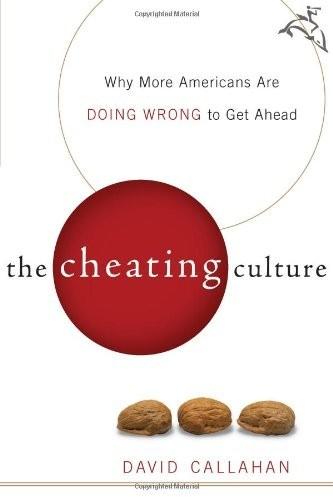
The Cheating Culture: Why More Americans Are Doing Wrong to Get Ahead
by
David Callahan
Published 1 Jan 2004
If anything, the study's authors contended, the results of their surveys showed more integrity among the felons, who were less likely than business students to raid competitors for desirable employees and to slight the needs of their customers in favor of stockholders.25 The Association of Advanced Collegiate Schools of Business requires accredited M.B.A. programs to educate students about ethics, allowing schools to choose their own method for integrating ethics into the business curriculum. The results of this requirement are not impressive. A study conducted by the Aspen Institute's Initiative for Social Innovation Through Business between 1999 and 2001 found that students left graduate business programs with a weaker ethical orientation than they had when they arrived.26 Getting serious attention for ethics has traditionally been an uphill battle in business schools.
…
[back] * * * index Aaron, Clarence, [>]–[>] Abrams, Frank, [>] accounting: cheating in, [>], [>]–[>] fraud at Xerox, [>]–[>] inadequate professional discipline in, [>] accounting firms: auditor-client relationship in, [>]–[>], [>] conflicts of interest in, [>]–[>], [>]–[>] Leavitt attempts to reform, [>]–[>] offer consulting services, [>]–[>] and savings and loan failures, [>] Adelphia Communications, [>] Alexander, Donald, [>], [>] Alger, Horatio, [>] Almonte, Danny: cheats in Little League, [>]–[>] Ambrose, Stephen: plagiarism scandal, viii, [>], [>] American Bar Association: ethical guidelines of, [>], [>] American Commonwealth, The (Bryce), [>] American Enterprise Institute: political views, [>]–[>] American Institute of Certified Public Accountants, [>] fights SEC, [>] on tax evasion, [>] American Lawyer, The, investigates billing practices, [>]–[>] American Medical Association: ethical guidelines of, [>]–[>], [>], [>] American values: Bush administration and, [>] cheating as threat to, [>]–[>], [>] Merton on, [>]–[>] social Darwinism's effects on, [>]–[>] and tolerance of lawlessness, [>]–[>] American voting behavior: Brooks on, [>]–[>] Amherst College: and admissions cheating, [>], [>] Anschutz, Philip: commits fraud, [>]–[>] escapes prosecution, [>] Spitzer investigates, [>] Armstrong, Lance: alleged drug use by, [>]–[>] earnings, [>], [>]–[>] It's Not About the Bike, [>] Arthur Andersen: in early accounting scandals, [>]–[>] conflicts of interest, [>] and corporate ethics, [>] Enron and, [>] and Lincoln Savings and Loan failure, [>] Aspen Institute, [>] Association of Certified Fraud Examiners, [>] and white-collar crime, [>]–[>] Association of Advanced Collegiate Schools of Business, [>]–[>] AstraZeneca, [>] ATM fraud: at Municipal Credit Union, [>]–[>], [>]–[>], [>] Audio Home Recording Act, [>] automobile mechanics: fraud by, [>]–[>], [>]–[>], [>] Baldwin, Sandra: lies on résumé, [>], [>]–[>], [>] Banana Republic: earnings disparities at, [>]–[>] bar associations, state: inadequate discipline by, [>]–[>] Barnicle, Mike, [>], [>] baseball: cheating in, [>], [>] Battle, Bill, [>]–[>] Bell Curve, The (Murray), [>]–[>] Bellesiles, Michael: plagiarism scandal, [>], [>] Bennett, William, [>], [>] The Book of Virtues, [>] The Devaluing of America, [>] The Moral Compass, [>] Berry, Dr.
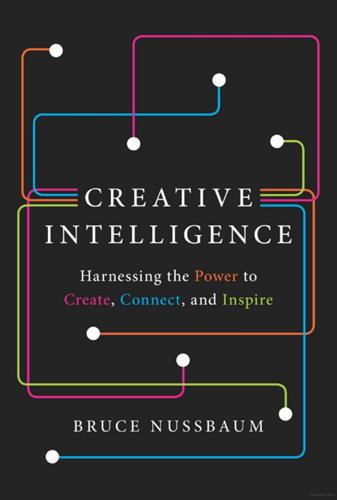
Creative Intelligence: Harnessing the Power to Create, Connect, and Inspire
by
Bruce Nussbaum
Published 5 Mar 2013
A National Science Foundation report released in September 2010, called the 2008 Business R&D and Innovation Survey (BRDIS), showed that only 9 percent of public and private companies engaged in either product or service innovation between 2006 and 2008. This is an extraordinary and unexpected fact. Because of the proliferation of cool gadgets like tablets and smart phones, many of us believe we’re living in an era of immense innovation—but we’re not. At an Aspen Institute Conference on technology in 2011, Peter Thiel, a cofounder of PayPal and an early investor in Facebook, said that except for big advances in computer-related areas, innovation has actually “stalled out.” There’s been little innovation in transportation and we haven’t seen any new breakthroughs in energy, with alternatives to hydrocarbons making up just a fraction of all energy production.
…
. $44.2 Billion,” Safe Haven, October 17, 2012, accessed October 20, 2012, http://www.safehaven.com/article/27361/ us-august-net-trade-deficit-reported-at-us442-billion. 235 Even in high tech: Michael Mandel, “Innovation Failure,” Mandel on Innovation and Growth, October 5, 2010, accessed October 21, 2012, http://innovationandgrowth.wordpress.com/2010/10/05/ innovation-failure/; Michael Mandel, discussions with the author, 2012. 235 A National Science Foundation report: Mark Boroush, “NSF Releases New Statistics on Business Innovation,” October 2010, accessed October 12, 2012, http://www.nsf.gov/statistics/ infbrief/nsf11300/. 235 At an Aspen Institute: TPI Aspen Forum, August 21 to 23, 2011, https://techpolicyinstitute.org/aspen2011/. 235 Peter Thiel, a cofounder: Rip Empson, “Max Levchin and Peter Thiel: Innovation in the World Today Is Between ’Dire Straits and Dead,’” TechCrunch, September 12, 2011, http://techcrunch.com/2011/09/12/ max-levchin-and-peter-thiel-innovation-in-the-world-today-is-between-dire-straits-and-dead/. 235 and we haven’t seen any new breakthroughs in energy: Ken Bossong, “Renewable Energy Provided 11% of Domestic Energy Production in 2010,” Renewable Energy World, accessed September 15, 2012, http://www.renewableenergyworld.com/rea/news/ article/2011/04/ renewable-energy-provided-11-of-domestic-energy-production-in-2010. 235 We have all been feeling the ripple: Michael Mandel, “Why Isn’t the Innovation Economy Creating More Jobs?”
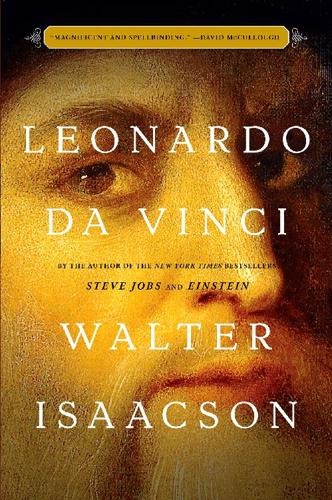
Leonardo Da Vinci
by
Walter Isaacson
Published 16 Oct 2017
I am also grateful to the staffs of the Villa I Tatti in Florence, the Dumbarton Oaks Library in Washington, DC, and the Harvard Fine Arts Library. Getty Images, led by Dawn Airey, adopted this book as a special project; the team overseeing the acquisition of images included David Savage, Eric Rachlis, Scott Rosen, and Jill Braaten. At the Aspen Institute, my deep thanks go to Pat Zindulka, Leah Bitounis, Eric Motley, Chloe Tabah, and other indulgent colleagues. All of my books for more than three decades have been published by Simon & Schuster, and that is because the team there is extraordinarily talented: Alice Mayhew, Carolyn Reidy, Jonathan Karp, Stuart Roberts (who shepherded this book and its illustrations), Richard Rhorer, Stephen Bedford, Jackie Seow, Kristen Lemire, Judith Hoover, Julia Prosser, Lisa Erwin, Jonathan Evans, and Paul Dippolito.
…
Wells = Francis Wells, The Heart of Leonardo (Springer, 2013). Zöllner = Frank Zöllner, Leonardo da Vinci: The Complete Paintings and Drawings, 2 vols. (Taschen, 2015). Vol. 1 for paintings, vol. 2 for drawings. About the Author Walter Isaacson, University Professor of History at Tulane, has been CEO of the Aspen Institute, chairman of CNN, and editor of Time magazine. He is the author of The Innovators; Steve Jobs; Einstein: His Life and Universe; Benjamin Franklin: An American Life; and Kissinger: A Biography and the coauthor, with Evan Thomas, of The Wise Men: Six Friends and the World They Made. Facebook: Walter Isaacson Twitter: @WalterIsaacson MEET THE AUTHORS, WATCH VIDEOS AND MORE AT SimonandSchuster.com Authors.SimonandSchuster.com/Walter-Isaacson More Bestselling Biography from Walter Isaacson Steve Jobs * * * The Innovators * * * Einstein * * * A Benjamin Franklin Reader * * * Benjamin Franklin * * * American Sketches * * * The Wise Men * * * Kissinger * * * ORDER YOUR COPIES TODAY!
…
The first good illustrations of the tongue of the woodpecker were done by Dutch anatomist Volcher Coiter in 1575. ILLUSTRATION CREDITS Endpapers: Getty Images Timeline design by Katie Kissane Viola in conjunction with Elizabth Foley, Peter Kaplan, Jonathan Melgaard, Jamie Miller, Deborah Murphy, and Chloe Tabah of the Aspen Institute Royal Collection Trust/© Her Majesty Queen Elizabeth II 2017: Intro opener, 73, 96, 103, 111, 112, 113, 121 James L. Amos/Corbis Documentary/Getty Images: Ch 1 opener DEA PICTURE LIBRARY/De Agostini Picture Library/Getty Images: Ch 2 opener, 10, 11, 82 DEA/G. NIMATALLAH/De Agostini Picture Library/Getty Images: 1, 7 DEA/A.
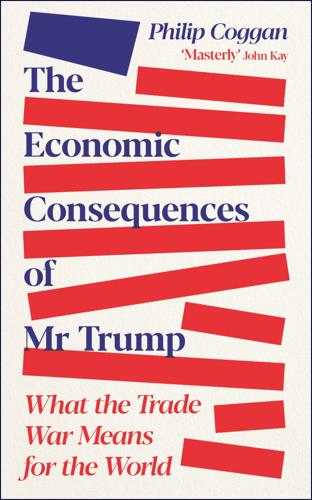
The Economic Consequences of Mr Trump: What the Trade War Means for the World
by
Philip Coggan
Published 1 Jul 2025
Gilmore, ‘Welcome to the experience economy’, Harvard Business Review (July–August 1998), hbr.org/1998/07/welcome-to-the-experience-economy 17 David Deming, Christopher Ong and Lawrence H. Summers, ‘Technological disruption in the US labor market’, in Melissa S. Kearney and Luke Pardue (eds), Strengthening America’s Economic Dynamism (Washington, DC: Aspen Institute, 2024), economicstrategygroup.org/wp-content/uploads/2024/10/DemingOng-Summers-AESG-2024.pdf 18 Anne C. Case and Angus Deaton, ‘Broken down by work and sex: how our health declines’, National Bureau of Economic Research, Working Paper 9821 (July 2003), doi.org/10.3386/w9821 19 Jacob Pedersen et al., ‘High physical work demands and working life expectancy in Denmark’, Occupational and Environmental Medicine 77:8 (2020), pp. 567–82 20 Eric Weiner, ‘Time warp: the GM strike, then and now’, NPR, 26 September 2007, npr.org/2007/09/26/14720112/time-warp-the-gm-strike-then-and-now 21 ‘Victory of the auto workers’, America, 28 November 1970, americamagazine.org/issue/100/victory-auto-workers 22 ‘Detroit: past and future of a shrinking city’, Economy League, economyleague.org/resources/detroit-past-and-future-shrinking-city 23 Jaelyn Campbell, ‘Auto jobs are surging in notoriously anti-union South – can the UAW find a foothold?’
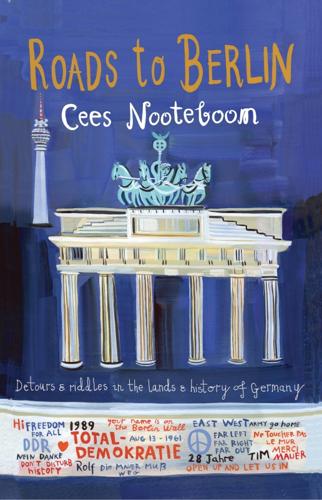
Roads to Berlin
by
Cees Nooteboom
and
Laura Watkinson
Published 2 Jan 1990
Will the D.D.R. always continue to limp along behind the Soviet Union, Hungary and Poland? The D.D.R.’s view is that the Russians needed glasnost to mobilize the population because the economy had fallen woefully behind, an argument that does not apply to the D.D.R. itself, because in that respect they are the mirror image of those other Germans, top of the class. Recently the Aspen Institute in Berlin held a seminar with representatives from the S.E.D think tank, the Akademie für Gesellschaftswissenschaften. It was also attended by Americans, British, West Germans, academics and politicians. The event was intended to pave the way for democratization in the 1990s and was described in Der Tagesspiegel as a “contribution from the D.D.R. to the discussion of glasnost and perestroika in Eastern Europe.”
…
INDEX Page numbers in italics denote illustrations Adenauer, Konrad 55–56, 245, 317, 403 Adorno, Theodor 22, 403 Agamben, Giorgio 333, 334, 342 Akademie für Gesellschaftswissenschaften 52–53 aktuelle Kamera, Die (T.V. show) 106–7, 109 Albrecht, Gerd 20–21 Alexander III, Pope 220 Alexanderplatz (Berlin) 7, 186, 187, 236, 267, 331 Alhambra 355 Angel of Peace statue (Munich) 131, 137, 138, 141 angels 155–56 Aragon, Louis 30 Armando 173 Arminius (Hermann) 110–13, 112, 114–15 Aspen Institute 52 Athene statue (Munich) 131 atomic bomb 316 Auden, W. H. 30 August Wilhelm, Prince 294–95 Augustine 311 Augustus, Emperor 113 Auschwitz 199, 241 Baader, Andreas 56, 403 Baader-Meinhof gang 403 Bach, Johann Sebastian 327 burial place 185 Bacon, Francis 376 Baden-Württemberg 387 Bahr, Egon 107, 404 Bamberg 171 Bandel, Ernst von 113 Barbarossa, Emperor Frederick 220–23, 224 Baroque 158 Barraclough, Geoffrey The Origins of Modern Germany 198 Barschel, Uwe 56, 404 Basic Treaty (1972) 404 Basques 384 Bavaria 116 Bayerischer Hof (Berlin) 308 B.B.C.
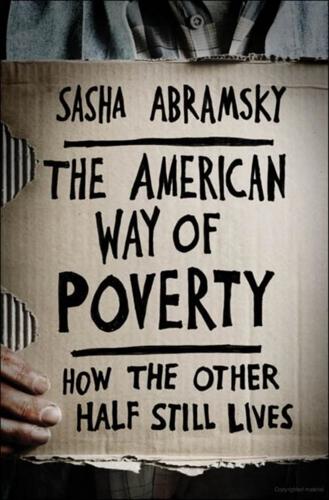
The American Way of Poverty: How the Other Half Still Lives
by
Sasha Abramsky
Published 15 Mar 2013
-based Association for Enterprise Opportunity, the trade association for American micro-lenders, was a shame. If one out of three Main Street businesses each added one employee, she argued, America would rapidly reach full employment again. Many of those businesses, she believed, could use micro-loans to expand; yet the programs that could help them do so were too few and far between. The Aspen Institute’s FIELD program estimated that nationwide in the years leading up to 2012 only around 117,000 such loans were disbursed annually.7 Given that there were more than 20 million micro-businesses in the country, and given the fact that small businesses in the post-2008 environment too often were denied credit by banks, that wasn’t nearly enough.
…
See Aid to Families with Dependent Children Affordable Care Act, 224, 298 African Americans, 9–10, 25, 81, 128–129, 129–130, 186 and education, 26 and housing, 172–173 and Hurricane Katrina, 155–156 Agassi, Andre, 276 Aid to Families with Dependent Children (AFDC), 45, 107, 216–217, 218, 232 Alabama, 103, 106, 131, 289 Alaska, 251 Albelda, Randy, 206, 218, 233 Alfond, Harold, 256–257 American Airlines, 312 American Bankers Association conference (Chicago, 2009), 36 American Legislative Exchange Council, 178, 179, 205 American Recovery and Reinvestment Act, 100, 110, 218, 278 Anti-poverty strategies, 197–198, 199–205 and automatic stabilizers, 231–232 and automatic triggers/coordinated efforts, 228–229 and benefit corporations, 310–311 and community building, 308–309, 309–312 and disability insurance, 304–306 and domestic workers, 297–298 and Earned Income Tax Credit, 233, 287–294, 295–296, 299–300, 300–301 and economic downturns, 218–220 and education, 274–283 and existing programs, 287–317 and food stamp program, 220–223, 232 and green jobs and industries, 264–266 holistic approach to, 229–231 and homelessness, 269–270, 283–284 and housing, 266–269, 283–284 and income guarantee, 294–297 and infrastructure, public and private, 263–264 and job training/retraining programs, 305–306, 306–310 and living wage, 295–296, 297, 298–299, 305 and Medicaid, 224–227 and Medicare, 311, 314–315, 316 and minimum wage, 297, 299–300, 305 and mortgage foreclosures, 270–274 and pensions, 311–313, 313–315 and public works programs, 301–304 punishment-based vs. incentive-based approach to, 233, 234 and school meals, 223–224 and Social Security, 311, 313–315, 315–316, 316–317 and state banks, 263–266 and taxes, 263, 264, 266, 298–300 and unions, 297–298 and will to reform, 227–229, 326–327 See also Poverty; War on Poverty Appalachia, 54, 131–132 Appalachian Pennsylvania, 18–20 Appalachian Regional Development Act, 202 Arizona, 91, 106, 300 Arkansas, 106, 107 As Texas Goes (Collins), 179 Asian Americans, 24–25, 26 Aspen Institute, FIELD program, 254 Atlanta, 103, 229 Attwell, Steven, 302–303, 305 Automatic stabilizers, 121, 218, 231–232 Automatic triggers/coordinated efforts, 228–229 Autor, David, 304 Bachmann, Michele, 119–120 Bacon, Pastor Ed, 230–231 Baker, Dean, 244–247 Bankruptcy, 56, 57–58, 175, 312–313 Banks/bankers, 36, 58–59.
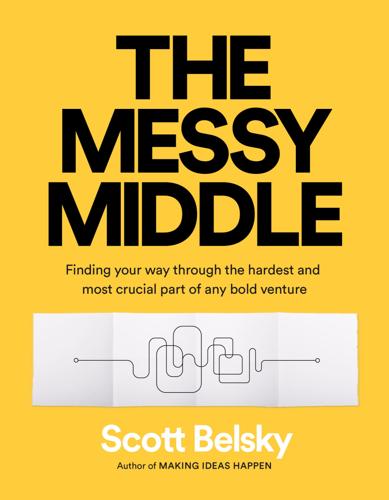
The Messy Middle: Finding Your Way Through the Hardest and Most Crucial Part of Any Bold Venture
by
Scott Belsky
Published 1 Oct 2018
If you’re really playing the long game and turning down immediate opportunities, people will probably start scratching their heads. The seeds you’re planting—long-term relationships, curiosity-driven explorations, thought experiments—are less likely to be supported by others both socially and financially. In a talk he gave at the Aspen Institute in 2009, Amazon founder Jeff Bezos, legendary for his long-term vision, reiterated this point. “Invention requires a long-term willingness to be misunderstood,” he said. “When you do something that you genuinely believe in, that you have conviction about, for a long period of time, well-meaning people may criticize that effort.”
…
A/B testing, 93–94 Adams, Scott, 283 Adidas, 143 Adobe, 10–11, 43–44, 48, 85, 100, 115, 136, 159, 161–62, 185, 206–7, 233, 238, 254, 270, 273, 289, 337 Behance acquired by, 3, 10–11, 16, 43, 47, 130, 143, 151–52, 199, 280, 341–42, 347–48, 351–52, 359 Creative Cloud, 47, 159, 347 Illustrator, 10, 144, 162, 270 Photoshop, 10, 144, 159, 162, 185, 206–7, 238–39, 270, 347 adversity, 38, 39, 110–11 advice, 294–96 Aeon, 108 aging, 370–72 Airbnb, 64, 88–89, 259, 311 AirPods, 250 Alexa, 82, 210 aligned dynamism, 112 alignment, 206 Allen, Will, 101, 116–17, 118, 342 Alphabet, 83 Alta Vista, 189 Amabile, Teresa, 160 Amazon, 79, 81–82, 224–25, 336, 366–67 Alexa, 82, 210 ambiguity, 41, 183–84 American Express, 184 Amino, 261 Ancell, Brit, 343 Andreessen Horowitz, 29 angel groups, 107 anger, 73, 74 Anthropologie, 73 Antioco, John, 84 AppDynamics, 43 Apple, 40–41, 48, 57, 64, 141, 227, 239, 257, 265, 273, 366 AirPods, 250 iPad, 48, 250, 306 iPhone, 63, 250, 273, 374 iPod, 63, 295, 374 apprenticeship, 124–25 Army, U.S., 143 Aron, Arlis, 368–69 art vs. science of business, 310–13 Ash, Allan, 371 Ash, Neil, 371 Aspen Institute, 79 assumptions, 242–44, 308 attention, 335–36 Badeen, Jonathan, 260 Balakrishnan, Govind, 48 Barada, Taylor, 254 Basecamp, 90 Behance, 9–12, 16, 19, 24–25, 28, 33, 89–90, 100–101, 104, 108–9, 115–18, 121, 127, 130, 135, 136, 144, 151, 156, 160, 165, 173–74, 197, 216, 220, 226, 230, 233, 241, 248, 249, 252, 258, 311, 319, 321, 336, 341–43 Action Method, 220, 221 Adobe’s acquisition of, 3, 10–11, 16, 43, 47, 130, 143, 151–52, 199, 280, 341–42, 347–48, 351–52, 359 Behance Network, 9, 10, 220 competition and, 187–89 Google and, 24, 25 narrative of, 255–56 99U, 9–10, 26, 138, 167, 181, 197, 220, 221, 360 portfolio-review events of, 312–13 strategy document for, 280–81 Beilock, Sian, 228–29 Belsky, Erica, 4, 214, 352 Belsky, Julie, 111 Benchmark, 164, 275, 311 Berkshire Hathaway, 366 Berle, Milton, 203 Bernstein, Joe, 70, 112, 264–65 Bern University, 108 best practices, 294–95 Beykpour, Kayvon, 70, 112, 264–65 Beyoncé, 25 Bezos, Jeff, 79, 81–82, 224–25, 292, 336 biases, 205 Blank, Steve, 178 blind spots, 316–17, 350 Blockbuster, 83–84 Blue Apron, 210 Blue Origin, 336 body language, 172 “boulders” and “pebbles,” 182, 268 Bounty, 70 bounty program, 179 Box, 83, 224 Brahma, 374 brain, 107–8, 162, 167, 181, 196–97, 272 dopamine in, 26, 181, 272, 322 brainstorming, 78, 118 brand-product fit, 256, 257 brevity, 176 Bridgewater, 305–7 Brokaw, Tom, 71 Buddhism, 16, 67–68 Buffett, Warren, 366–67 Burbn, 36 bureaucracy, 183–84 Burks, Jewel, 120–21 Business Insider, 84 BuzzFeed, 44, 272, 313 Caltech, 272–73 Camerer, Colin, 272 Camp, Garrett, 112, 256–57 Captivate: The Science of Succeeding with People (Van Edwards), 172 Carbonmade, 187 Carlyle, Tom, 141 Carr, Austin, 259, 260 Carr, Thomas, 228–29 Carta, 204 Central Intelligence Agency (CIA), 143, 159 certainty and uncertainty, 32–34, 69, 224 change(s), 292, 325, 338 resistance to, 206–7, 295, 354 changing your mind, 292 Chaubad, Andre, 201 Cheddar, 44, 313 Chennault, Ken, 184 choosing, art of, 284–85 clarity, prompting with questions, 69–71 Clinton, Doug, 35–36 Clinton, Hillary, 275 CNBC, 313 Coco & Co., 217 Code for America, 165 Cohen, Peter, 72 cohesion horizon, 228 Collins, Jim, 260 commitments, 282–85, 318–19 communication, 153, 316 brevity in, 176 energy in, 43–45 explicitness in, 173–75 how and when to say something, 170–72 nonverbal, 172 real-time, 123 compartmentalizing, 66, 68 competition, 29, 63, 106, 139 changing landscape in, 275 channeling competitive energy, 187–91 competitive advantage, 152, 195, 214–15 diversity as, 107 outlasting as, 90 persistence as, 85 resourcefulness as, 100 self-awareness as, 54–56, 305 observing and learning from, 187–90 complacency, 191 complexity, 209–10 compromise, 178, 185 Comstock, Beth, 327 conflict, 73, 178, 185–86, 338 conformity, 57–58, 60 connectivity, constant, 327 consensus, conviction and, 203–5 context, 316–17 contribution, underestimating, 353–54 control, 32–33 Conversation, 108 ConversionXL, 162 conviction, consensus and, 203–5 cooperation, 38 Cooper-Hewitt National Design Museum, 161, 353–54 Copeland, Rob, 306, 307 copycats, 63 Corea, Matias, 108–9, 135, 144, 156, 162, 256, 319, 342 Coroflot, 187 corporate obesity, 46–48 Costello, Dick, 264 Couric, Katie, 71 Craigslist, 311 Creative Cloud, 47, 159, 347 creativity, 92, 107, 114–15, 302, 336, 373 and concern for what already is, 65–68 creative block, 192–93 creative meritocracy, 256 familiarity and, 226–27 relative joy of, 5–6 credit, 146–48, 330–32 criticism, 55, 296 culture, 114, 178 free radicals and, 137–39 stories and, 134–36 Cuomo, Rivers, 333–34 curiosity, 78–79, 93–95, 104, 129, 271–73, 336, 367 customers: engagement with engagement drivers, 269–70 mystery in, 271–73 the right customers at the right time, 251–54 following and playing to the middle, 274–75 forgiving, 251–53 ideal, 251 interest drivers and, 269–70 power users, 217 profitable, 251–53 valuable, 251–53 viral, 251, 253 willing, 251, 252 Dahis, Rafael, 299 Dalio, Ray, 305–7 D’Angelo, Adam, 167–68 data: intuition and, 300–304 metrics and measures, 28, 29, 297–99 debates and disagreements, 114 decision making, 33, 178, 184, 204, 206, 224–25, 271, 277 choices in, 284–85 satisficer and maximizer styles of, 229, 284–85 timing and, 289–90 decisiveness, 203, 224 defensiveness, 55, 71 delegation, 166–69 Delicious, 174 democracy, 333 dependency, 330 design, invisibility in, 230–31 DeviantArt, 89, 187–88 differentiation, 106–9 Digg, 267 Dignan, Aaron, 179 Dilbert, 283 disconnecting, 326–28 discussions, 112–13, 321 Disney, Walt, 222 distraction, 319, 371 diversity, 106–9, 110, 120–21 Dixon, Chris, 348 doers vs. dreamers, 118 dopamine, 26, 181, 272, 322 Dorsey, Jack, 264 doubt, 295–96 dreamers vs. doers, 118 DRI (Directly Responsible Individual), 167–68, 169 Dribbble, 188–89 Duckworth, Angela, 62–63 Duhigg, Charles, 122, 180 Dumas, Alexandre, 200–201 Dunkin’ Donuts, 44 DYFJ (do your fucking job), 49–51 dying, 26, 368–69, 373–75 early innings, 349–50, 374 easy option, 85 eBay, 258 Eco, Umberto, 374 Economist, 108 Edison, Thomas, 9–10 Edmondson, Amy, 122 ego, 330–32 ego analytics, 236, 335 eHarmony, 259 Eiffel, Gustave, 200 Eiffel Tower, 200–202 84 Lumber, 273 Einstein, Albert, 271 Eisenhower, Dwight D., 280 elephants in the room, 41, 179, 186, 338 email, 170, 171, 176, 181, 322 empathy, 71, 115, 120–21, 317, 331, 332 passion and, 248–50 employees: firing, 126–28, 178, 204 hiring, see hiring keeping people moving, 129–31 new, integration of, 121, 123 see also team endowment effect, 291 endurance, 14–15, 16, 19–92 embracing the long game, 77–92 breaking into chapters, 86–87 and doing the work, 91–92 expertise and, 88–90 and measures of productivity, 78–79 patience in, 80–85 leading through the anguish and the unknown, 23–51 corporate politics in, 46–48 DYFJ (do your fucking job), 49–51 energy in, 43–45 fighting resistance with a commitment to suffering, 35–36 friction in, 37–39 perspective in, 40–42 positive feedback and fake wins vs. hard truths, 28–31 processing uncertainty, 32–34 short-circuiting your reward system, 24–27 strengthening your resolve, 53–75 creation vs. concern for what already is, 65–68 and not fitting in, 57–58 OBECALP in, 59–61 perspective in, 62–64 reset in, 72–75 questions to prompt clarity, 69–71 self-awareness in, 54–56 energy, 43–45 Entrepreneur, 26, 73 Entrepreneurial Instinct, The (Mehta), 26 Erez, Ben, 28–29, 33 Expa, 112, 256 experience vs. initiative, in hiring, 103–5 expertise, 88–90, 105, 308 explicitness, 173–75, 271 Exposition Universelle, 200–201 Facebook, 39, 70, 167, 193, 194, 210, 227, 242, 244, 248, 249, 258, 272, 346–47, 349–50 Fadell, Tony, 63 failure, 41, 56, 94, 138, 331, 357 fairness, 259–60 false hope, 206–7 familiarity, 226–27, 308 Fast Company, 259, 272 Faulkner, William, 220 Faydi, Clément, 162, 248–49 FedEx, 210 feedback, 55, 123, 175, 281, 331 positive, and hard truths, 28–31 feelings, 55 Fernandez, Joe, 295, 296 Ferriss, Tim, 131, 221, 282–84 final mile, 339–75 approaching the finish line, 345–54 and final mile as different sport, 346–48 and resistance to outcome, 351–52 and staying in early innings, 349–50 and underestimating contribution, 353–54 finishing, 1, 6–8, 15–16, 341–75 never being finished, 365–75 continuing to learn, 366–67 living and dying, 368–69, 373–75 and trading time and money, 370–72 passing the baton, 355–63 ending gracefully, 356–57 finishing on your own terms, 361–63 identity and, 358–60 financing, 30–31, 102 firing people, 126–28, 178, 204 fitting in, 57–58 Flash, 48 flexibility, 324 focus, 282–85, 328, 335 Food and Drug Administration (FDA), 42 Forbes, 72 forgiveness, asking for permission vs., 199–202 founder-product fit, 256 Founders, 126 Four Hour Body, The (Ferriss), 283 free radicals, 137–39 French Revolution, 200, 201 friction, 37–39, 210, 371, 372 Fried, Jason, 90 fringe, 58 frugality, 140–42 Game of Thrones, 270 Gates, Bill, 295 Gebbia, Joe, 88–89, 311 General Electric (GE), 125, 130, 143, 327 Getable, 356–57 Gibson, William, 257 Giffon, Jeremy, 294 Gigerenzer, Gerd, 285 Gilbert, Dan, 196–97 Glei, Jocelyn, 181 goals, long-term, 26–27, 66, 299, 304, 350 Godin, Seth, 297, 298, 337–38 Goldberg, Dave, 39 Goldman Sachs, 125, 143, 240–41, 341 Google, 24, 25, 60, 67, 83, 93, 101, 139, 189, 239, 366–67 Maps, 210 Project Aristotle, 122 Trends, 301–2 government and politics, corporate, 46–48 grafting talent, 119–25 Graham, Paul, 193 Grant, Adam, 39 Grant, Angela, 108 grit, 62–63 Grit: The Power of Passion and Perseverance (Duckworth), 62 groups, 38–39, 107, 203–4 Gunatillake, Rohan, 360 Gurley, Bill, 79, 311 Gut Feelings (Gigerenzer), 285 hardship, 38, 39 Harvard Business Review, 39, 250 Harvard Business School, 117, 122, 160, 214, 262 Hashemi, Sam, 164–65 Hastings, Reed, 83–84, 126 HBO, 270 Heiferman, Scott, 168, 243–44 Higa, James, 141 Hindu theology, 374 hiring: adversity and, 110–11 discussions and, 112–13 diversity and, 106–9, 110 and initiative vs. experience, 103–5 of polarizing people, 114–15 and resourcefulness vs. resources, 100–102 talent and, 119–25 Hogan-Brun, Gabrielle, 107–8 Homebrew, 294, 359 honeymoon phase, 209 Hope, Bradley, 306, 307 Horowitz, Ben, 29–30 House Party, 265 humility, 56, 193, 331, 350 passion and, 248–50 Huxley, Aldous, 204 Hyer, Tim, 356–57 identity, 358–60, 362–63 if-onlys, 74 ignorance, 308–9 Illustrator, 10, 144, 162, 270 imagination, 326–28, 336 immune system: of society, 35, 36, 60 of team, 116–18, 119, 127 impact, 31 Improv Everywhere, 113 incrementalism, 207, 242–44, 289 influence, and credit, 330–32 information-gap theory, 272 initiative vs. experience, in hiring, 103–5 innovation, 57, 60, 102, 106–7, 118, 143, 183, 204, 250 inbred, 245–46 mistakes and unexpected in, 324–25 insecurity work, 66–67, 68 Instagram, 36, 44, 174, 189, 227, 235–36, 335, 349 institutions, 354 intention, 175 internet, 258 intuition, 294–96, 300–304, 321 inverted-U behavior, 272–73 investment, 78, 290 iPad, 48, 250, 306 iPhone, 63, 250, 273, 374 iPod, 63, 295, 374 Jaffe, Eric, 272 Jenks, Patty, 84 Jobs, Steve, 40–41, 63, 64, 141, 295 Johnstone, Ollie, 222 Jones, Malcolm, 104 Journal of Experimental Psychology, 228 Joymode, 295 June, 226–27 Jung, Carl, 56, 115 Kalina, Noah, 190 Kalmikoff, Jeffrey, 267–68 Kane, Becky, 229 Kaplan, Stanley, 358–59 Kay, Alan, 308 Kerr, Steve, 125 King, Stephen, 220 Klout, 295 Krop, 187 Laja, Peep, 162 language, multilingualism and, 107–9 laziness, vanity, and selfishness, 235–37 LCD Soundsystem, 92 leaders, leadership, 127, 147, 205, 277, 331 delegation and, 166–69 internal marketing and, 158–60 70/20/10 model for development of, 125 as stewards vs. owners, 258–61 timing and, 288–89 “lean start-up” methodology, 194 learning, 63–64, 366–67 LearnVest, 65–66 Lehrer, Jonah, 272 Levie, Aaron, 83, 224 Levo League, 73 LeWitt, Sol, 58 life expectancy, 26 Lightroom, 270 Linguanomics: What Is the Market Potential of Multilingualism?
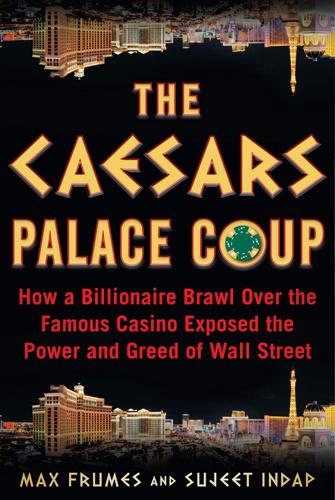
Palace Coup: The Billionaire Brawl Over the Bankrupt Caesars Gaming Empire
by
Sujeet Indap
and
Max Frumes
Published 16 Mar 2021
Senate Committee on Finance Hearing. July 31, 2007. Hulse, Carl. “Harry Reid to Retire from Senate in 2016.” The New York Times, March 27, 2015. Kane, Paul. “Harry Reid considering new chief of staff.” The Washington Post, January 7, 2015. Cohen, Stephen. “ADL and Aspen Institute Launch Civil Society Fellowship to Help Create Next Generation of Community Leaders.” The Aspen Institute, April 25, 2019. Transcript, Caesars Entertainment Operating Company Hearing on November 18, 2015, U.S. Bankruptcy Court, Northern District of Illinois. August 24, 2016. Barry Kupferberg testimony. Grim, Ryan and Paul Blumenthal. “Harry Reid Directly Solicited Contribution From Private Equity Giant Before Controversial Rider.”

How the Other Half Banks: Exclusion, Exploitation, and the Threat to Democracy
by
Mehrsa Baradaran
Published 5 Oct 2015
.… As of February 28, 2014, the Treasury recognized 806.” Federal Reserve Bank of Minneapolis, “Mass CDFI Recertification Push Winnows List, Ensures Compliance,” Community Dividend, April 1, 2014, accessed March 15, 2015, www.minneapolisfed.org/publications_papers/pub_display.cfm?id=5289. 37. FIELD at the Aspen Institute, “Surviving the Recession: How Microlenders Are Coping with Changing Demand, Risk and Funding,” Field Trendlines Series, issue 1 (July 2010), accessed March 15, 2015, www.fieldus.org/publications/TrendlinesMicrofinance.pdf; Robert Barba, “Deal Shows ShoreBank Was Savvy to the End,” American Banker, August 24, 2010, 1; Lehn Benjamin et al., “Community Development Financial Institutions: Current Issues and Future Prospects,” Journal of Urban Affairs 26 (2004): 189. 38.
…
Overseas, even Grameen charges interest rates “as high as 60% to 70%,” which is necessary to compensate for risk but by U.S. standards seem usurious. 53. Neil MacFarquhar, “Banks Making Big Profits from Tiny Loans,” New York Times, April 14, 2010, accessed March 15, 2015, www.nytimes.com/2010/04/14/world/14microfinance.html?pagewanted=all&_r=1&. 54. For a tool to explore microcredit entities in the United States, see FIELD at the Aspen Institute, “microTracker,” microtracker.org/explore; “10 Top Microfinance Companies,” CNN Money, updated July 15, 2011, accessed March 15, 2015, money.cnn.com/galleries/2011/smallbusiness/1107/gallery.top_microfinance_companies/index.html; Courtney L. Gould, “Grameencredit: One Solution for Poverty, But Maybe Not in Every Country, Pacific Basin Law Journal 28 (2010): 1. 55.
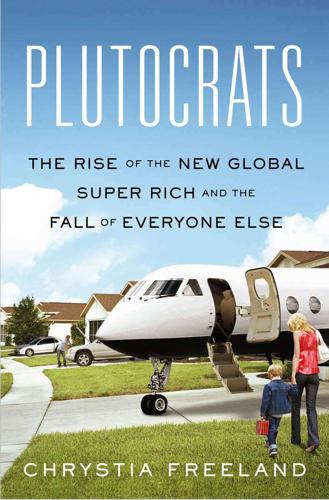
Plutocrats: The Rise of the New Global Super-Rich and the Fall of Everyone Else
by
Chrystia Freeland
Published 11 Oct 2012
The annual TED conference (the acronym stands for Technology, Entertainment, Design) is an important stop for the digerati, as is the DLD (Digital-Life-Design) gathering Israeli technology entrepreneur Yossi Vardi cohosts with publisher Hubert Burda in Munich each January (so convenient if you are en route to Davos). Herb Allen’s Sun Valley gathering is the place for media moguls, and the Aspen Institute’s Ideas Festival is for the more policy-minded, with a distinctly U.S. slant. There is nothing implicit, at these gatherings, about the sense of belonging to a global elite. As Chris Anderson, the curator of the TED talks, told one gathering: “Combined, our contacts reach pretty much everyone who’s interesting in the country, if not the planet.”
…
Abramovich, Roman, 107 Abrams, Dan, 164 academics, 264, 267–69 Acemoglu, Daron, 21–22, 279–80 Ackermann, Josef, 254 Ackman, Bill, 51 active inertia, 145, 167–69 actors, 108 Ad Age, 50 Adderall, 52 Africa, 66, 76, 146 agency problem, 138 AIDS, 76, 246 AIG, 27, 101, 143 Akhmetov, Rinat, 103 Alger, Horatio, 45 algorithmic trading, 146 Allen, Herb, 68 Allen, Paul, 43 Allstate, 64 Alpha, 143 alpha geeks, 46–51, 92, 94 Amazon, 69, 234 Ambani, Mukesh, 199 Ambani family, 235 American Bar Association Journal, 107 American colonies, 11–12 Anderson, Chris, 68, 100 Anderson, Keith, 153–55 Andersson, Mats, 138 Animal Farm (Orwell), 90 Apollo, 142 Apple, 25, 54, 55, 104, 143 iPhone, 28 iPod, 24–26 Applied Materials, 64 Arcelor, 191 ArcelorMittal, 59 architects, 103–4 Ariely, Dan, xii, 273–74 ARK (Absolute Return for Kids), 74 Arkady, 110 Arthur, W. Brian, 30–31, 146 art markets, 95, 96, 106, 205 Aslund, Anders, 79–80 Aspen Institute Ideas Festival, 68, 112 Astor, Caroline, 6 Astor, John Jacob, 6 AT&T, 185, 186 Atlantic, 118, 175 Atlas Shrugged (Rand), 249 athletes, 108–9, 129, 130, 138 Attias, Richard, 167 Austen, Jane, 274–75 authoritarian regimes, 144–46 automobile industry, 280 Firestone in, 168 Treaty of Detroit in, 17, 18 Autor, David, 23–24, 27, 91, 148 Axelrod, David, 72 Back to Work (Clinton), x Baker, James, 148 Balls, Edward, 214 Balsillie, Jim, 71 Bangalore, 46 banking industry, 119–22, 190, 218–19, 280 bailouts of, 218, 242, 258, 261, 280 Basel meeting and, 220 capital requirements in, 212–13, 216, 217, 253, 261 incomes in, 218–21, 259 regulation of, 212–18, 220–23, 253, 255, 259–61 Bank of America, 102, 214 Bank of Canada, 216, 252, 261 Baranowski, John, 30 Barbados, 149 Barclays, 122 Bartels, Larry, 270–71 Barton, Dominic, 60 Basel III rules, 253, 255, 261 Batali, Mario, 111–12 Batista, Eike, 54 Bauerlein, Mark, 267 Beane, Billy, 129 Bear Stearns, 258 Bedi, Kiran, 200–201 Bell, Brian, 81, 136 Beloussov, Serguei, 179–81 Benchmark Lunches, 141–44 Bendukidze, Kakha, 152, 163 Berezovsky, Boris, 150–51 Berle, Adolf, 132–34, 138 Berlin, Isaiah, 40 Bernanke, Ben, 258, 259 Bertrand, Marianne, 138–40 Bharat Light and Power, 158–59 Bharti Enterprises, 66 Bieber, Justin, 109 Bierstadt, Albert, 171 big data, 146, 165–66 Bilderberg Group, 68 Billington, Elizabeth, 94–100, 108, 109, 114 Bishop, Matthew, 71–72 Bismarck, Otto von, 141 Black, Leon, 110, 142 BlackRock, 5, 166 Blackstone, 1, 45, 60, 70, 111, 147 Blankfein, Lloyd, 121, 147, 249, 253, 254, 280 Blavatnik, Len, 62, 171 Bloomberg, Michael, 36, 69, 77, 211–14, 227, 244 Bloomberg L.P., 235 BNP Paribas, 141, 211 Boao Forum, 68 Bobergh, Otto Gustav, 113, 114 Bo Guagua, 209 Bohr, Niels, 124 Boies, David, 101–2, 105, 106 Bolsheviks, 14, 93, 145, 284 Bombay Chamber of Commerce and Industry, 188–89, 198, 201, 228 Bon Jovi, 109, 110 books, bestselling, 126 Booz Allen Hamilton, 112 Bo Xilai, 203, 209–10 Bo Yibo, 209 Brandeis, Louis, 277 Brazil, 3, 19, 35, 54, 149, 156–57, 194, 198 Brezhnev, Leonid, 89 BRICs, 3, 18–20, 21, 30 see also Brazil; China; India; Russia Bridgestone, 168 Broad, Eli, 71, 72 Brown, Gordon, 214 Brown, Joshua, 84 Brown University, 284 Buffett, Warren, 3, 75, 79, 129–30, 143, 175, 282 Buiter, Willem, 256–57, 270, 271 Bundy, McGeorge, 263 Bunshaft, Gordon, 103–4 Burda, Hubert, 68 Bush, George H.
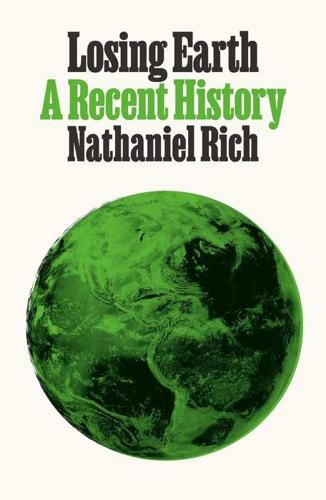
Losing Earth: A Recent History
by
Nathaniel Rich
Published 4 Aug 2018
It was not only good sense. It was good business. What could be more conservative than an efficient use of resources that allowed for a reduction of federal subsidies? The Charney report meanwhile continued to vibrate at the periphery of public consciousness. Its conclusions were confirmed by major studies from the Aspen Institute, the International Institute for Applied Systems Analysis near Vienna, and the American Association for the Advancement of Science. Every month or so there appeared national headlines summoning apocalypse: “Another Warning on ‘Greenhouse Effect,’” “Global Warming Trend ‘Beyond Human Experience,’” “Warming Trend Could ‘Pit Nation Against Nation.’”

Makers and Takers: The Rise of Finance and the Fall of American Business
by
Rana Foroohar
Published 16 May 2016
It’s a guiding purpose that has not only led firms to undercut their long-term prospects and put enormous pressure on leaders themselves (CEOs today have a shelf life of less than ten years44), but has created a business managing class that, unlike peers in professions such as medicine, or law, or many parts of the arts, are cut off from any larger commitment to bettering society as a whole. One Aspen Institute survey that followed a group of MBA students throughout their schooling found that their values changed, and not for the better, during the course of their time on campus.45 The students began their studies in what the survey called “customer mode,” believing that corporations should be run for the benefit of a large group of stakeholders, from workers to customers to society as a whole.
…
Business Roundtable 1990, “Corporate Governance and American Competitiveness,” Directors & Boards 22, no. 2 (Winter 1998): 26; Business Roundtable 1997, “Statement on Corporate Governance,” Directors & Boards 22, no. 2 (Winter 1998): 25. 44. The average tenure of a CEO in the S&P 500 ranged between 7.2 and 9.7 years in the past decade. See Conference Board, “Departing CEO tenure (2000–2013),” Chart of the Week No. 056, June 2014. 45. Aspen Institute, “Where Will They Lead? MBA Student Attitudes About Business & Society,” Initiative for Social Innovation through Business, 2002. 46. Helen J. Muller, James L. Porter, and Robert R. Rehder, “Have the Business Schools Let Down U.S. Corporations?” Management Review 77, no. 10 (October 1988): 25–26. 47.
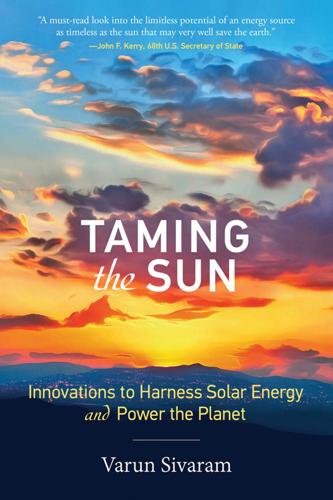
Taming the Sun: Innovations to Harness Solar Energy and Power the Planet
by
Varun Sivaram
Published 2 Mar 2018
The Holy Grail Across the country from Nate Lewis, another acclaimed scientist is also on a quest to commercialize an artificial leaf. Like Nate, Dan Nocera at Harvard University deftly combines science and communication, moonlighting as a science celebrity—something of a Carl Sagan for solar fuels. He has a knack for connecting with diverse audiences, from American Physical Society scientific gatherings to the Aspen Institute’s hobnobbing summits. If his crowd is dining on steak, he’ll warm them up by asking: “What did you just chew? The sun! The beef was just the energy of sunlight.”25 In 2011, Nocera took the world by storm by announcing that he had invented the artificial leaf. His preferred demonstration was to plop the device, which looked like a dark postage stamp, into a glass of water.
…
Mark Jacobson, Mark Delucchi, Mary Cameron, and Bethany Frew, “Low-Cost Solution to the Grid Reliability Problem with 100% Penetration of Intermittent Wind, Water, and Solar for All Purposes,” Proceedings of the National Academy of Sciences 112, no. 49 (2015): 15060–5065, doi: 10.1073/pnas.1510028112. 20. Varun Sivaram, “A Clean Energy Transition Needs More Technology Options,” The Aspen Institute, June 19, 2017, https://www.aspeninstitute.org/blog-posts/clean-energy-transition-needs-technology-options/. 21. Christopher T. M. Clack et al., “Evaluation of a Proposal for Reliable Low-Cost Grid Power with 100% Wind, Water, and Solar,” PNAS 114, no. 26 (2017): 6722-6727, doi: 10.1073/pnas.1610381114. 22.

Drive: The Surprising Truth About What Motivates Us
by
Daniel H. Pink
Published 1 Jan 2008
Schroeder, Intrinsic Motivation in Open Source Software Development, Journal of Comparative Economics 35 (2007): 17, 4. Vermont Governor Expected to Sign Bill on Charity-Business Hybrid, Chronicle of Philanthropy , News Updates, April 21, 2008. Muhammad Yunus, Creating a World Without Poverty: Social Business and the Future of Capitalism (New York: Public Affairs, 2007), 23; Aspen Institute, Fourth Sector Concept Paper (Fall 2008); B Corporation, MIT Sloan Management Review , December 11, 2008, and . Stephanie Strom, Businesses Try to Make Money and Save the World, New York Times , May 6, 2007. Colin Camerer, Behavioral Economics: Reunifying Psychology and Economics, Proceedings of the National Academy of Sciences 96 (September 1999): 10576.

Wealth and Poverty: A New Edition for the Twenty-First Century
by
George Gilder
Published 30 Apr 1981
In fact, the more recent prophets of ambivalent capitalism are in such ample and various company, reaching so far back into the past that one may guess that the meaning of their analysis resides less in what it says about capitalism than in what it says about the incapacity of great thinkers to believe that their own epoch is not the climax of the human story—when soon will be broken the seven seals of the revelation, shaking “the mountains and islands... from their places.”3 Both intellectuals and commercial “statesmen” show a persistent tendency, stemming perhaps from their own increasing disappointments before the mirror and on the stairs, to predict the decline and fall of the most permanent things, followed by some stationary nirvana, much resembling the Aspen Institute. Divorcees predict the transformation of the family, while aging intellectuals and businessmen foresee the declining vigor of capital. Sociology, however, does not recapitulate biology. Even though senescence may afflict great men on their paths of glory to final equilibrium, it is not a characteristic of nations, and capitalism, like the family, is not an institution that can become obsolete or decrepit as long as human societies persist.
…
altruism capitalism and American Enterprise Institute American Exchange American Federation of State, County, and Municipal Employees American International Group (AIG) American Revolution American Telephone and Telegraph Company (AT&T) Anderson, Martin anthropology economic anti-discrimination laws anti-dropout campaign anti-poverty programs anti-Semitism antitrust suits antiviral drugs arson Asian capitalism Aspen Institute assimilation of minorities Aston-Martin Atlanta (Georgia) AT&T. See American Telephone and Telegraph automation Auton Computing Company Axelrod, David Bacon, Robert Banfield, Edward Bank of America banks Barcelo, Romero barter Bartlett, Bruce Barzini, Luigi Basel II Bear Stearns Beaton, David Beinstock, Herbert Bell, Daniel Berkshire Paper Company Berle, Adolph A.

Gonzo: The Life of Hunter S. Thompson
by
Corey Seymour
,
Johnny Depp
and
Jann S. Wenner
Published 31 Oct 2007
We expected the police would be on us any minute. “Jesus,” Hunter said. “We’ll go to prison for life.” GEORGE STRANAHAN was Hunter’s Woody Creek neighbor. Before Hunter moved out to Owl Farm in ’68, he was in a little apartment in Aspen. My friend Bob Craig, who was the executive director of the Aspen Institute, and I were buying real estate in Woody Creek for protective purposes. Craig was making friends with Hunter and called me one day and said, “I think I have a good tenant for this place that we just bought together, namely Hunter Thompson. Maybe you’ve heard of him. Nice folk, a writer.” I now was Hunter’s landlord.
…
Hunter became this sort of figurehead, the leader of the underground, and we all sort of rearranged Aspen. JOE EDWARDS One thing led to another, and a group of people coalesced around Hunter and I, and he brought in people that he knew that I didn’t. He brought in Bob Craig, who was the president of the Aspen Institute for Humanistic Studies and who lived right next door to him in Woody Creek, who gave us his office in the redbrick building catty-corner from the Hotel Jerome to use as our campaign headquarters, and all of a sudden I was running for mayor. TOM BENTON Hunter, myself, and Joe Edwards had formed something called the Meat Possum Press, really just to expose the “greedheads,” as we called them.

The Purpose Economy: How Your Desire for Impact, Personal Growth and Community Is Changing the World
by
Aaron Hurst
Published 31 Aug 2013
Though he was still only in his twenties, the war accelerated my grandfather’s career and gave him a great sense of hope for what might be possible. He would go on to work in the State Department in helping to form the United Nations, develop the blueprint for the Peace Corps, and run both the Salk and Aspen Institutes. An impressive career trajectory to be sure, but one not likely possible at any other time or in any other place. I was lucky enough to be in the Bay Area during the dot-com craze, and one of my first jobs was for a small start-up called HomeShark.com, which sought to empower homeowners and buyers in making better real estate decisions; that is, to upend the traditional model of the industry and put the control back into the hands of the consumer.
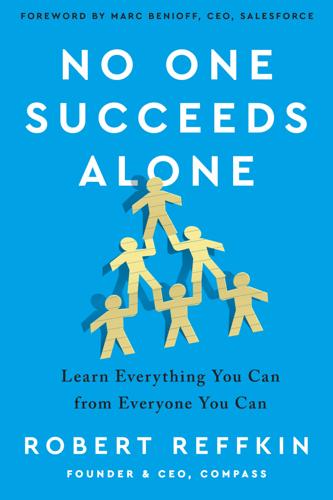
No One Succeeds Alone
by
Robert Reffkin
Published 4 May 2021
I could have reached out to individual mentors to ask their advice. Instead, I tried a different approach. I read up on all the inspiring things other people had already done to achieve similar goals. I printed out the bios of the White House Fellows from the last ten years and the Henry Crown Fellows from the Aspen Institute. I highlighted the best things I saw. Studying the bios of more than one hundred incredible people helped me learn from all of their lives in a short time. It provided me with more ideas more quickly than I could have gotten any other way. Plus, these ideas were all proven. Other people had already done them, earned prestigious fellowships afterward, and deemed those achievements worthy of including in their paragraph-long bios.

Survival of the Richest: Escape Fantasies of the Tech Billionaires
by
Douglas Rushkoff
Published 7 Sep 2022
These ideas are threatening to traditional investors because they don’t depend on their investment at all. Conventional business experts always have a reason why cooperatives, mutual aid, or local credit can never work. Freeloaders will exploit the workers, they argue. “That sounds great for progressive, educated communities like Portland or Madison,” one woman in a meeting at the Aspen Institute asked me, “but do you really think inner city people have the sophistication for building cooperatives?” It turns out the “inner city” (read: Black) people she was worried about have been at this cooperative economics thing for a very long time. The more that Black people were shunned and segregated from the rest of the American society, the more they were forced to invent the kinds of circular economic and local reinvestment strategies the rest of us are discovering only now.

The Aristocracy of Talent: How Meritocracy Made the Modern World
by
Adrian Wooldridge
Published 2 Jun 2021
A 2014 calculation found that by far the biggest group of billionaires under forty – 40 per cent – made their money in technology (the next-largest group, with 16 per cent, made it in hotels and retail).2 High-IQ types have also revolutionized old-fashioned industries such as manufacturing thanks to their ability to subject production processes to the icy discipline of numbers. The new rich put a high value on raw brainpower. They like to socialize at ideas-rich conferences such as the World Economic Forum’s annual meeting in Davos, in Switzerland, in the winter; at the Aspen Institute’s Ideas Festival in Colorado in the summer; and at various meetings of TED throughout the year; indeed, they mark the passing of the seasons with conferences in the way that the old rich used to mark them out with horse races and regattas. They count big thinkers such as Thomas Friedman and David Brooks among their friends.
…
ability Enlightenment view of 16 heritability 211, 381 Jackson’s view of 190 and market incentives 371 ‘natural’ 190, 210–11 see also intelligence; talent absolutist states concept of ‘physical’ and ‘artificial’ king 125 contradictions of 124–9 and creation of new social order 123–4 Academy, Plato’s 66, 67 Acemoglu, Daron 397 Acheson, Dean 197 actors, public schools 310 Adams, Abigail 262 Adams, John 175, 262 A Dissertation on the Canon and Feudal Law 183 on Helvétius 121 and Jefferson 180 limits to power of natural aristocrats 184–6 and range of education 396 and Rush 183–4, 185 speeches to Congress 183 views of aristocracy 182–6 Adams, John Quincy 189 Adams, Samuel 178 affirmative action for college entrance 316 and elite America 302–3 methods of 388–90 opposition to 88 as solution to collective wrongs 387–8 African-Americans see Black Americans Agnew, Spiro 335 Albert, Prince of Saxe-Coburg-Gotha 42 Allen, Grant The Type-writer Girl 271 The Woman Who Did 270 Alvarez, Luis 221 ambition, aristocratic disdain for 33–4 American Civil War, and women’s rights 263 American Motors Corporation 255 American Revolution 11, 19, 175–7 and women’s equality 262 Amsterdam, Jews in 93 anarchy, and class struggle 64 Anderson, Eric 238 Annan, Noel 152, 236, 246 Ansari, Arya 389 Anthony, Susan B. 263 anti-semitism 88 in American universities 233 decline in America 239 economic effects of 93 see also Jews; Judaism anti-slavery campaign, women and 263 The Anti-Slavery Reporter 152 Anti-Slavery Society 152 Aquinas, Thomas 37 aristocracy 12, 106 and academic credentials 307, 308 and administration in absolutist states 124–9 Athens 65 caricatured 119–20, 147–9 disdain for education 33–4, 231 disdain for labour 33 and entitlement 30–31 French 126 Habsburg empire 127–8 intellectual 151–62, 267–9 legal rights 27 and medieval warfare 29–30 Napoleonic France 131–3 and patronage 49, 51 performance-related 106–11 in Plato’s Republic 59–62 and property 323 Prussia 127 relations with monarchs 36–7, 104 Renaissance humanist ideal of 106–111 Russia 128–9 as sponsors of mobility 99–100 survival of European 229–31 and talent 146 see also nobility; oligarchy; plutocracy aristocracy, ‘natural’ 118, 119 Jefferson’s view of 180–82 need for limits on 184–6 and self-interest 188 see also robber barons aristocracy of talent competition and 156 use of term 18 Aristotle 28, 106 and Plato 59, 66 Arnold, Matthew 164, 165, 230 Arnold, Thomas 68, 158 arrogance, of merito-plutocratic elites 339–44, 354 artists, and creative genius 141–2 Ashby, Sir Eric 287 Asian-Americans, university prejudice against 317 Aspen Institute, Ideas Festival 307 Asquith, H. H. 69 assortative mating 311–12 Singapore 351 Athens, Plato’s critique of 64–6 Attlee, Clement 174, 288 Augar Report (2019) 395 Augereau, Pierre 131 Augustine, St 34, 37 Augustus, emperor of Rome 48 Augustus II, of Poland-Saxony 44 Austen, Jane 266 Austria aristocracy 229, 230 Cameralists 122–3 auto-didacts 14–15, 172–3 Ayer, A.
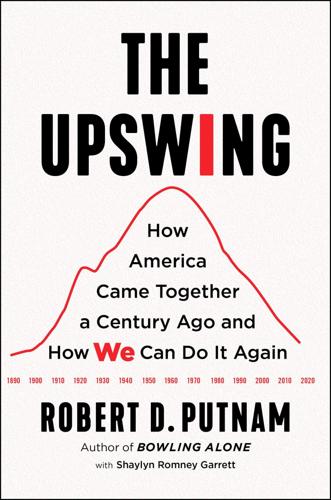
The Upswing: How America Came Together a Century Ago and How We Can Do It Again
by
Robert D. Putnam
Published 12 Oct 2020
In the now twenty years that we have known one another, through all the various roles I have played in his projects, and through the two books on which we have now collaborated, he has been one of the most important influences in my professional life. And he and his wife Rosemary are shining examples of personal grace, generosity, and kindness. I am also indebted to David Brooks and his team at the Aspen Institute’s Weave: The Social Fabric Project for giving me the opportunity to travel the country during my writing of this book to see firsthand the challenges facing American communities today as well as the myriad grassroots solutions well underway in every corner of our nation. I’d also like to thank David for mentoring me as a writer, helping me rekindle my passion for storytelling, and giving me courage to find my own voice.
…
In 2012, President Obama awarded him the National Humanities Medal, the nation’s highest honor for contributions to the humanities. Visit RobertDPutnam.com © JANICA LaRAE SHAYLYN ROMNEY GARRETT is a writer and award-winning social entrepreneur. She is a Founding Contributor to “Weave: The Social Fabric Project,” an Aspen Institute initiative. She also contributed to Robert D. Putnam and David E. Campbell’s American Grace. Shaylyn holds a degree in government from Harvard University and is a returned Peace Corps volunteer. Visit ShaylynRomneyGarrett.com SimonandSchuster.com www.SimonandSchuster.com/Authors/Robert-D-Putnam www.SimonandSchuster.com/Authors/Shaylyn-Romney-Garrett @simonbooks ALSO BY ROBERT D.
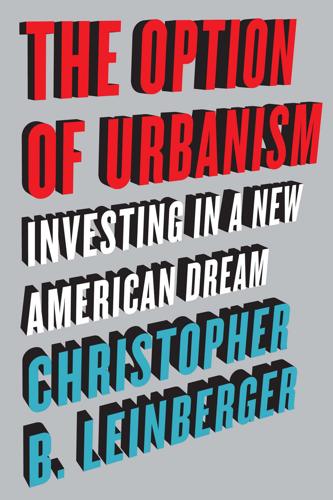
The Option of Urbanism: Investing in a New American Dream
by
Christopher B. Leinberger
Published 15 Nov 2008
After the pioneering investment by predominantly gay households, it has become one of the most hip and exciting places in the region. There is a significant concentration of residential and office space in Dupont Circle (figure 6.2), anchored by the largest embassy concentration in the world and think tanks such as the Brookings Institution and the Aspen Institute. The area includes more than 200 122 | THE OPTION OF URBANISM restaurants, from ethnic to white tablecloth; international, national, and local boutiques; more than fifteen small museums; thousands of rooms in hotels and small inns; and an entrance to one of the largest urban parks in the country, which is on Dupont Circle’s border with Georgetown.
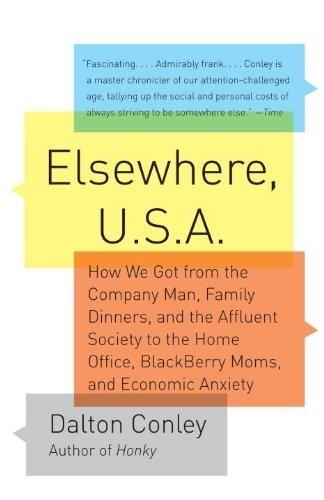
Elsewhere, U.S.A: How We Got From the Company Man, Family Dinners, and the Affluent Society to the Home Office, BlackBerry Moms,and Economic Anxiety
by
Dalton Conley
Published 27 Dec 2008
Dalton Conley and Brian Gifford, “Home Ownership, Social Insurance and the Welfare State,” Sociological Forum 21, no. 1 (March 2006): 55-82. 17. “Highlights of Annual 2006 Characteristics of New Housing: Manufacturing, Mining and Construction Statistics,” U.S. Census Bureau, at http://www.census.gov/const/www/highanncharac2006.html. 18. Pamela J. Perun, “Towards a Sensible System for Saving,” for the Aspen Institute-Initiative on Financial Security, Washington, D.C., 2006. 19. Michael Carliner, “Housing and GDP,” National Association of Home Builders, 2001. 20. Carter B. Horsley, “Loft Conversions Exceeding New Apartment Construction,” New York Times, October 12, 1980. 21. Richard Florida, The Rise of the Creative Class and How It’s Transforming Work, Leisure, Community and Everyday Life (New York: Basic Books, 2002). 22.
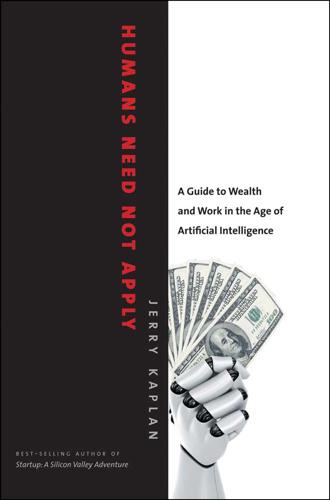
Humans Need Not Apply: A Guide to Wealth and Work in the Age of Artificial Intelligence
by
Jerry Kaplan
Published 3 Aug 2015
In addition to obsolete skills, some applicants may look like damaged goods to potential employers because of their extended unemployment, or they may be older than desired (though in principle this is illegal). 9. I draw these figures from http://data.bls.gov/projections/occupationProj, accessed December 31, 2014. 10. As summarized in “Reinventing Low Wage Work: Ideas That Can Work for Employees, Employers and the Economy,” Workforce Strategies Initiative at the Aspen Institute, accessed November 27, 2014, http://www.aspenwsi.org/wordpress/wp-content/uploads/RetailOverview.pdf. 11. http://www.wolframalpha.com/input/?i=revenue+per+employee+amazon+walmart+safeway, accessed November 29, 2014. 12. “E-commerce Sales,” Retail Insight Center of the National Retail Federation, 2014, http://research.nrffoundation.com/Default.aspx?

A Time to Build: From Family and Community to Congress and the Campus, How Recommitting to Our Institutions Can Revive the American Dream
by
Yuval Levin
Published 21 Jan 2020
The culture of activism in the university exposes students, often for the first time, to the argument that there exists a pervasive structure of social oppression in our society and simultaneously gives them means to address that injustice. It offers an entire moral system to students who feel as though society at large offers them no other such framework that they can respect. As the Aspen Institute’s April Lawson has put it, A vacuum has opened up in campus moral culture—and in moral culture in America writ large—such that the vision offered by the social justice leaders is speaking to a deeply felt hunger. The movement’s ferocity comes from this hunger, and until we find other ways to speak to it, we will find that measured, logical rejoinders à la “I agree with you that racism is a problem, I just think your way of addressing it is counterproductive” will fall on deaf ears.16 This doesn’t mean that the moral vision offered by the activists on campus is adequate or valid—but it does mean that this vision cannot be answered by arguments for free speech alone.
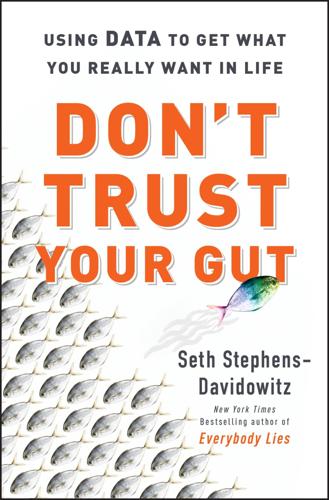
Don't Trust Your Gut: Using Data to Get What You Really Want in LIfe
by
Seth Stephens-Davidowitz
Published 9 May 2022
forty-one shades of blue: Douglas Bowman, “Goodbye, Google,” https://stopdesign.com/archive/2009/03/20/goodbye-google.html, March 20, 2009. $200 million per year in additional ad revenue: Alex Horn, “Why Google has 200m reasons to put engineers over designers,” Guardian, February 5, 2014. “All others have to bring data”: “Are we better off with the internet?” YouTube, uploaded by the Aspen Institute, July 1, 2012, https://www.youtube.com/watch?v=djVrLNaFvIo. Renaissance’s flagship Medallion fund: Gregory Zuckerman, The Man Who Solved the Market (New York: Penguin, 2019). “they’re just better than the rest of us”: Amy Whyte, “Famed Medallion fund ‘stretches . . . explanation to the limit,’ professor claims,” Institutional Investor, January 26, 2020, https://www.institutionalinvestor.com/article/b1k2fymby99nj0/Famed-Medallion-Fund-Stretches-Explanation-to-the-Limit-Professor-Claims.
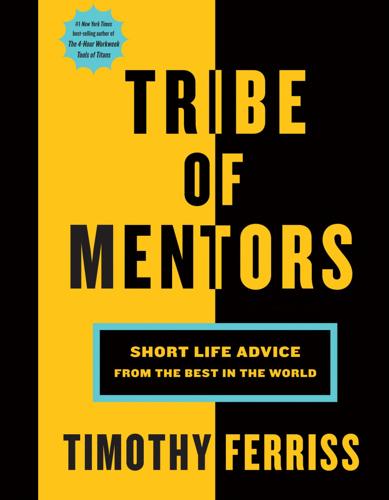
Tribe of Mentors: Short Life Advice From the Best in the World
by
Timothy Ferriss
Published 14 Jun 2017
She also co-founded Duterimbere, a microfinance institution in Rwanda. She began her career in international banking with Chase Manhattan Bank. Jacqueline currently sits on the advisory boards of Sonen Capital and the Harvard Business School Social Enterprise Initiative. She also serves on the Aspen Institute Board of Trustees and the board of IDEO.org, and is a member of the Council on Foreign Relations, World Economic Forum, and the American Academy of Arts and Sciences. Jacqueline was recently awarded the Forbes 400 Lifetime Achievement Award for Social Entrepreneurship. * * * What is the book (or books) you’ve given most as a gift, and why?
…
H., 343 Alwaleed bin Talal Foundation, 362 Amazon, 101 American Academy of Arts and Sciences, 324 America Online (AOL), 101, 345, 346 Anderson, Chris, 41, 407–9 Andy Warhol Foundation for the Visual Arts, 336 AngelList, 31 Aoki, Steve, 519–25 Aoki Foundation, 522 AOL, 101, 345, 346 A Plus, 250 Appiah, Kwame, 57 Apple AirPods headphones, 498 Apple Music, 37 Apple Pencil, 25 Arnold, John, 373–74 Aroma Housewares AHP-303/CHP-303 Single Hot Plate, 386 Aronofsky, Darren, 398–400 Ashley, Maurice, 368–70 Asna, 82 Aspen Institute, 324 Attia, Peter, 514–18 Audible, 133, 245 Authenticity, 81, 273, 344, 370, 530 Ayasdi, 200 B Babauta, Leo, 236–38 Back Buddy, 83 Ballmer, Steve, 59 Balsbaugh, Brian, 533–34 Bar complex, 466 Barkley, Gnarls, 204 Bartók, Béla, 341 Basecamp, 203 Bashō, Matsuo, 275 Bazaarvoice, 64 Be a STAR, 509 The Beastie Boys, 239 Beats Music, 37 Beats Solo headphones, 168–69 Behance, 459, 461–62 Bell, Mark, 309–12 Bell, Mike, 310 Belmont, Veronica, 100–103 Belsky, Scott, 459–62 Beltrame, Lorenzo, 563, 564 Benchmark, 459 Benioff, Marc, 445–50 Bergeron, Ben, 421–23 Bezold, Michael, 369 Big questions, 565 Birdhouse Skateboards, 298 Bitcoin, 153, 382, 507 Bitcoin magazine, 153 BitGold, 382 BitTorrent, Inc., 404 Black List, 277 Blaine, David, 448 Blakely, Sara, 352 Blinkist app, 301 Blockstack, 468, 492 Blogger, 401, 402 Blue Origin, 470 BMG Entertainment, 289 Bodily awareness, 552–53 in decision making, 61, 274 in exercise, 316, 426, 490 in handling overwhelm/lack of focus, 4, 238, 274 in meditation, 559, 560 with music, 57 Body Back Company, 83 Boeree, Liv, 300–304 Bohr, Niels, 39 Bono, 288 Boone, Amelia, xvii–xviii, 127–30 Bose noise-canceling earphones, 158 Botmakers.org, 101 Botwiki.org, 101 Boyle, Hal, 182, 184 Brach, Tara, 540 Brain.fm app, 168–69 Brand, Stewart, 332–34 Branson, Richard, 78, 451 Breakthrough Energy Ventures, 373 Breathing techniques, 99 to create nasal apnea sequence, 338 heart rate variability, 189, 198, 430 in meditation, 89, 559–60 when making decisions, 124 when stressed/overwhelmed/unfocused, 138, 144, 238, 274, 415, 438–39, 491 Bridgewater Associates, 321 Brown, Brené, 232–34, 356 B-School, 451 Bucky neck pillow, 509 Buddhism, 237, 270, 272, 285 Buffett, Warren, 204, 205, 209, 321 BuiltLean, 290 Burry, Mike, 62 Busyness, 26 Buterin, Vitalik, 153–55 Butterfly Petr Korbel table tennis racket, 330 C Cain, Susan, 10–13, 41 Call, Jon, 385–88 Callaway, 284 Cameron, James, 275 Cameron, William Bruce, 206 Campbell, Bill, 65 Campbell, Joseph, 16, 112, 335 Canfield, Jack, 432 Cantley, Lewis, 107–11 Carmichael, Christopher, 259 Carrey, Jim, 138 Carroll, Pete, 412 Carse, James P., 403, 540 Carter, Maverick, 79 Cartier, 75 Case, Jean, 345 Case, Steve, 345–48 Case Foundation, 345 Centaurus Energy, 373 Center for Applied Rationality, 163 The Center for Public Integrity, 211 Centre of Entrepreneurship, 451 Chadha, Richa, 85–90 Chainani, Soman, 70–74 Chanel No. 5, 87 Charell, Ralph, 156 Charitable giving, 202, 262–63, 321, 324, 345 Charyn, Jerome, 330 Chegg, 64 Chesterton, G.

Makers
by
Chris Anderson
Published 1 Oct 2012
Atoms and bits. Maryam Alavi, vice-dean of Emery University’s Goizueta Business School, argues that the only way firms can continue to have lower transaction costs than the open market is if they become more complex internally in order to respond to the increasingly complex external market. In the Aspen Institute’s “The Future of Work,” she explained that this was due to the “law of requisite variety” in systems theory, and she argued that a system must be as complex as the environment it is working within: “There are parts of the organization that are going to become more hierarchical because of the uncertainties that they deal with or don’t deal with.

How to Run the World: Charting a Course to the Next Renaissance
by
Parag Khanna
Published 11 Jan 2011
I would also like to thank Bonnie Jenkins, my program officer from the Ford Foundation, which generously supported research for this book. Colleagues from fraternal think tanks have also been enormously helpful: Ben Barber, David Callahan, Miles Rapoport, and Michael Edwards of Demos; David Devlin-Foltz and Peter Reiling of the Aspen Institute; Stewart Patrick of the Council on Foreign Relations; and Joerg Husar, Guenther Maihold, and Ulrich Schneckener of the Stiftung Wissenschaft und Politik. Numerous experts in global affairs have provided wisdom and insights over the course of my research: Kishore Mahbubani, Barry Carin, Gordon Smith, Steve Weber, Ely Ratner, Bruce Jentleson, Nazneen Barma, Alan Alexandroff, Andy Cooper, Jonathan Hausmann, Stephen Stedman, Thomas Wright, Vladislava Inozemtsev, Daniele Archibugi, John Dunn, Natan Sharansky, Amitai Etzioni, Ekaterina Kuznetsova, Jim DeWilde, Janice Stein, Paul Mayer, Rana Sarkar, Thierry Malleret, Chandran Nair, Barry Buzan, David Held, Danny Quah, Tyler Brule, Peter Marber, Raymond Saner, Lichia Yiu, Iver Neumann, James Der Derian, Lora Viola, Vikram Raghavan, Pamela Mar, Francisco Martinez Montes, Simon Maxwell, James Traub, Ethan Burger, Fouad Ghanma, Neemat Frem, Pete Singer, Ali Wyne, Nadia Sood, Paul Romer, Sara Agarwal, Joel Harrington, and Philip Zelikow.
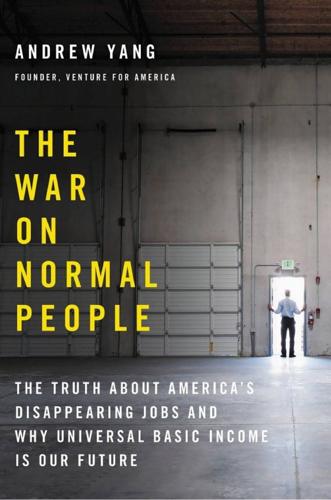
The War on Normal People: The Truth About America's Disappearing Jobs and Why Universal Basic Income Is Our Future
by
Andrew Yang
Published 2 Apr 2018
For a woman or person of color trying to start a growth business, every step is harder—lower personal savings, lower access to capital, dismissive or creepy investors, fewer professional role models and mentors, potentially more personal obligations, and so on. Venture for America is trying to help address this—our last class was 43 percent women and 25 percent black and Latino. Entrepreneurs have among the most powerful mindsets of abundance of anyone. Silicon Valley, TED, the Aspen Institute—they’re uplifting places because the people in attendance believe that all things are possible, often because they’ve made unlikely things happen for themselves. You can say something about starting a new company or organization, and people simply nod at you and think, “Of course.” It’s like there’s more oxygen for ideas, along with more money.

The Innovators: How a Group of Inventors, Hackers, Geniuses and Geeks Created the Digital Revolution
by
Walter Isaacson
Published 6 Oct 2014
(Speaking of which, I hope that someone will soon invent a cross between an enhanced eBook and a wiki so that new forms of multimedia history can emerge that are partly author-guided and partly crowdsourced.) I also want to thank Alice Mayhew and Amanda Urban, who have been my editor and agent for thirty years, and the team at Simon & Schuster: Carolyn Reidy, Jonathan Karp, Jonathan Cox, Julia Prosser, Jackie Seow, Irene Kheradi, Judith Hoover, Ruth Lee-Mui, and Jonathan Evans. At the Aspen Institute, I am indebted to Pat Zindulka and Leah Bitounis, among many others. I’m also lucky to have three generations of my family willing to read and comment on a draft of this book: my father, Irwin (an electrical engineer); my brother, Lee (a computer consultant); and my daughter, Betsy (a tech writer, who first turned me on to Ada Lovelace).
…
(Lanier), ref1 Wiener, Norbert, ref1, ref2, ref3, ref4, ref5, ref6, ref7 Wiesner, Jerome, ref1, ref2 WiFi, ref1n Wigner, Eugene, ref1 Wikipedia, ref1, ref2, ref3, ref4, ref5, ref6, ref7, ref8, ref9 creation of, ref1 WikiWikiWeb, ref1, ref2 Wilkes, Maurice, ref1, ref2 Williams, Evan, ref1, ref2, ref3 Williams, Frederic Calland, ref1 Wilson, Woodrow, ref1 Windows, ref1, ref2, ref3 Winer, Dave, ref1 Winograd, Terry, ref1, ref2 Wired, ref1n, ref2, ref3 Wojcicki, Susan, ref1 Wolfe, Tom, ref1, ref2, ref3, ref4, ref5, ref6 women: as ENIAC programmers, ref1, ref2 math doctorates received by, ref1 word processing, 2467 Wordsworth, William, ref1 World Book Encyclopedia, ref1, ref2 World Health Organization, ref1 World’s Fair (1939), ref1 World War II, ref1, ref2, ref3, ref4 code breaking in, ref1 science promoted by, ref1 Z3 destroyed in, ref1, ref2 World Wide Web, ref1, ref2 Berner-Lee’s collaborative vision of, ref1, ref2, ref3 initial creation of, ref1 placed in public domain, ref1, ref2 profits from, ref1, ref2 World Wide Web Consortium (W3C), ref1 Wozniak, Steve, ref1, ref2, ref3n, ref4n, ref5, ref6, ref7, ref8, ref9, ref10, ref11, ref12, ref13 Apple partnership share of, ref1 Breakout work of, ref1, ref2 terminal designed by, ref1 Xanadu, ref1, ref2 Xerox, ref1 Xerox Alto, ref1, ref2 Xerox PARC, ref1, ref2, ref3, ref4, ref5, ref6, ref7, ref8, ref9, ref10, ref11, ref12 Ethernet invented at, ref1 Xerox Star, ref1 X Mosaic, ref1 Yahoo!, ref1, ref2, ref3, ref4, ref5, ref6 Yang, Jerry, ref1 YouTube, ref1 Z1, ref1 Z2, ref1 Z3, ref1, ref2 Znaimer, Sam, ref1 Zuckerberg, Mark, ref1 Zuse, Konrad, ref1, ref2, ref3, ref4 influence of, ref1, ref2 ABOUT THE AUTHOR Walter Isaacson, the CEO of the Aspen Institute, has been the chairman of CNN and the managing editor of Time magazine. He is the author of Steve Jobs; Einstein: His Life and Universe; Benjamin Franklin: An American Life; and Kissinger: A Biography, and is the coauthor, with Evan Thomas, of The Wise Men: Six Friends and the World They Made.
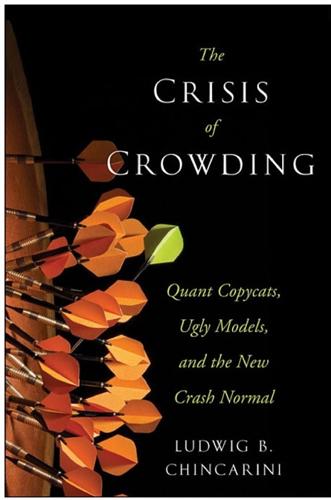
The Crisis of Crowding: Quant Copycats, Ugly Models, and the New Crash Normal
by
Ludwig B. Chincarini
Published 29 Jul 2012
After that recovery, on June 1, 2008, PGAM substantially reduced its risk and its balance sheet. Meriwether was optimistic, hoping that the worst was over. In August, he called Sir Andrew Crockett, president of J.P. Morgan International, who had recently returned from the annual Jackson Hole conference and Aspen Institute Roundtable.6 Aspen conference speakers included former Salomon CEO and Citigroup vice chairman Sir Deryck Maughan, who at the time was a partner at KKR. His team had done extensive research on the banking system, which included visiting a large number of banks as well as government officials.
…
Trade timing depends on experience and lots of information from pension funds, life insurance companies, and other Japanese investors. 6. The annual meeting in Jackson Hole, Wyoming, is a mecca for financial experts. Leading economists, central bankers, and finance practitioners come to discuss the state of the global economy. It is preceded by a meeting of financial leaders at the Global Economic Forum at the Aspen Institute. 7. Crockett quipped to Maughan, “I hope we’re not one of the twelve.” 8. This is discussed in more detail in Chapter 11 on Lehman Brothers. 9. John Holloway, the head of risk control at JWMP, left the firm in September. 10. O’Hara (2008). 11. One lesson from this is that it is wise to choose two different institutions as custodian and counterparty. 12.
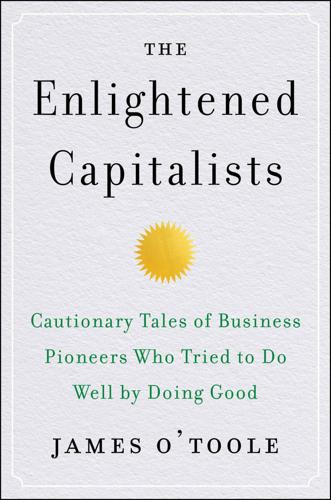
The Enlightened Capitalists
by
James O'Toole
Published 29 Dec 2018
In the early 1980s Arco weathered the increasing criticism directed toward it, but the rogue behavior of CEO Anderson set the stage for the company’s eventual undoing. When it became known that Anderson had donated several million dollars of Arco company funds to the Los Angeles County Museum of Art to erect a building named in his honor, and for many years had underwritten the sizable debts of the Aspen Institute using company money, Arco’s board fired him on the grounds that he had spent shareholders’ money for personal reasons. If nothing else, Anderson’s actions were a violation of Arco’s stated principle of leaving decisions about corporate charitable contributions in the hands of its professional philanthropic staff.
…
He was Chairman of the Task Force on Work in America and Director of Field Investigations for the Commission on Campus Unrest during the Nixon administration. He served on the Board of Editors of the Encyclopaedia Britannica, was editor of The American Oxonian magazine, and is currently a contributing editor to Strategy+ magazine. He has been Executive Vice President, and later the Mortimer J. Adler Senior Fellow, at the Aspen Institute, and Chairman of the Booz/Allen/Hamilton Strategic Leadership Center. He is currently a Senior Fellow at Santa Clara University’s Markkula Center for Applied Ethics. O’Toole’s research and writings have mainly been in the areas of leadership, ethics, and corporate culture. Among his nineteen books, Vanguard Management was chosen as “One of the best business and economics books of the year” by the editors of Business Week.

Exponential Organizations: Why New Organizations Are Ten Times Better, Faster, and Cheaper Than Yours (And What to Do About It)
by
Salim Ismail
and
Yuri van Geest
Published 17 Oct 2014
Dependencies or Prerequisites • Enables coherent exponential growth • Binds collective aspirations • Attracts top talent across the ecosystem • Supports a cooperative/non-political culture • Enables agility and learning • Must be unique • Leaders must walk the walk • Must support all three letters in acronym Now that we understand the meaning and purpose of the Massive Transformative Purpose, it’s time to look at the five external characteristics that define an Exponential Organization, for which we use the acronym SCALE: Staff on Demand Community & Crowd Algorithms Leveraged Assets Engagement Staff on Demand In a 2012 white paper for the Aspen Institute, Michael Chui, a partner at the McKinsey Global Institute, described employment theory in the 20th century as follows: The best way to harness human talent is through full-time, exclusive employment relationships where people are paid for the amount of time they spend at a common location. They should be organized in stable hierarchies where they are evaluated primarily through the judgment of their superiors, and what and how they do their jobs is prescribed.
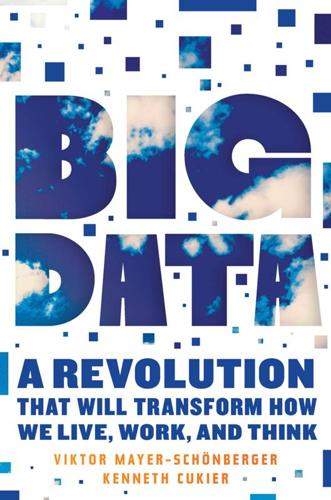
Big Data: A Revolution That Will Transform How We Live, Work, and Think
by
Viktor Mayer-Schonberger
and
Kenneth Cukier
Published 5 Mar 2013
Henry Tricks and Dominic Zeigler, my colleagues in Tokyo, were role models for always seeking out the novel and expressing it beautifully. Oliver Morton provided his customary wisdom when it was most needed. The Salzburg Global Seminar in Austria offered the perfect combination of idyllic repose and intellectual inquisition that helped me write and think. An Aspen Institute roundtable in July 2011 sparked many ideas, for which I thank the participants and the organizer, Charlie Firestone. Also, my appreciation goes to Teri Elniski for her tremendous support. Frances Cairncross, the Rector of Exeter College, Oxford, offered a tranquil place to stay and great encouragement.

The Politics Industry: How Political Innovation Can Break Partisan Gridlock and Save Our Democracy
by
Katherine M. Gehl
and
Michael E. Porter
Published 14 Sep 2020
We are very appreciative of reviews and feedback from Scott Page, Austin Ramirez, Daniella Ballou-Aares, Erik Kesting, Margo Weinstein, Greg Orman, Bill Eggers, Adam Corndorf, Brent Gottlieb, Robert Secter, David Epstein, Gabrielle Lieberman, and one anonymous reviewer (you know who you are). Many others contributed by providing valuable support, input, platforms, and settings that allowed us to speak about and promote this movement. They include the Boston Globe’s Linda Henry, Chrissy Houlahan, the Skoll Foundation and Sally Osberg, Kitty Boone and the Aspen Institute, Bill Ackman, Sarah Longwell, Seth and Beth Klarman, Wendy Dodson, Alan Schwartz, Bill George, Charlie Frankel, Edward Chapman, Theresa Mintle, Anke Faber, Dan Tierney, Steve Schaumberger, Michael Sanchez, Anne Wedner, Jamie Clare Flaherty, Sam Elghanayan, Jason Childress, Ray Carey, and the Detroit Regional Chamber’s Sandy Baruah.
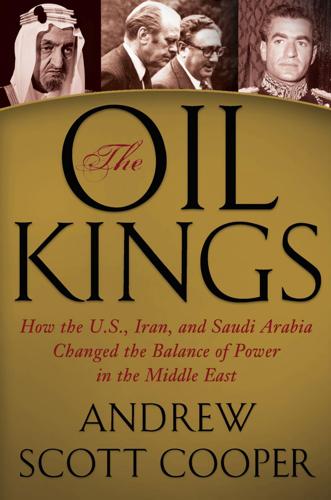
The Oil Kings: How the U.S., Iran, and Saudi Arabia Changed the Balance of Power in the Middle East
by
Andrew Scott Cooper
Published 8 Aug 2011
Ford Library. 302 “Zarb’s proposals would put him in a spot”: Telcon, “Kissinger-Ansary,” 4:48 P.M., April 2, 1976, National Security Archive. 303 “the artist had grasped Ford’s native stupidity”: Alam, 486. 303 an Iranian army tribunal: “10 Iran Rebels Get Death for 8 Killings,” Los Angeles Times, January 1, 1976. 303 The dour public mood: Eric Pace, “Troubled Iran Celebrates Reign of Shah’s Father,” New York Times, March 3, 1976. 303 A rumor had taken hold: Alam, 475. 303 “Particularly on that day”: Farah Pahlavi, An Enduring Love: My Life with the Shah (New York: Miramax, 2004), 261. 303 “traumatized by the conflicting winds”: Jane W. Jacqz, editor, “Opening Address by Her Imperial Majesty The Shahbanou of Iran,” Iran: Past, Present and Future (New York: Aspen Institute/Persepolis Symposium, 1976), 9. 303 “alarming”: Eric Pace, “Iranian Aides and Scholars Stress Urgency of Social Reforms,” New York Times, October 10, 1975. 303 “vulnerable to popular disaffection”: Ibid. 303 “dangerous”: Eric Pace, “Tehran Projects Face Challenges,” New York Times, June 6, 1976. 304 “from poking his nose”: Alam, 472. 304 swelling on her husband’s upper lip: Farah Pahlavi, An Enduring Love, 262. 304 immersing her and their oldest son, Crown Prince Reza, in the art of statecraft: Ibid. 304 “Several times a week Reza and I”: Ibid. 304 President Ford wrote a letter of congratulations: Letter from President Ford to His Imperial Majesty Mohammad Reza Pahlavi, Shahanshah of Iran, March 19, 1976, Presidential Correspondence with Foreign Leaders, Box 2, “Iran—The Shah (1)-(2), National Security Adviser,” Gerald R.
…
Hoveyda, Fereydoun. The Fall of the Shah. New York: Wyndham, 1979. Huntington, Samuel P. Political Order in Changing Societies. New Haven: Yale University Press, 1968. Isaacson, Walter. Kissinger: A Biography. New York: Simon & Schuster, 2005. Jacqz, Jane W. Iran: Past, Present and Future. New York: Aspen Institute for Humanistic Studies, 1976. Jones, Toby Craig. Desert Kingdom: How Oil and Water Forged Modern Saudi Arabia. Cambridge, Mass.: Harvard University Press, 2010. Kapuscinski, Ryszard. Shah of Shahs. New York: Penguin, 1985. Karl, Terry Lynn. The Paradox of Plenty: Oil Booms and Petro-States.
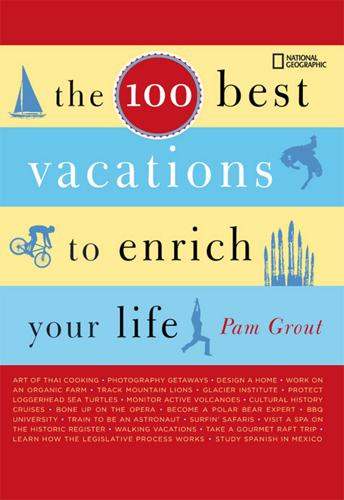
The 100 Best Vacations to Enrich Your Life
by
Pam Grout
Published 14 May 2007
Anderson Ranch is only 10 miles from Aspen, a mecca not only for Hollywood’s vacationing glitterati but also for arts and culture. In other words, you can spend your days making photography and your evenings soaking up world-class performing arts. Aspen is home to the Aspen Music Festival, the Aspen Institute, the Aspen Santa Fe Ballet, the Aspen Center for Physics, Theatre Aspen, the Aspen Art Museum, the Aspen Filmfest, Jazz Aspen Snowmass, and on and on. But one of the most unlikely Aspen cultural events is the Ultimate Taxi. Operated by Jon Barnes, a former ski bum, the remodeled Checker cab has strobes, a fog machine, disco lights, a dry ice machine, stage lights, neon, and a multidisk CD/DVD system.
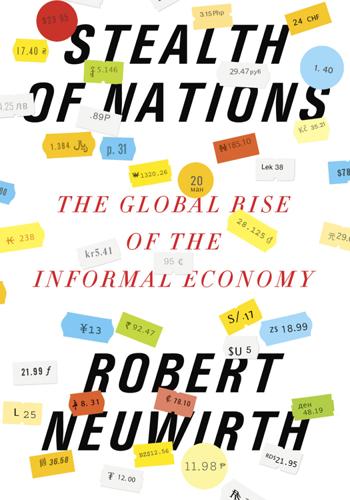
Stealth of Nations
by
Robert Neuwirth
Published 18 Oct 2011
The Early Growth of the European Economy: Warriors and Peasants from the Seventh to the Twelfth Century. Ithaca, NY: Cornell University Press, 1974. Dugas, Don-John. Marketing the Bard: Shakespeare in Performance and Print. Columbia, MO: University of Missouri Press, 2006. Edgcomb, Elaine, and Tamra Thetford. The Informal Economy: Making It in Rural America. Washington, D.C.: Aspen Institute, 2004. Enzensberger, Hans Magnus. Critical Essays. New York: Continuum, 1982. ———. Political Crumbs. London: Verso, 1990. Feldman, Eric A. “The Tuna Court: Law and Norms in the World’s Premier Fish Market.” California Law Review, vol. 94 (Mar. 2006). Fernández, Macedonio. The Museum of Eterna’s Novel.
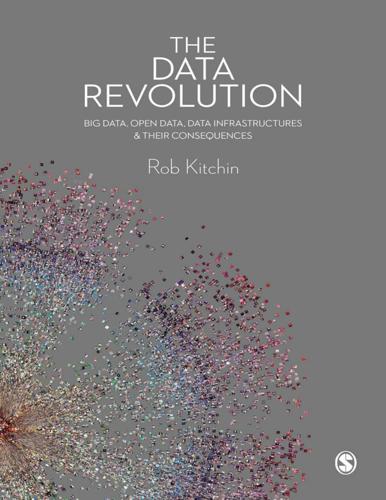
The Data Revolution: Big Data, Open Data, Data Infrastructures and Their Consequences
by
Rob Kitchin
Published 25 Aug 2014
Bielsa, A. (2013) ‘The Smart City Project in Santander’, Sensors, 1 March, http://www.sensorsmag.com/wireless-applications/smart-city-project-santander-11152 (last accessed 27 May 2013). Boellstorff, T. (2013) ‘Making big data, in theory’, First Monday, 18(10), http://firstmonday.org/ojs/index.php/fm/article/view/4869/3750 (last accessed 3 January 2014). Bollier, D. (2010) The Promise and Peril of Big Data. The Aspen Institute. http://www.aspeninstitute.org/sites/default/files/content/docs/pubs/The_Promise_and_Peril_of_Big_ (last accessed 1 October 2012). Bonney, R., Ballard, H., Jordan, R., McCallie, E., Phillips, T., Shirk, J. and Wilderman, C.C. (2009) Public Participation in Scientific Research: Defining the Field and Assessing Its Potential for Informal Science Education. http://www.informalscience.org/documents/PPSRreport 20FINAL.pdf.

Made to Stick: Why Some Ideas Survive and Others Die
by
Chip Heath
and
Dan Heath
Published 18 Dec 2006
Thanks, Tod, Hunter, and Darby. We hope you enjoy the book. We had fun writing it. ABOUT THE AUTHORS CHIP HEATH is a professor of organizational behavior in the Graduate School of Business at Stanford University. He lives in Los Gatos, California. DAN HEATH is a consultant to the Policy Programs at the Aspen Institute. A former researcher at Harvard Business School, he is a co-founder of Thinkwell, an innovative new-media textbook company. He lives in Raleigh, North Carolina. Copyright © 2007, 2008 by Chip Heath and Dan Heath All rights reserved. Published in the United States by Random House, an imprint of The Random House Publishing Group, a division of Random House, Inc., New York.

The Impulse Society: America in the Age of Instant Gratification
by
Paul Roberts
Published 1 Sep 2014
In other words, in a world of truly efficient markets, if managers “indulge in value-destroying actions,” Rajgopal says, “the market finds out eventually and their future wages get cut.”13 But in the bizarro world of contemporary corporate finance, the opposite is true. The stock market today is so focused on short-term performance, says Judy Samuelson, an expert in corporate short-termism at the Aspen Institute, that even big, successful companies—the pillars of the global economy, and the traditional font of most of our technology—must tread carefully when investing in the long term. Samuelson notes that when Google announced plans to hire nineteen hundred employees in 2011, the company’s share price went into a massive swoon, eventually tumbling more than 20 percent,14 as investors scorned “merely the idea that the company would be spending money.”15 The market’s distaste for long-term investment can be painfully explicit.

No Ordinary Disruption: The Four Global Forces Breaking All the Trends
by
Richard Dobbs
and
James Manyika
Published 12 May 2015
At MGI he leads work on the global economy, growth and productivity, competitiveness, and on technology and the digital economy. He was appointed by President Obama as vice chair of the President’s Global Development Council. He has served on the US Department of Commerce Innovation Advisory Board and is a board member of the Aspen Institute, the Oxford Internet Institute, and Harvard’s Hutchins Center. He is a Senior Fellow at the Brookings Institution. Jonathan Woetzel, based in China since 1985, cofounded McKinsey’s practice there. He leads McKinsey’s Cities Special Initiative and cochairs the nonprofit think tank Urban China Initiative.

The Second Machine Age: Work, Progress, and Prosperity in a Time of Brilliant Technologies
by
Erik Brynjolfsson
and
Andrew McAfee
Published 20 Jan 2014
In other words, so-called “black swan” events are more common if the underlying distribution is a power law than if it’s a normal distribution. 25. Technically, the bulk of the incomes are best described by a log-normal distribution, a variant of the traditional normal distribution, while the best fit for the top incomes is a power law. 26. Presentation by Kim Taipale at the 21st Annual Aspen Institute Roundtable on Information Technology, August 1, 2013. 27. If you’re a nerd, you may know that in some cases the mean of the power-law distribution is actually infinite. Specifically, when the exponent in the distribution (k in the above equation) is less than two, the mean of the distribution is infinite. 28.
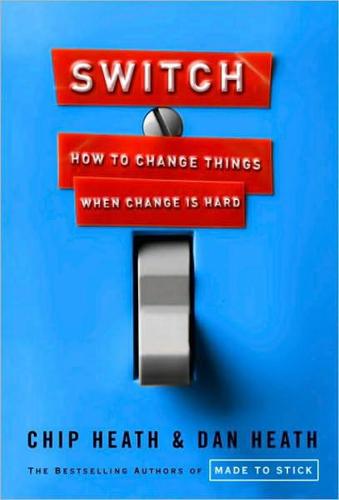
Switch: How to Change Things When Change Is Hard
by
Chip Heath
and
Dan Heath
Published 10 Feb 2010
One manager at a glass company suggested, ‘it’s hard to get excited about 15% return on equity.’” Destination postcards do double duty: They show the Rider where you’re headed, and they show the Elephant why the journey is worthwhile. —————————— CLINIC —————————— How Can You Get Corporations to Avoid Short-Term Thinking? SITUATION Judy Samuelson heads a policy think tank within the Aspen Institute called the Business and Society Program. It’s committed to fighting “short-termism” in the business world. Samuelson points out that it’s hard to solve global problems (global warming, poverty, energy needs) without the help of the business sector. After all, some businesses have more resources than entire countries.
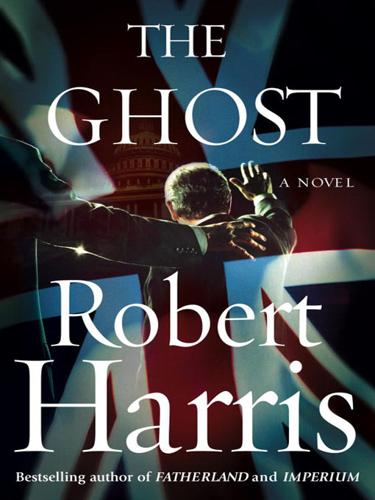
The Ghost
by
Robert Harris
Published 22 Oct 2007
Do we possess that information?” He stood holding the door open and gave me an unfriendly smile. When Mrs. Emmett appeared, he didn’t bother to introduce me. She was carrying a desk diary. “That was the Colorado weekend,” she said and showed the book to her husband. “Of course it was,” he said. “We were at the Aspen Institute.” He flourished the page at me. “‘Bipolar Relationships in a Multi-polar World.’” “Sounds fun.” “It was.” He closed the diary with a definitive snap. “I was the main speaker.” “You were there the whole weekend?” “I was,” said Mrs. Emmett. “I stayed for the skiing. Emmett flew back on Sunday, didn’t you, darling?”

Black Code: Inside the Battle for Cyberspace
by
Ronald J. Deibert
Published 13 May 2013
Henry Lambright, Space Policy in the Twenty-First Century. 3: BIG DATA: THEY REAP WHAT WE SOW 1 Big Data: They Reap What We Sow: On big data, see danah boyd and Kate Crawford, “Critical Questions for Big Data: Provocations for a Cultural, Technological, and Scholarly Phenomenon,” Information, Communication, & Society 15, no.5 (2012): 662–679; and David Bollier, The Promise and Peril of Big Data, Aspen: The Aspen Institute, 2010, http://www.aspeninstitute.org/sites/default/files/content/docs/pubs/The_Promise_and_Peril_of_Big_Data.pdf. 2 Malte Spitz had virtually every moment of his life tracked: The Malte Spitz timeline can be found in Malte Spitz, “Six Months of My Life in 35,000 Records,” http://www.malte-spitz.de/blog/4103927.html. 3 IBM predicts that in 2013, we will be producing five exabytes: IBM explains big data in “What is Big Data?

Bitcoin Billionaires: A True Story of Genius, Betrayal, and Redemption
by
Ben Mezrich
Published 20 May 2019
Whereas each time another example of Zuckerberg’s Shakespearean betrayals became public, the media seemed to look the other way. Even Larry Summers, the former president of Harvard, took a shot at them, publicly calling them “assholes” while onstage at Fortune’s Brainstorm Tech Conference, hosted at the Aspen Institute. The twins’ offense? Wearing jackets and ties when they’d attended President Summers’s office hours in April of 2004 to discuss Zuckerberg’s duplicitous behavior—behavior they believed was a direct violation of the Harvard Student Handbook, specifically the part of the Handbook that stated: All students will be honest and forthcoming in their dealings with members of the Harvard community.
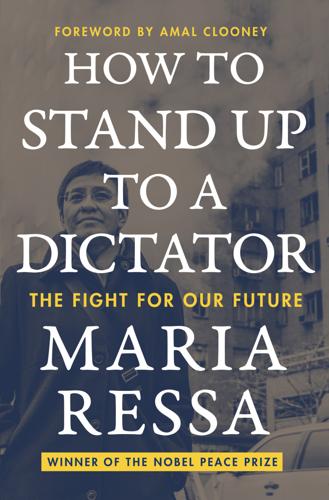
How to Stand Up to a Dictator
by
Maria Ressa
Published 19 Oct 2022
“Omidyar Network Invests in Rappler,” Rappler, November 5, 2015, https://www.rappler.com/nation/109992-omidyar-network-invests-rappler/. 32.Kara Swisher, “A Journalist Trolled by Her Own Government,” New York Times, February 22, 2019, https://www.nytimes.com/2019/02/22/opinion/maria-ressa-facebook-philippines-.html. 33.Natashya Gutierrez, “State-Sponsored Hate: The Rise of the Pro-Duterte Bloggers,” Rappler, August 18, 2017, https://www.rappler.com/newsbreak/in-depth/178709-duterte-die-hard-supporters-bloggers-propaganda-pcoo/; Maria Ressa, “Americans, Look to the Philippines to See a Dystopian Future Created by Social Media,” Los Angeles Times, September 25, 2019, https://www.latimes.com/opinion/story/2019-09-24/philippines-facebook-cambridge-analytica-duterte-elections. 34.Rachel Hatzipanagos, “How Online Hate Turns into Real-Life Violence,” Washington Post, November 30, 2018, https://www.washingtonpost.com/nation/2018/11/30/how-online-hate-speech-is-fueling-real-life-violence/. See also “From Digital Hate to Real World Violence” (video), The Aspen Institute, June 16, 2021, https://www.aspeninstitute.org/events/from-digital-hate-to-real-world-violence/; and Morgan Meaker, “When Social Media Inspires Real Life Violence,” DW, November 11, 2018, https://www.dw.com/en/when-social-media-inspires-real-life-violence/a-46225672. 35.Hatzipanagos, “How Online Hate Turns into Real-Life Violence.” 36.See Natashya Gutierrez, “State-Sponsored Hate: the Rise of the Pro-Duterte Bloggers,” Rappler, August 18, 2016, https://www.rappler.com/newsbreak/in-depth/178709-duterte-die-hard-supporters-bloggers-propaganda-pcoo/. 37.Watch the video here: “Free Basics Partner Stories: Rappler,” April 12, 2016, https://developers.facebook.com/videos/f8-2016/free-basics-partner-stories-rappler/. 38.Michael Scharff, “Building Trust and Promoting Accountability: Jesse Robredo and Naga City, Philippines, 1988–1998,” Innovations for Successful Societies, Woodrow Wilson School of Public and International Affairs, Princeton University (successfulsocieties.princeton.edu), July 2011, https://successfulsocieties.princeton.edu/publications/building-trust-and-promoting-accountability-jesse-robredo-and-naga-city-philippines; and transcript and audio of interview with Jesse Robredo, March 8, 2011, https://successfulsocieties.princeton.edu/interviews/jesse-robredo. 39.
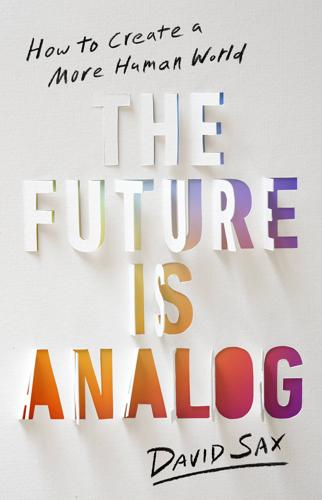
The Future Is Analog: How to Create a More Human World
by
David Sax
Published 15 Jan 2022
Despite a surprisingly large contingent of extremists, Nazis, anarchists, antivaxxers, and Trump death cultists, there seems to be a fairly common desire across the political spectrum to rein in the jerks. One of the key things about all these efforts is the role that in-person, analog conversation plays in them. “We are really trying to rebuild our nation’s social trust,” said Frederick Riley, who runs the Aspen Institute’s Weave project, created in 2018 by New York Times opinion columnist David Brooks. The basic concept is to work with groups, individuals, and communities across America to repair the social fabric frayed by politics. Though Brooks later stepped down from the project (partly due to a conflict of interest around its funding by Facebook), Weave has continued.
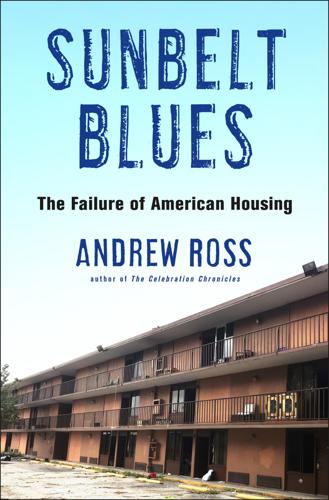
Sunbelt Blues: The Failure of American Housing
by
Andrew Ross
Published 25 Oct 2021
Jack Witthaus, “As Banks Shy Away, Private Equity Steps In to Fund More Orlando Real Estate Deals,” Orlando Business Journal, September 23, 2020, https://www.bizjournals.com/orlando/news/2020/09/23/orlando-commercial-projects-fewer-bank-loans.html. 2. Emily Benfer et al., “The COVID-19 Eviction Crisis,” Aspen Institute, August 7, 2020, https://www.aspeninstitute.org/blog-posts/the-covid-19-eviction-crisis-an-estimated-30-40-million-people-in-america-are-at-risk/. 3. Not untypically, Florida proved to be a worst-case scenario because state law requires tenants facing eviction to pay the rent they owe into the court registry just to get a hearing for their case.

Kissinger: A Biography
by
Walter Isaacson
Published 26 Sep 2005
The phone rang and his distinctive voice came on to say, “Well, Walter, even the Thirty Years War had to end at some point. I will forgive you.” (He did allow that his wife, Nancy, both loyal and smart, was partial to the Hunded Years War.) Since then, we have worked together on various projects, including a Middle East program at the Aspen Institute. In our recent conversations, Kissinger has contended, persuasively, that he has always recognized the role of values in forging a sustainable foreign policy. For him there is a balance that must be struck between a nation’s interests and its ideals, and that balance is best struck unsentimentally.
…
According to those who helped handle his personal finances, Kissinger’s other sources of income during his first year included a $10,000-a-year fee as counselor to the Chase Manhattan Bank’s international advisory committee; a part-time professorship at Georgetown University in Washington paying $35,000 a year; a senior fellowship at the Aspen Institute paying $20,000 a year; and a dozen or so speeches, mainly to corporate audiences, at up to $15,000 each. But Kissinger’s main occupation for his first four years out of office was writing his memoirs. His agent, Marvin Josephson, was able to secure $5 million worldwide for the book, including close to $2 million from Little, Brown for the U.S. hardback rights.
…
.: Jewish refugees in, 39–40, 48 Kissinger’s views on, 40, 41, 43 as “melting pot,” 39–40 Operations Research Office of, 80–81 Army Signal Corps, U.S., 202 Army Specialized Training Program, U.S., 41–42 Aron, Raymond, 73 Ascher, Alan, 38 Leopold Ascher Brush Company, 37–38 Ascoli, Max, 89 Ash, Roy, 136–37 Ashley, Cliff, 469 “Asia After Viet Nam” (Nixon), 335 Aspen Institute, 709 Assad, Hafiz al-: Geneva Conference (1973) opposed by, 543–44 Kissinger’s meetings with, 543–44, 566–67 Kissinger’s relationship with, 278, 279, 553, 578, 654, 656 in shuttle diplomacy, 543–44, 566–567, 570, 571, 572 Associated Press (AP), 119, 307 Astor, Brooke, 753, 754 Atkins, Ollie, 597 Atlantic Alliance, 721, 756 Atlantic Richfield, 748 Aubrac, Raymond, 121, 123, 294–95 Aufbau, 713 Auletta, Ken, 757 Awami League, 371, 372 babbler, electronic, 412 Bach Mai hospital, bombing of, 470 back channels: bureaucracy circumvented by, 206, 208–9 concentration of power in, 327 Congress circumvented by, 159, 206, 207, 209, 327 effectiveness of, 206, 207–8, 327, 398 ethics of, 208–9, 713 Kissinger’s reliance on, 157–59, 174, 205–9, 267, 404–5 leaks from, 201, 206 Nixon’s reliance on, 206, 207 official channels vs., 157–58, 205–206, 324–25 in Paris peace negotiations, 208, 209, 245, 255 public opinion circumvented by, 159, 206, 207, 209 in SALT negotiations, 208, 250, 321, 322–27 in shuttle diplomacy, 511–12, 547 State Department excluded from, 157–59, 207, 208 for U.S.
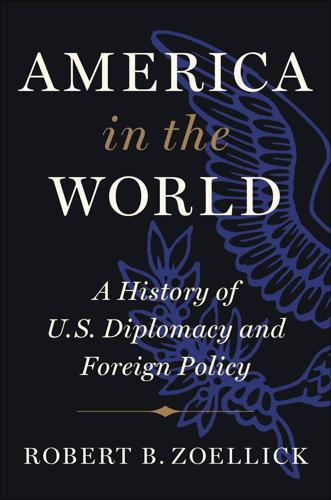
America in the World: A History of U.S. Diplomacy and Foreign Policy
by
Robert B. Zoellick
Published 3 Aug 2020
Civil War to caution well-meaning Americans to weigh carefully the consequences of trying to stop warring parties from finishing their battles. Sometimes peace requires one side to win, or both sides to fight until they decide more killing is futile. Michael Howard, “Managing Conflict: Lessons from the Past,” in Managing Conflict in the Post–Cold War World: The Role of Intervention, Aspen Institute (Queenstown, MD: Aspen Institute, 1996), 3. 43. Crook, Diplomacy, 91–93; Mahin, One War at a Time, 130. 44. Crook, Diplomacy, 93–105; Mahin, One War at a Time, 133–38. 45. On mass meetings, see Crook, Diplomacy, 123. On Lincoln’s letter and U.S. payments, see Peraino, Lincoln in the World, 216–17. On British support and the letter to Manchester, see Foreman, World on Fire, 394–95. 46.
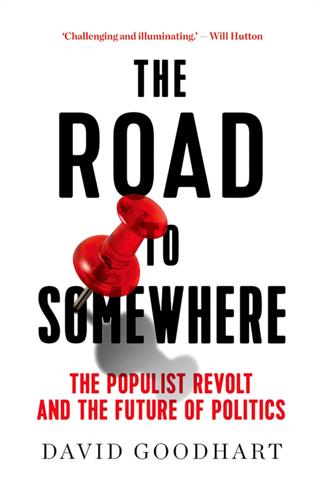
The Road to Somewhere: The Populist Revolt and the Future of Politics
by
David Goodhart
Published 7 Jan 2017
Katwala, Sunder, Jill Rutter and Steve Ballinger, ‘What Next After Brexit: Immigration and Integration in Post-Referendum Britain’, London: British Future, 2016. Kaufmann, Eric and Gareth Harris, ‘Changing Places: Mapping the white British response to ethnic change…’, London: Demos, 2014. Krastev, Ivan, Populism Today, Aspen Institute, 2007. Lasch, Christopher, The Revolt of the Elites and the Betrayal of Democracy, New York: W.W. Norton & Company, 1995. Lind, Michael, ‘The Rubes and the Elites’, Salon, 2008. ______, ‘The Coming Realignment’, The Breakthrough, April 2014. ______, ‘The Liberal Roots of Populism’, Demos Quarterly, Issue 4, Autumn 2014. ______, ‘Why Both Sides Are Wrong About Trade’, Politico, April 2015.
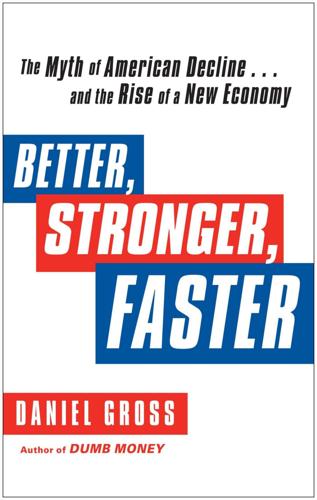
Better, Stronger, Faster: The Myth of American Decline . . . And the Rise of a New Economy
by
Daniel Gross
Published 7 May 2012
So as the economy muddled through, a kind of fatalism pervaded America, as if we had burned the tools necessary for growth. In many cases, even those most heavily invested in success were skeptical of the nation’s capacity for renewal and growth. At a dinner in Washington in 2009 convened by the Aspen Institute and the technology company Intel to discuss innovation, I asked Larry Summers, then the Obama administration’s chief economic spokesman, what would happen if we all tried a little harder, if we were more careful with resources. Wouldn’t that be worth something? Mustering all the diplomacy he could, Summers responded with a patronizing “Maybe.”

Masters of Scale: Surprising Truths From the World's Most Successful Entrepreneurs
by
Reid Hoffman
,
June Cohen
and
Deron Triff
Published 14 Oct 2021
But Stacy gradually saw the possibility for a second purpose: How do we use technology to enable many more middle-class jobs? She began looking closer at how TaskRabbit could be made more accessible to people who don’t have high school degrees or access to expensive technology. In 2016, Stacy became a fellow in the Aspen Institute’s Henry Crown Fellowship program. All fellows were asked to launch a venture designed to increase their impact on society. Stacy’s idea, TaskRabbit for Good, opened up the TaskRabbit platform for people and nonprofits that might not otherwise be able to access it. Along with partnering with community-based organizations to help people in need earn a meaningful income as taskers, TaskRabbit for Good invited their current taskers to volunteer to be matched with regional nonprofits focused on homelessness, job creation, and disaster relief operations who need some extra hours on the weekend or upcoming weeks.
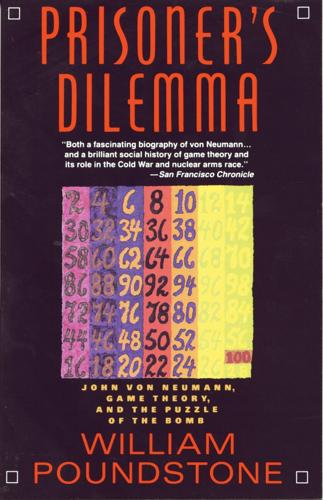
Prisoner's Dilemma: John Von Neumann, Game Theory, and the Puzzle of the Bomb
by
William Poundstone
Published 2 Jan 1993
Typical is a letter from Lewis Strauss (January 19, 1956) in which he rejoices at predictions of von Neumann’s immanent recovery. Princeton’s Albert Tucker wrote (March 27, 1956) that he had heard of von Neumann’s improved health from Oskar Morgenstern. As late as June 11, 1956, von Neumann’s secretary, Marie Janinek, showed only slightly more candor in turning down an invitation from the Aspen Institute of Humanistic Studies. Unfortunately, she said, von Neumann’s recovery had not been as speedy as had been hoped. In early 1956 von Neumann explored “retirement” plans. He put out feelers to MIT, Yale, UCLA, and the RAND Corporation for a job after leaving the AEC. It is evidence of the esteem in which von Neumann was held that these institutions were anxious to recruit him, even though they were aware he was seriously ill and might not have much time left.

Reimagining Capitalism in a World on Fire
by
Rebecca Henderson
Published 27 Apr 2020
—Andrew McAfee, author of More from Less and coauthor of The Second Machine Age and Machine, Platform, Crowd “Rebecca Henderson weaves together research and personal experience with clarity and vision, illustrating the potential for business to benefit both itself and society by leading on the most challenging issues of our day. Read, and feel hopeful.” —Judith Samuelson, vice president, the Aspen Institute “Reimagining Capitalism is a breath of fresh air. Written in lively prose, easily accessible to lay readers, and chock full of interesting case studies, Henderson comprehensively surveys what we need to secure a workable future. Some readers may think she goes too far in places, others may think she doesn’t go far enough, but everyone will want to think about the economy she urges us to create.”

Ghost Road: Beyond the Driverless Car
by
Anthony M. Townsend
Published 15 Jun 2020
Bryan Boyer, Ritchie Yao, and the team at Dash Marshall helped shape many of the design ideas in this book, and brought them to life in illustration. Melissa De La Cruz provided tireless assistance with research and manuscript preparation. A number of organizations supported my research. Jim Anderson and Stacey Gillett at Bloomberg Philanthropies; Jennifer Bradley at the Aspen Institute’s Center for Urban Innovation; and Benjamin de la Peña, during his time at the Rockefeller Foundation. I’m lucky to have such committed partners who are also willing to engage in the work of thinking these questions through together. Through their generosity I was able to convene a stellar group of people for a workshop in April 2017 that generated many of the future scenarios of automated vehicles found throughout the book—Shaun Abrahamson, Varun Adibhatla, Francesca Birks, Garry Golden, Eric Goldwyn, Greg Lindsay, and Chelsea Mauldin.

Living in a Material World: The Commodity Connection
by
Kevin Morrison
Published 15 Jul 2008
Rippy, J.F. (1958) Globe and Hemisphere: Latin America’s Place in the Postwar Foreign Relations of the United States, Henry Regnery Company, Chicago. Ruttenberg, S.H. and Associates, Inc. (1973) The American Oil Industry: A Failure of Anti-Trust Policy, Marine Engineers’ Beneficial Association. 286 | REFERENCES Sandalow, D. (2006) Ethanol: Lessons from Brazil, in A High Growth Strategy for Ethanol, Aspen Institute, Washington, DC. Sandor, R.L. (2004) Market-Based Solutions to Climate Change: An Economist’s Story, address to the Graduate School of International Relations and Pacific Studies, University of California, San Diego, June 12. Sansoucy, R. (1995) Livestock: A Driving Force for Food Security and Sustainable Development, FAO World Animal Review, 84/85, 5–17.
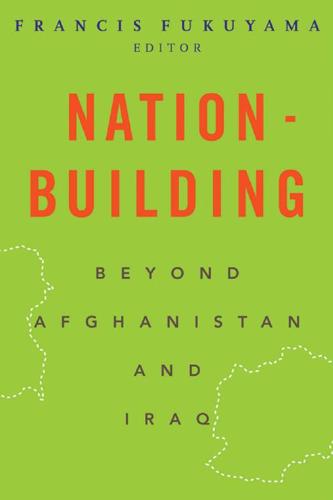
Nation-Building: Beyond Afghanistan and Iraq
by
Francis Fukuyama
Published 22 Dec 2005
Starr was educated at Yale, Cambridge University, and Princeton. Before coming to the Central Asia Institute, he was founding director of the Kennan Institute for Advanced Russian Studies at the Wilson Center in Washington, D.C., president for 11 years of Oberlin College, and president of the Aspen Institute. He founded the Greater New Orleans Foundation and is a trustee of the Eurasia Foundation. Dr. Starr has been closely involved with U.S. policy toward Russia and Central Asia for 30 years and has advised four U.S. presidents. He maintains close ties with government leaders and independent figures in politics and culture from all the states he studies.
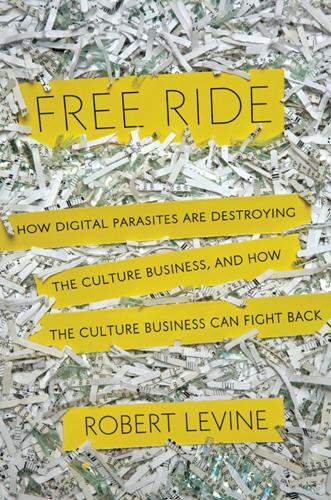
Free Ride
by
Robert Levine
Published 25 Oct 2011
The Future of Journalism: Hearing Before the Communications, Technology, and the Internet Subcommittee of the Senate Commerce, Science, and Transportation Committee, 111th Cong., 1st sess. (May 6, 2009) (Arianna Huffington testimony). 39. Knight Commission on the Information Needs of Communities in a Democracy, Informing Communities: Sustaining Democracy in the Digital Age (Washington, D.C.: Aspen Institute, October 2, 2009). 40. At a 2009 Senate Commerce Committee hearing on the future of journalism, Alberto Ibargüen testified that “nothing Congress can do is as important as providing universal, affordable digital access and adoption.” At a December 2009 Federal Trade Commission (FTC) workshop on the same topic, Eric Newton testified that “consumers must have universal broadband access”—an issue that isn’t under the FTC’s purview. 41.

The Industries of the Future
by
Alec Ross
Published 2 Feb 2016
Osborne, “The Future of Employment: How Susceptible Are Jobs to Computerisation?” Oxford Martin School, 2013, http://www.oxfordmartin.ox.ac.uk/downloads/academic/The_Future_of_Employment.pdf. It measures the shape and size of the customer’s head: Ibid. By way of illustration: “Reinventing Low Wage Work: The Restaurant Workforce in the United States,” Aspen Institute, October 30, 2014, http://www.aspenwsi.org/wordpress/wp-content/uploads/The-Restaurant-Workforce-in-the-United-States.pdf. More than 2.3 million people are: “Occupational Employment Statistics: Occupational Employment and Wages, May 2014,” Bureau of Labor Statistics, March 25, 2015, http://www.bls.gov/oes/current/oes353031.htm.
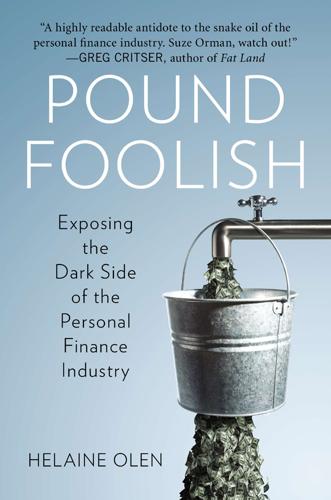
Pound Foolish: Exposing the Dark Side of the Personal Finance Industry
by
Helaine Olen
Published 27 Dec 2012
It’s a pretty damning statement coming from him. A former board member at Jump$tart, Mandell now serves on the board of Child and Youth Finance International, an organization advocating that children maintain savings accounts and have access to financial education, and is a senior fellow at the Aspen Institute’s Initiative on Financial Literacy. Despite his early involvement with financial literacy, Mandell came to an uncomfortable conclusion over time: the entire apparatus he was partially responsible for bringing into existence did not work. Between 2006 and 2008, even as the financial literacy movement was gaining in popularity, the average score on Mandell’s test actually dropped from a not-so-great 52.4 percent to an even worse 48.3 percent.

Dragnet Nation: A Quest for Privacy, Security, and Freedom in a World of Relentless Surveillance
by
Julia Angwin
Published 25 Feb 2014
In 2008, the National Academy of Sciences: Committee on Technical and Privacy Dimensions of Information for Terrorism Prevention and Other National Goals, National Research Council, Protecting Individual Privacy in the Struggle Against Terrorists (Washington, D.C.: National Academies Press, 2008). In a 2012 speech, Matthew Olsen, the director of the National Counterterrorism Center: Matthew Olsen (Director, National Counterterrorism Center), “The National Counterterrorism Center’s Role in Counterterrorism” (speech), Aspen Institute, Washington, D.C., July 26, 2012, http://www.aspeninstitute.org/video/national-counterterrorism-center-s-role-counterterrorism. And after the Boston Marathon bombings, the city’s police commissioner, Ed Davis: Michael Naughton, “Davis: Feds Didn’t Tell Boston Police About Tamerlan Tsarnaev,” Metro.us, May 13, 2013, http://www.metro.us/boston/news/local/2013/05/09/davis-feds-didnt-tell-boston-police-about-tamerlan-tsarnaev/.

The Raging 2020s: Companies, Countries, People - and the Fight for Our Future
by
Alec Ross
Published 13 Sep 2021
less than 2 percent of the US labor force: “Electronically Mediated Work: New Questions in the Contingent Worker Supplement,” Monthly Labor Review, US Bureau of Labor Statistics, September 2018, https://www.bls.gov/opub/mlr/2018/article/electronically-mediated-work-new-questions-in-the-contingent-worker-supplement.htm; “How Many Gig Workers Are There?,” Gig Economy Data Hub, Aspen Institute Future of Work Initiative and Cornell University ILR School, https://www.gigeconomydata.org/basics/how-many-gig-workers-are-there. On August 22, 2017, more than one hundred: Marie Targonski-O’Brien, “Uber, Lyft Drivers Crowd LAX, Protest Low Pay,” KCET, August 22, 2017, https://www.kcet.org/shows/socal-connected/uber-lyft-drivers-crowd-lax-protest-low-pay.
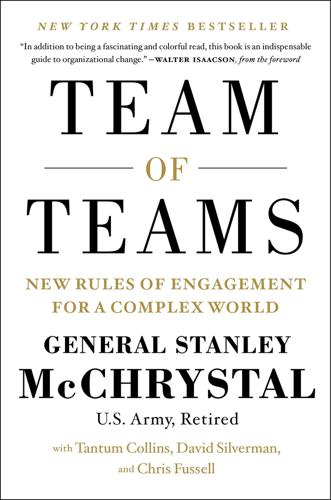
Team of Teams: New Rules of Engagement for a Complex World
by
General Stanley McChrystal
,
Tantum Collins
,
David Silverman
and
Chris Fussell
Published 11 May 2015
Harnessing and sharing the power and experiences of many teams allowed the Task Force command to adapt quickly to changing events on the ground and innovate solutions that couldn’t have come from a top-down approach. These lessons, as the authors show, apply to business and other organizations as well. General McChrystal is leading an effort, managed at the Aspen Institute, to make a year of national service, military or domestic, an opportunity and an expectation of all young Americans. Participating in a service corps is one of many ways to learn to work as a team, communicate goals, and empower decentralized decision making. Whatever field you’re in, at whatever stage of leadership, these insights and skills will prove necessary to learn.

Range: Why Generalists Triumph in a Specialized World
by
David Epstein
Published 1 Mar 2019
When French kids in the national development system do have formal games, coaches are barred from talking for most of the competition so that they cannot micromanage young players. “There is no remote [control] for the players. . . . Let them play,” as Ludovic Debru, who helped design the youth system, put it at the 2018 edition of the Aspen Institute’s Project Play Summit.) “In an era of sports specialization”: J. Brewer, “Ester Ledecka Is the Greatest Olympian at the Games, Even If She Doesn’t Know It,” Washington Post, February 24, 2018, online ed. “I was doing so many different sports”: J. Drenna, “Vasyl Lomachenko: ‘All Fighters Think About Their Legacy.

Don't Be Evil: How Big Tech Betrayed Its Founding Principles--And All of US
by
Rana Foroohar
Published 5 Nov 2019
When you go back to the economic history books, this should come as no surprise—monopoly power was a central feature, even an aim, of those who invented the economics of information technology. How the Big Get Bigger The neoliberal politics of Silicon Valley are reflected in the work of the economist Hal Varian, who joined Google as a consultant in 2002. Eric Schmidt had run into Varian back in 2001 at the Aspen Institute, one of those places where tech titans and their admirers gather to discuss Big Ideas. Schmidt informed Varian that the company had an auction model that “might make a little money” and asked if he would come and help the company perfect it.38 Varian, who’d been dean of the Berkeley School of Information, was one of the top economists studying data markets at the time.
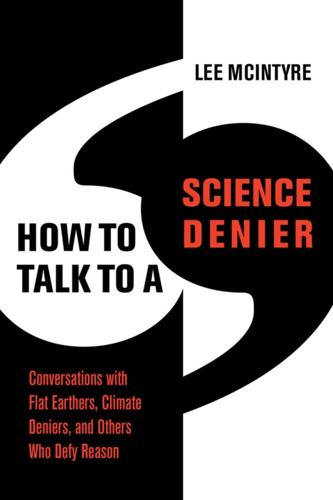
How to Talk to a Science Denier: Conversations With Flat Earthers, Climate Deniers, and Others Who Defy Reason
by
Lee McIntyre
Published 14 Sep 2021
Alongside these I would like to thank the people I can name, which includes Linda Fox, Alex Mead, and Dave and Erin Ninehouser. For moral support in conducting this project, I couldn’t have done better than to rely on the encouragement and advice of my friends Robyn Rosenfeld and Sam Shapson. I am uniquely grateful to Aaron Mertz of the Aspen Institute for his commitment to shining more light on the dangers of science denial. For giving me an intellectual home at the Center for Philosophy and History of Science at Boston University these past twenty years, I send my deepest thanks to Alisa Bokulich. As usual, my philosophical pals Andy Norman and Jon Haber gave me terrific comments on various drafts of this manuscript, and much to think about in our conversations as it took shape.
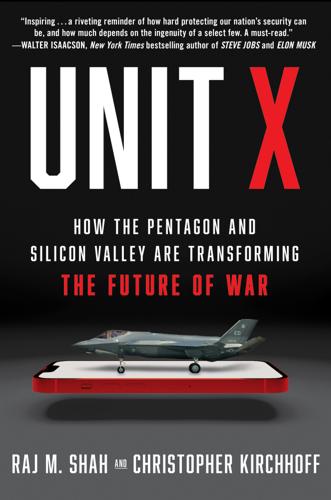
Unit X: How the Pentagon and Silicon Valley Are Transforming the Future of War
by
Raj M. Shah
and
Christopher Kirchhoff
Published 8 Jul 2024
CHAPTER SIX: WASHINGTON AND THE RISE OF THE MACHINES “AI could create infinitely stable dictatorships”: Noor Al-Sibai, “Open AI Chief Says Advanced AI May Already Be Conscious,” The Byte, February 13, 2022, https://futurism.com/the-byte/openai-already-sentient. “Technology & National Security: Maintaining America’s Edge”: Aspen Institute, January 31, 2019, https://www.amazon.com/Technology-National-Security-Maintaining-Americas/dp/0578427958. “And by 2025 you’re done”: Danzig ran across the analogy in a Mother Jones magazine article. Kevin Drum, “Welcome, Robot Overlords. Please Don’t Fire Us?,” Mother Jones, May/June 2023, https://www.motherjones.com/media/2013/05/robots-artificial-intelligence-jobs-automation/.

Fortunes of Change: The Rise of the Liberal Rich and the Remaking of America
by
David Callahan
Published 9 Aug 2010
Should we carve out leadership in this field or just stay with the pack?” or to help them understand “climate change and supply side management.” Of course, such insights could be redundant to younger business leaders fresh out of MBA programs that have an increasingly liberal tint. According to research by the Aspen Institute, business schools are rapidly integrating CSR training into their curriculum. In 2001, only 34 percent of top MBA programs required students to take a course examining business and society issues; by 2007, 63 percent of schools had this requirement. Between 2005 and 2007 alone, the number of courses at top business schools with some environmental and social content increased by nearly 50 percent.

The Everything Store: Jeff Bezos and the Age of Amazon
by
Brad Stone
Published 14 Oct 2013
(Courtesy of Amazon) Bezos in 1982, as a senior at Miami Palmetto High School. (Seth Poppel/Yearbook Library) Ted Jorgensen in 1961. (Photograph courtesy of Ted Jorgensen) Ted Jorgensen in his bike shop, the Roadrunner Bike Center, March 27, 2013. (Photograph by Benjamin Rasmussen) Jackie and Mike Bezos at the 29th Annual Aspen Institute Awards in 2012. (© Patrick McMullan/Photograph by Patrick McMullan) Bezos relaxes at home with MacKenzie and his mother, Jackie. (© David Burnett/Contact Press Images) Jeff Bezos and Amazon employees. (Courtesy of Laurel Canan) Founding employee Shel Kaphan (left) with an early Amazon engineer.

Digital Gold: Bitcoin and the Inside Story of the Misfits and Millionaires Trying to Reinvent Money
by
Nathaniel Popper
Published 18 May 2015
GAVIN ANDRESEN HAD been invited to Dan Morehead’s house in Lake Tahoe, but he had elected to stay home in Amherst. He was receiving many invitations to swanky gatherings and turning essentially all of them down—though he did accept an invitation to speak to the local Rotary Club. When he had been asked to attend the prestigious Aspen Institute, a friend had urged him to go. “It will change your life,” the friend told him. “I don’t want my life to change,” he responded. “I like my life.” He had certainly profited from Bitcoin’s rise: he had been paid by the foundation in Bitcoins since 2012 when each Bitcoin was worth $10. His wife had pushed him to use some of the money to get his own office in downtown Amherst, and a second car for the family.
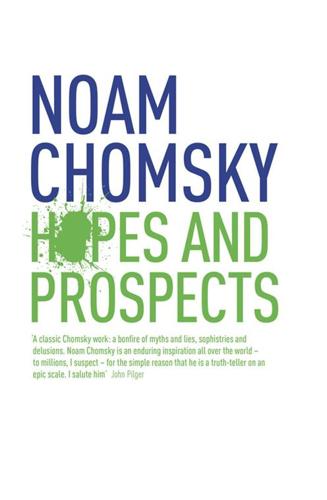
Hopes and Prospects
by
Noam Chomsky
Published 1 Jan 2009
Needless to say, U.S. elite opinion, shared with Western counterparts generally, rejects with virtual unanimity the lofty American values professed at Nuremberg and adopted by Iraqis, indeed regards them as bordering on obscene. All of this provides an instructive illustration of some of the reality that lies behind the famous “clash of civilizations.” A January 2008 poll by World Learning/Aspen Institute found that “75 percent of Americans believe U.S. foreign policy is driving dissatisfaction with America abroad and more than 60 percent believe that dislike of American values (39 percent) and of the American people (26 percent) is also to blame.” The perception is inaccurate, fed by propaganda.

The Perfect Weapon: War, Sabotage, and Fear in the Cyber Age
by
David E. Sanger
Published 18 Jun 2018
“Great power competition”: Helene Cooper, “Military Shifts Focus to Threats by Russia and China, Not Terrorism,” New York Times, January 20, 2018, www.nytimes.com/2018/01/19/us/politics/military-china-russia-terrorism-focus.html. “so obsolete in cyber”: “Transcript: Donald Trump Expounds on His Foreign Policy Views,” New York Times, March 26, 2016, www.nytimes.com/2016/03/27/us/politics/donald-trump-transcript.html. “So much of the fabric of our society”: Joyce spoke at the Aspen Institute in Washington, DC, on November 15, 2017: www.aspeninstitute.org/events/cyber-breakfast-view-from-the-white-house/. hybrid war: Valery Gerasimov, “The Value of Science Is in the Foresight,” Military-Industrial Courier, February 2013. “little price to pay”: Andrew Desiderio, “NSA Boss Suggests Trump Lets Putin Think ‘Little Price to Pay’ for Messing With U.S.,” Daily Beast, February 27, 2018, www.thedailybeast.com/nsa-boss-seems-to-hit-trump-on-russia-putin-believes-little-price-to-pay-for-messing-with-us.
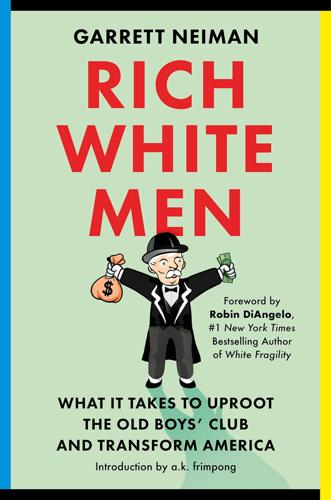
Rich White Men: What It Takes to Uproot the Old Boys' Club and Transform America
by
Garrett Neiman
Published 19 Jun 2023
Jennifer Lee, “Honorary Whiteness: The Making of a Model Minority—The Socio-Legal Construction of Race and East Asians as Global Outsiders in the Landscape of a Post-Apartheid South Africa,” honors thesis, Johns Hopkins University, May 2016, https://kipdf.com/jennifer-lee-supervisor-beverly-j-silver_5b2f8b15097c478f398b4630.html. 25. Amy Chua and Jed Rubenfeld, “What Drives Success?” New York Times, January 25, 2014, https://www.nytimes.com/2014/01/26/opinion/sunday/what-drives-success.html. 26. Rockefeller Foundation-Aspen Institute Diaspora Program, “The Nigerian Diaspora in the United States,” Migration Policy Institute, June 2015, 1. 27. Monica Anderson, “Chapter 1: Statistical Portrait of the U.S. Black Immigrant Population,” in A Rising Share of the U.S. Black Population Is Foreign Born, Pew Research Center, April 9, 2015, https://www.pewresearch.org/social-trends/2015/04/09/chapter-1-statistical-portrait-of-the-u-s-black-immigrant-population/. 28.

American Foundations: An Investigative History
by
Mark Dowie
Published 3 Oct 2009
Its discussions of "accountability" tend to focus on questions of government oversight and operational transparency rather than on the process by which foundations select grantees. Accountability The public is entitled to know the facts-all the facts-about the operation of foundations. -Raymond Fosdick, President, Rockefeller Foundation, 1963 Who anoints foundations to do what they do? -Alan Abramson, The Aspen Institute To whom is a foundation legally accountable? To the public? Yes, but only in vague, minimal, and largely unenforceable ways. To its grantees? Yes, but about much as a feudal lord of the manor was accountable to his serfs. To its trustees? Yes, but only in a circular way, for as fiduciaries and guardians of donor intent, trustees are also accountable to the foundation and its charter.
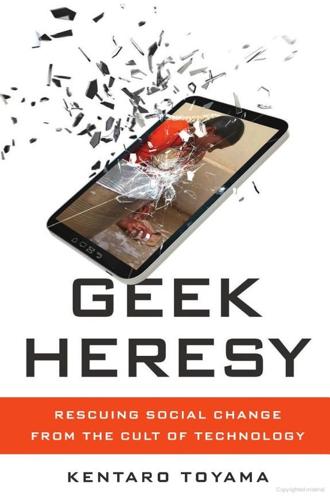
Geek Heresy: Rescuing Social Change From the Cult of Technology
by
Kentaro Toyama
Published 25 May 2015
“We recently started another program called Tech Needs Girls,” Agyare told me. “We organize women engineers to mentor girls from urban slums in computer programming and entrepreneurial skills.” Agyare’s work has not gone unnoticed. She has been crowned with laurels by the World Economic Foundation, the Aspen Institute, and Hillary Clinton’s Vital Voices Fellowship. Facebook executive Sheryl Sandberg wrote about Agyare in Lean In for Graduates.1 And in 2014 Agyare was selected for the Young African Leaders Initiative begun by President Barack Obama. In previous chapters, I’ve discussed the best ways to deploy packaged interventions and to nurture the intrinsic growth needed to implement them.

Women Leaders at Work: Untold Tales of Women Achieving Their Ambitions
by
Elizabeth Ghaffari
Published 5 Dec 2011
She was a visiting professor in international studies at the Sichuan International Studies University in China (1992–1993). From 1989 to 1992, she was a member of the management team at First Third Bancorp in Cincinnati, where she focused on mergers and acquisitions. Dr. McElhaney received the Aspen Institute and the World Resources Institute’s Faculty Pioneer Award (2005) and the Outstanding Graduate Student Instructor Teaching Award from the University of Michigan (1997). She was nominated three times for the MBA Teaching Excellence Award while at the University of Michigan business school. She was listed among the East Bay Business Times’ “40 Under 40” leaders (2004) and was a finalist in Fast Company’s “Fast 50” list (2004).

Smart Cities: Big Data, Civic Hackers, and the Quest for a New Utopia
by
Anthony M. Townsend
Published 29 Sep 2013
articleid=4395. 61“Smart + Connected Communities: Changing a Community, a Country a World,” Cisco Systems, June 2010, 3, http://www.cisco.com/web/strategy/docs/scc/ 09CS2326_SCC_BrochureForWest _r3_112409.pdf. 62“Cisco Visual Networking Index: Global Mobile Data Traffic Forecast Update, 2011–2016,” Cisco Systems, last modified February 14, 2012, http://www.cisco.com/en/US/solutions/collateral/ns341/ns525/ns537/ns705/ns827/ white_paper_c11-520862.html. 63“How Virtual Meetings Provide Substantial Business Value and User Benefits,” Cisco Systems, n.d., accessed September 25, 2012, http://www.cisco.com/web/about/ciscoitatwork/downloads/ciscoitatwork/pdf/ Cisco_IT_Case_Study_TelePresence_Benefits.pdf. 64Daniel Brook, “The Rise and Fall and Rise of New Shanghai,” Foreign Policy, September/October 2013, last modified August 13, 2012, http://www.foreignpolicy.com/articles/2012/08/13/ the_rise_and_fall_and_rise_of_new_shanghai. 65“Smart + Connected Life Video,” Cisco Systems, n.d., http://www.cisco.com/web/CN/expo/en/pavilion.html. 66“Smart + Connected Life Video.” 67Eliza Strickland, “Cisco Bets on South Korean Smart City,” IEEE Spectrum, last modified November 29, 2011, http://spectrum.ieee.org/telecom/internet/cisco-bets-on-south-korean-smart-city. 68Alex Soojung-Kim Pang, “Mobility, Convergence, and the End of Cyberspace,” in Kristof Nyiri, ed., Towards a Philosophy of Telecommunications Convergence (Vienna: Passagen Verlag, 2008), 55–62. 69Matt Novak, “The World’s First Carphone,” Paleofuture, blog, Smithsonian Magazine, last modified January 25, 2012, http://blogs.smithsonianmag.com/paleofuture/2012/01/the-worlds-first-carphone/. 70Novak, “The World’s First Carphone.” 71“First FM Portable Two-Way Radio,” Motorola Solutions, accessed September 25, 2012, http://www.motorolasolutions.com/US-EN/About/Company+Overview/History/Explore+Motorola+Heritage/First+FM+Portable+Two-Way+Radio. 72“Milestones: One-Way Police Radio Communication, 1928,” IEEE Global History Network, n.d., http://www.ieeeghn.org/wiki/index.php/Milestones: One-Way_Police_Radio_Communication,_1928. 73“Milestones: Two-Way Police Radio Communication, 1933,” IEEE Global History Network, n.d., http://www.ieeeghn.org/wiki/index.php/Milestones: Two-Way_Police_Radio_Communication,_1933. 74“1946: First Mobile Telephone Call,” AT&T, n.d., http://www.corp.att.com/attlabs/reputation/timeline/46mobile.html. 75“1946: First Mobile Telephone Call.” 76George Calhoun, Digital Cellular Radio (Norwood, MA: Artech House, 1988), 39. 77“Cisco Visual Networking Index.” 78Anton Troianovski, “Video Speed Trap Lurks in New iPad,” Wall Street Journal, last modified March 22, 2012, http://online.wsj.com/article/ SB10001424052702303812904577293882009811556.html. 79“Mobile data traffic growth doubled over one year,” October 12, 2011, http://www.ericsson.com/news/111012_mobile_data_traffic_244188808_c. 80“Mobile Network Operators Face Seven Fold Increases in Data Delivery Costs, Rising to $370 bn by 2016, Juniper Research Reports,” Juniper Research, Hampshire, United Kingdom, press release, August 2, 2011, http://www.juniperresearch.com/viewpressrelease.php?pr=254. 81Quoted in David Bollier, Scenarios for a National Broadband Policy (Washington, DC: Aspen Institute, 2010), http://bollier.org/sites/default/files/aspen_reports/BroadbandTEXTF_0.pdf, 9. 82City of New York, “Frequently Asked Questions: Traffic Signs, Traffic Signals and Street Lights,” http://www.nyc.gov/html/dot/html/faqs/faqs_signals.shtml, accessed September 25, 2012. 83John Byrne, “Worldwide Cellular Infrastructure 2011–2015 Forecast: As LTE Takes Off, HSPA+ Will Remain the Technology of Choice for Many Operators,” International Data Corporation, 2011, http://www.idc.com/getdoc.jsp?
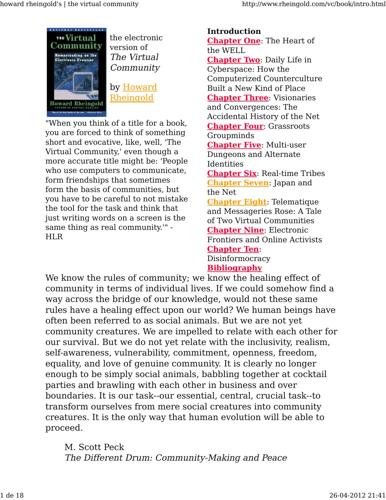
Howard Rheingold
by
The Virtual Community Homesteading on the Electronic Frontier-Perseus Books (1993)
Published 26 Apr 2012
Ethical Global The Information Society: Culture and Democracy Revisited. Norwell, MA: Kluwer Academic Publishers, 1999. Berman, Marshall. All That Is Solid Melts into Air: The Experience of Modernity. New York: Simon & Schuster, 1982. Bollier, D., and C.M. Firestone. The Future of Community and Personal Identity in the Coming Electronic Culture. Washington, DC: Aspen Institute Publications Office, 1996. 13 de 20 26-04-2012 21:48 The Virtual Community, Bibliography http://www.rheingold.com/vc/book/biblio.html Borsook, Paulina. Cyberselfish: How the Digital Elite Is Undermining Our Society, Culture and Values. Des Plaines, IL: Bantam Books, 1999. Boyer, M. Christine.
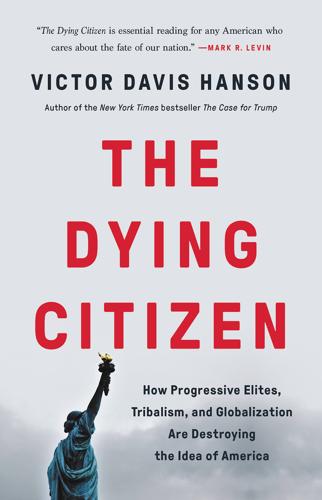
The Dying Citizen: How Progressive Elites, Tribalism, and Globalization Are Destroying the Idea of America
by
Victor Davis Hanson
Published 15 Nov 2021
After placating Vladimir Putin’s Russia for six years under the policy of “reset” led to Russian aggression and greater global influence, the bipartisan establishment, in part out of hatred of Donald Trump, simply reinvented itself as Russia-phobic and accused those who called for a balanced policy between appeasement and saber-rattling brinkmanship of being Putin’s stooges. Many of the globalized commandments so often canonized at international symposia such as at Davos, the Aspen Institute, or the Council on Foreign Relations turned out to be deeply flawed. In fact, events on the ground have overtaken these long-enshrined, yet never logical or commonsensical, canons. A trade-cheating ascendant China did not become democratic in its affluence, even when its elites sent their children to the Ivy League and bought property on Monterey’s 17-Mile Drive or on Malibu’s sands.

Jihad vs. McWorld: Terrorism's Challenge to Democracy
by
Benjamin Barber
Published 20 Apr 2010
Magazine, September 1994. 13. “Mondialisation et ségrégations,” Le Monde diplomatique: Les frontières de l’économie globale, May 1993, p. 7. 14. Robert Kuttner, “Brave New Corporate ‘Workplace of the Future,’” The Berkshire Eagle, August 1, 1993, Section E, p. I. Kuttner was reporting on an Aspen Institute Conference on “Tomorrow’s Corporation.” In Liberation Management, an example of new age corporate utopianism, Tom Peters writes “the definition of every product and service is changing. Going soft, softer, softest. Going fickle, ephemeral, fashion[A]n explosion of new competitors … and the everpresent new technologies are leading the way.”
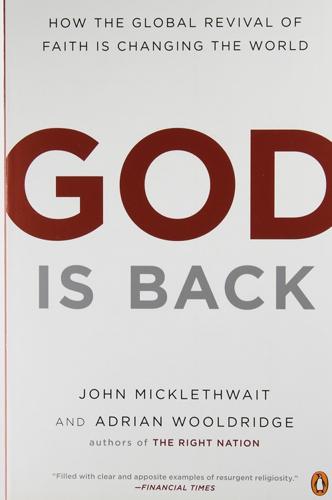
God Is Back: How the Global Revival of Faith Is Changing the World
by
John Micklethwait
and
Adrian Wooldridge
Published 31 Mar 2009
The Harvey Fellows Program was set up by Dennis Bakke, an energy magnate, along the same lines as the White House Fellows Program: it helps Evangelical-leaning students who are pursuing graduate studies at “premier institutions.”20 Matt Bennett, the son of the founder of a hotel chain, launched the Christian Union to reclaim “the Ivy League for Christ” and thus shape “the hearts and minds” of the elite.21 It already has student centers, where Christians can gather for Bible study and discussions, at Brown, Cornell and Princeton; more will follow “as God provides the funding.” The Union is also training a cadre of young Evangelicals to work as missionaries to the Ivy League. This intellectual infrastructure is not restricted to universities. The Trinity Forum, which was founded in 1991 as an Evangelical version of the Aspen Institute, puts on by-invitation-only retreats for intellectual and business leaders in swanky resorts. Its Trinity Forum Academy gives young Evangelicals a chance to spend nine months on Maryland’s eastern shore meditating on great works of theology and philosophy. Socrates in the City holds discussions on “the unexamined life” for the Manhattan smart set.
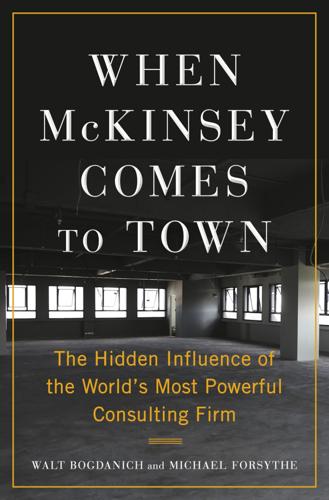
When McKinsey Comes to Town: The Hidden Influence of the World's Most Powerful Consulting Firm
by
Walt Bogdanich
and
Michael Forsythe
Published 3 Oct 2022
GO TO NOTE REFERENCE IN TEXT “Our challenge to our clients”: Naina Dhingra, Robin Nutall, and Matt Stone, “Embedding Purpose: Fewer Slogans, More Action,” post on McKinsey’s Strategy & Corporate Finance blog, Aug. 28, 2019. GO TO NOTE REFERENCE IN TEXT “the Aspen Consensus”: Anand Giridharadas, “The Thriving World, the Wilting World, and You” (speech, Aspen Institute’s Action Forum, July 29, 2015), posted on Medium.com. GO TO NOTE REFERENCE IN TEXT ExxonMobil said it was “all the buzz”: See “Five Big Ideas from the Aspen Ideas Festival,” on the ExxonMobil website, published July 9, 2019. ExxonMobil has been talking about the potential of carbon capture and storage since at least 2008.

The Content Trap: A Strategist's Guide to Digital Change
by
Bharat Anand
Published 17 Oct 2016
at least one online course “2014 Online College Students: Comprehensive Data on Demands and Preferences,” Learning House, last modified 2014, accessed March 10, 2016, http://www.learninghouse.com/ocs2014-report ; Carl Straumsheim, “Identifying the Online Student,” Inside Higher Ed , last modified June 3, 2014, accessed March 10, 2016, https://www.insidehighered.com/news/2014/06/03/us-releases-data-distance-education-enrollments . its model was of a “hybrid university” Kevin Carey, The End of College (New York: Riverhead Books, 2015). “all made sense—in theory” Ibid. first expressed more than a century ago Ibid. or more than 40 percent of all undergraduates “Skills for America’s Future Community College Facts,” Aspen Institute, last modified 2016, accessed March 10, 2016, http://www.aspeninstitute.org/policy-work/economic-opportunities/skills-americas-future/what-we-do/community-college-facts . in their families to attend college “2014 Fact Sheet,” American Association of Community Colleges, last modified 2014, accessed March 10, 2016, http://www.aacc.nche.edu/AboutCC/Documents/Facts14_Data_R3.pdf .
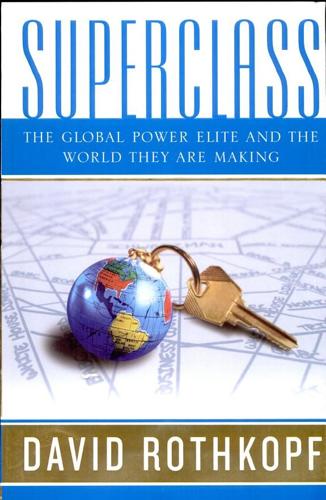
Superclass: The Global Power Elite and the World They Are Making
by
David Rothkopf
Published 18 Mar 2008
A considerable number are found in the medical field: the global public-private partnerships that form the core of more than half the activities of the World Health Organization, for example; or the Global Alliance for Vaccines and Immunization (GAVI), which is 75 percent financed by the Gates Foundation; or the TB Alliance, which also has both public and private finance. Another example is a recent initiative of the Aspen Institute, the Overseas Private Investment Corporation (OPIC, a U.S. government agency), and the Palestine Investment Fund to create a Middle East Investment Initiative—“an international collaboration of leaders from the Palestinian, American and European private and public sectors”—to help fund the creation of jobs for Palestinians.
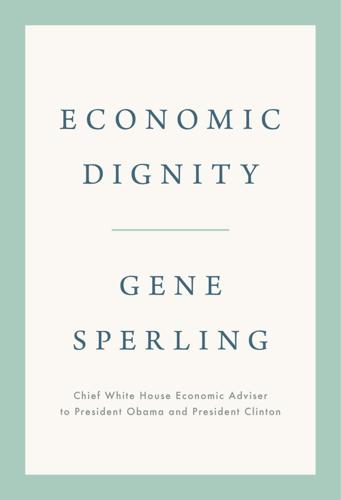
Economic Dignity
by
Gene Sperling
Published 14 Sep 2020
“Lessons Learned from 40 Years of Subsidized Employment Programs,” Georgetown Law Center on Poverty and Inequality, spring 2016, http://www.georgetownpoverty.org/issues/employment/lessons-learned-from-40-years-of-subsidized-employment-programs/. 23. Alastair Fitzpayne and Ethan Pollack, Worker Training Tax Credit Promoting Employer Investments in the Workforce (Washington, DC: Aspen Institute, May 2017), 2, https://www.aspeninstitute.org/publications/worker-training-tax-credit-promoting-greater-employer-investments-in-the-workforce/; and Angela Hanks and David Madland, “Better Training and Better Jobs: A New Partnership for Sectoral Training,” Center for American Progress, February 22, 2018, https://www.americanprogress.org/issues/economy/reports/2018/02/22/447115/better-training-better-jobs/. 24.
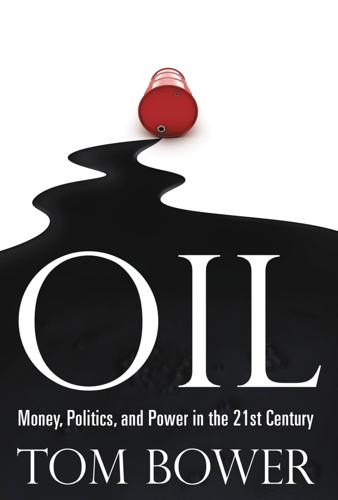
Oil: Money, Politics, and Power in the 21st Century
by
Tom Bower
Published 1 Jan 2009
Browne, the Reputation Team knew, expected to be at the center of the campaign, symbolizing BP’s “humanization, personalization and identification.” Thousands of opinion formers across the USA were targeted to attend the “engagement opportunities” at which BP’s ambassadors would deliver the message. Invitations were also sought for Browne to attend important international meetings including the Aspen Institute and the World Economic Forum at Davos, and flattering profiles were arranged to appear in America’s most prestigious newspapers and magazines, especially Fortune. BP logos and flags were attached to newly planted trees and balloons, and were brandished at a back-to-school parade by 200 BP employees and their families in Chicago.

WTF?: What's the Future and Why It's Up to Us
by
Tim O'Reilly
Published 9 Oct 2017
Writers Matt Bruenig and Elizabeth Stoker calculated that in 2013, the amount needed to bring all of the Americans living below the poverty line up to at least its level would cost only $175 billion. Sam Altman explained that those who argue about how we would pay for a universal basic income today miss the point. “I am confident that if we need it, we will be able to afford it,” he said in a 2016 discussion of UBI at venture capital firm Bloomberg Beta with Andy Stern and the Aspen Institute’s Natalie Foster. One major factor that isn’t being considered, as Sam expanded on it in our subsequent conversation, is that the possible productivity gains from technology are enormous, and these gains can be used to reduce the price of any goods produced by machines—a basket of goods and services sufficient to support basic needs that costs $35,000 today might cost $3,500 in a future where the machines have put so many people out of work that a universal basic income is required.
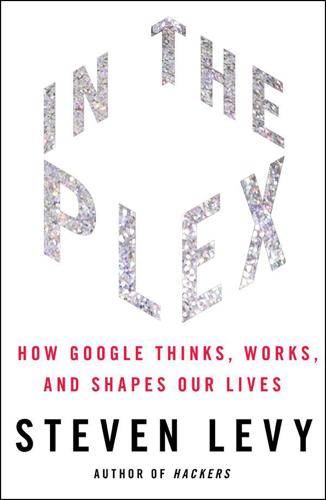
In the Plex: How Google Thinks, Works, and Shapes Our Lives
by
Steven Levy
Published 12 Apr 2011
Since the Google ad model depended on absolute mastery in predicting click-through, over the years the company would spend enormous amounts of effort and prodigious amounts of brainpower to get it right. A new arrival at Google would act as a godfather to the advertising effort. His name was Hal Varian, and he would eventually hold the title of Google’s chief economist. In 2001 newly hired CEO Eric Schmidt ran into Varian at the Aspen Institute, Schmidt was with Larry Page, and Varian remembers thinking, Why did Eric bring his nephew from high school here? Nonetheless, Schmidt, whose father was an economist, suggested to Varian that he spend time at Google, maybe a day or two a week. On his first visit Varian asked Schmidt what he might do.
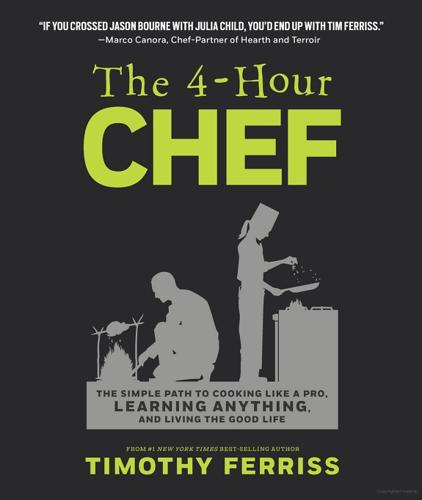
The 4-Hour Chef: The Simple Path to Cooking Like a Pro, Learning Anything, and Living the Good Life
by
Timothy Ferriss
Published 1 Jan 2012
To that end, we’ll start where thousands of dishes start: soffritto. The Classics LESSON BUILDING FLAVOR SOFFRITTO - * * * “Soffritto is something you need to understand. It’s the key to making things taste delicious.” —CHEF MARCO CANORA * * * I first met Walter Isaacson on a terrace at the Aspen Institute, where he is CEO. He is also a famed biographer of Einstein, Franklin, and—most recently—Steve Jobs. Just two months before Jobs’s unfortunate passing, we were discussing food and learning. The conversation meandered to my fascination with Ben Franklin, which led to the subject of experimentation.
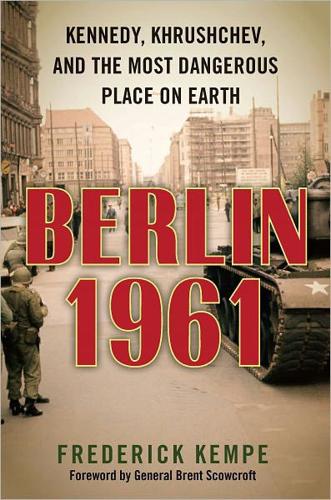
Berlin 1961: Kennedy, Khrushchev, and the Most Dangerous Place on Earth
by
Frederick Kempe
Published 30 Apr 2011
The showdown over Berlin in 1961 was the pivotal episode of the Cold War, far more important and illuminating than the Cuban Missile Crisis. It was a clash between two fascinating leaders, Kennedy and Khrushchev, whose misreading of each other holds lessons for today. Kempe’s compelling narrative is a triumph of great writing and research.” —Walter Isaacson, president and CEO, The Aspen Institute, and author of Einstein: His Life and Universe and Benjamin Franklin: An American Life “An engaging, richly researched, thought-provoking book that captures the drama of, and challenges the conventional wisdom regarding, one of the Cold War’s most decisive years. Frederick Kempe combines the ‘You are there’ storytelling skills of a journalist, the analytical skills of the political scientist, and the historian’s use of declassified U.S., Soviet, and German documents to provide unique insight into the forces and individuals behind these events.”

Elon Musk
by
Walter Isaacson
Published 11 Sep 2023
More from the Author The Code Breaker Leonardo da Vinci The Innovators Kissinger The Wise Men Steve Jobs About the Author Walter Isaacson has written biographies of Jennifer Doudna, Leonardo da Vinci, Steve Jobs, Albert Einstein, Henry Kissinger, and Benjamin Franklin. He is also the author of The Innovators and the coauthor of The Wise Men. He has been the editor of Time, the CEO of CNN, and the CEO of the Aspen Institute. He was awarded the National Humanities Medal in 2023. He is a professor at Tulane and lives with his wife in New Orleans. www.SimonandSchuster.com www.SimonandSchuster.com/Authors/Walter-Isaacson ALSO BY WALTER ISAACSON The Code Breaker: Jennifer Doudna, Gene Editing, and the Future of the Human Race Leonardo da Vinci The Innovators: How a Group of Hackers, Geniuses, and Geeks Created the Digital Revolution Steve Jobs American Sketches Einstein: His Life and Universe Benjamin Franklin: An American Life Kissinger: A Biography The Wise Men: Six Friends and the World They Made (with Evan Thomas) Pro and Con We hope you enjoyed reading this Simon & Schuster ebook.
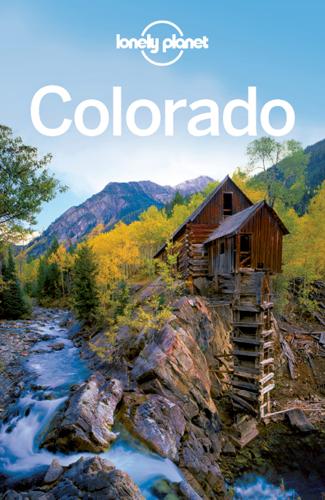
Colorado
by
Lonely Planet
Of course all this pseudo Victorian-meets-King-Louis elegance comes with a hefty price tag, but you can look online to score cheaper deals in the low season – October is a beautiful month, November has even better deals. Little Nell HOTEL $$$ ( 970-920-4600; www.thelittlenell.com; 675 E Durant Ave; r from $560; ) A long-time Aspen institution offering understated, updated elegance and class at the foot of Aspen Mountain. Gas-burning fireplaces, high-thread-count linens and rich color schemes make up the recently remodeled modernist decor. There are fabulous Balinese pieces in the lobby and hallways decorated with wonderful ski photography.

Empire of Guns
by
Priya Satia
Published 10 Apr 2018
I am grateful to have had the opportunity to present parts of this work at workshops and seminars at Columbia University, New York University, Harvard University, the University of Chicago, the University of California at Santa Cruz, Simon Fraser University, the University of Virginia, the University of California at San Diego, the University of Illinois at Urbana-Champaign, the Newberry Seminar in British History in Chicago, the University of California at Berkeley, Yale University, and the Aspen Institute. I thank the wonderful colleagues who invited me and the generous scholars who attended and shed much-needed light on many aspects of the work. I also thank those who attended a panel at which I presented the first fruit of this study, at the North American Conference on British Studies in Baltimore in 2010.
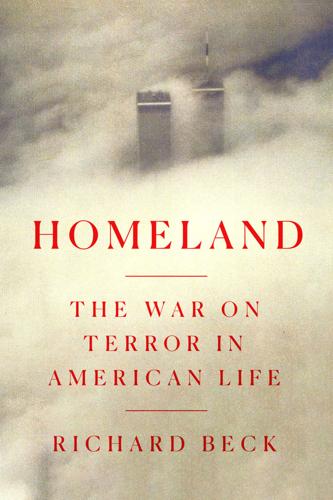
Homeland: The War on Terror in American Life
by
Richard Beck
Published 2 Sep 2024
BACK TO NOTE REFERENCE 65 Grace Manthey, Frank Esposito, and Amanda Hernandez, “Despite ‘Defunding’ Claims, Police Funding Has Increased in Many US Cities,” ABC News, Oct. 16, 2022, abcnews.go.com/US/defunding-claims-police-funding-increased-us-cities/story?id=91511971. BACK TO NOTE REFERENCE 66 Shehryar Nabi, “Charts That Explain Wealth Inequality in the United States,” Aspen Institute, Oct. 19, 2022, www.aspeninstitute.org/blog-posts/charts-that-explain-wealth-inequality-in-the-united-states. BACK TO NOTE REFERENCE 67 “Policing in America,” police shootings database, Washington Post, accessed March 14, 2022, www.washingtonpost.com/police-america. BACK TO NOTE REFERENCE 68 Martin Gilens and Benjamin I.
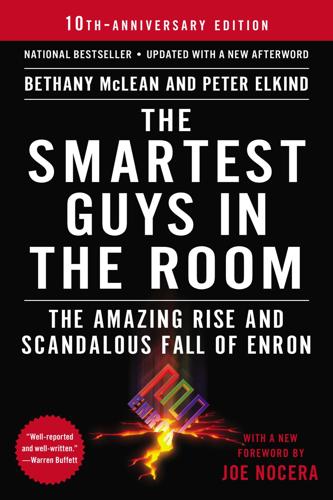
The Smartest Guys in the Room
by
Bethany McLean
Published 25 Nov 2013
At business schools across the country, ethics classes proliferated. Harvard, for instance, added a compulsory, full-length ethics class in 2004. Overall, the number of schools requiring a course in ethics, business in society, or a similar topic jumped from 34 percent in 2001 to 79 percent in 2011, according to the results of a survey by the Aspen Institute. Perhaps not incidentally, the name “Enron” also became a cultural byword. In 2005, a documentary film made by Alex Gibney and bearing the title of this book had its premiere at the Sundance Film Festival. The following year, the film was nominated for an Academy Award. (It lost to March of the Penguins.)
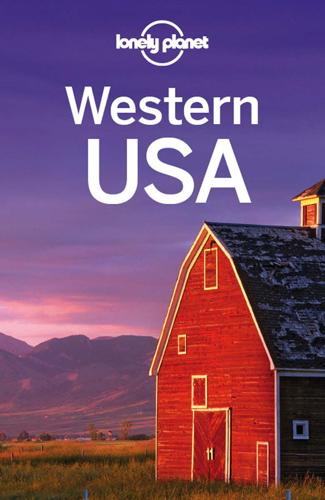
Western USA
by
Lonely Planet
Annabelle Inn HOTEL $$$ ( 877-266-2466; www.annabelleinn.com; 232 W Main St; r incl breakfast $159-229; ) Personable and unpretentious, the cute and quirky Annabelle Inn resembles an old-school European-style ski lodge in a central location. Rooms are cozy and come with flat-screen TVs and warm duvets. You can also enjoy after-dark ski video screenings from the upper-deck hot tub (one of two on the property). Little Nell HOTEL $$$ ( 970-920-4600; www.thelittlenell.com; 675 E Durant Ave; r from $545; ) This is a long-time Aspen institution at the foot of Aspen Mountain. Gas-burning fireplaces, high-thread-count linens and rich color schemes make up the elegant modernist decor. An adventure concierge is on hand to help guests get the most from the outdoors. Dining is outstanding and its open air Ajax Tavern is the town hot-spot for some après-ski unwinding.
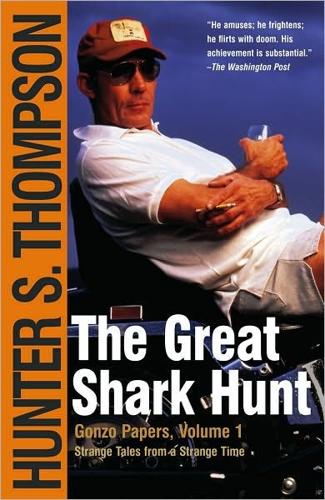
The Great Shark Hunt: Strange Tales From a Strange Time
by
Hunter S. Thompson
Published 6 Nov 2003
Thompson's comments on Americans he observed while in South America; the "Ugly American" syndrome and its causes. "An Aussie Paul Bunyan Shows Our Loggers How," NO, September 2, 1963, p. 12. Pacific Coast Loggers Championship in Quincey, California. "Executives Crank Open Philosophy's Windows," NO, September 9, 1963, p. 13. On Aspen Institute for Humanistic Studies in Aspen, Colorado. "One of the Darkest Documents Ever Put Down is 'The Red Lances,' " NO, October 7, 1963, p. 19. Review of Latin American author Arturo Uslar Pietri's The Red Lances. "Can Brazil Hold Out Until the Next Election?" NO, October 28, 1963, p. 13. "Donleavy Proves His Lunatic Humor Is Original," NO, November 11, 1963, p. 17.

Ghost Wars: The Secret History of the CIA, Afghanistan, and Bin Laden, from the Soviet Invasion to September 10, 2011
by
Steve Coll
Published 23 Feb 2004
In addition to Pakistan he poured subsidies into the intelligence services of moderate Saudi allies such as Morocco and Jordan, buying access to information and people.17 He seemed most at home on the luxurious circuit of foreign policy and international security conferences held at Davos, Switzerland, or the Aspen Institute in Colorado, where diplomats and generals debated the challenges of the post–Cold War world while smoking Cuban cigars. Within the Saudi royal family, Turki’s influence was constrained by his relative youth. In a political system based on family and seniority, he languished in the second tier, tied by blood and political outlook to the family’s most liberal and modernizing branch but not old or well placed enough to be its leader.
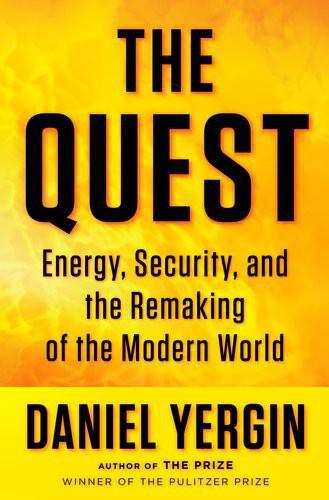
The Quest: Energy, Security, and the Remaking of the Modern World
by
Daniel Yergin
Published 14 May 2011
Hoffman, The Oligarchs: Wealth and Power in the New Russia (New York: Public Affairs, 2005), chs. 5, 12. 12 Freeland, Sale of the Century, pp. 187, 384; Hoffman, The Oligarchs, ch. 18; Mikhail Fridman, “How I Became an Oligarch,” Speech, Lvov, November 14, 2010. 13 Interviews with Archie Dunham and Lucio Noto. 14 Interview with Archie Dunham. 15 Wall Street Journal, September 27, 2010. 16 John Browne, Beyond Business (London: Weidenfeld and Nicolson, 2010), ch. 8. 17 John Browne, pp. 144–51; German Khan interview in Vedomosti, January 20, 2010. 18 Peter Baker and Susan Glasser, Kremlin Rising: Vladimir Putin’s Russia and the End of the Revolution (Potomac Books, 2007), chs. 15, 17; Vladimir Putin, First Person: An Astonishingly Frank Self-Portrait by Russia’s President (New York: Public Affairs, 2000); Angela Stent, “An Energy Superpower” in Kurt Campbell and Jonathon Price, The Politics of Global Energy (Washington, D.C.: Aspen Institute, 2008), pp. 78, 95. Chapter 2: The Caspian Derby 1 Peter Hopkirk, The Great Game: The Struggle for Empire in Central Asia (New York: Kodansha International, 1994), p. 1. 2 New York Times, April 26, 2005. 3 Strobe Talbott, “A Farewell to Flashman: American Policy in the Caucasus and Central Asia,” speech, July 21, 1997. 4 New York Times, October 4, 1998 (“our strategy”); Jan Kalicki, “Caspian Energy at the Crossroads,” Foreign Affairs, September–October 2001. 5 Robert Tolf, The Russian Rockefellers: The Saga of the Nobel Family and the Russian Oil Industry (Stanford: Hoover Institution Press, 1976), pp. xiv (“Russian Rockefeller”), 53–55; Steve LeVine, The Oil and the Glory: The Pursuit of Empire and Fortune on the Caspian Sea (New York: Random House, 2007), p. 146; Ronald Suny, “A Journeyman for the Revolution: Stalin and the Labor Movement in Baku,” Soviet Studies, no. 3, 1972; Simon Sebag Montefiore, Young Stalin (New York: Vintage, 2008), p. 187 (“the Oil Kingdom”). 6 Daniel Yergin, The Prize: The Epic Quest for Oil, Money, and Power (New York: Free Press, 2009), p. 220 (“The Bolsheviks will be cleared”); Geoffrey Jones, The State and the Emergence of the British Oil Industry (London: Macmillan, 1981), pp. 209–11 (Bolsheviks); Alexander Stahlberg, Bounden Duty: The Memoirs of a German Officer, 1932–1945, trans.

Post Wall: Rebuilding the World After 1989
by
Kristina Spohr
Published 23 Sep 2019
Arms Control Today 21, 2 (March 1991) pp. 8–13; Leslie H. Gelb ‘The Next Renegade State’ NYT 10.4.1991. President Bush highlighted the danger of so-called ‘renegade regimes’ when he gave a speech in Aspen, Colorado on 2 August 1990. Then he had in mind the regime of Saddam Hussein in Iraq which had just invaded Kuwait. See Remarks at the Aspen Institute Symposium in Aspen Colorado 2.8.1990 APP. President Clinton in turn spoke in the July 1994 and subsequent 1995 version of his National Security Strategy of Engagement and Enlargement of ‘rogue states’ that ‘pose a serious danger to regional stability in many corners of the globe’. Generally, American commentators and policymakers also referred to ‘outlaw’, ‘pariah’ or ‘backlash’ states.
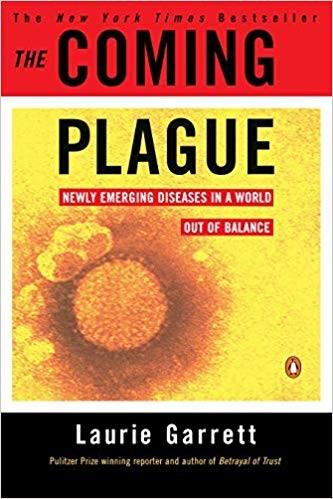
The Coming Plague: Newly Emerging Diseases in a World Out of Balance
by
Laurie Garrett
Published 31 Oct 1994
The cities projected to have attained megacity status by 2000 are: London is expected to drop off the list, as its population is forecast to decline to 9.2 million due to lowering birth rates and middle-class suburban outward migration. 39 Tabibzadeh, Rossi-Espagnet, and Maxwell (1989), op. cit. 40 “Pollution in Asia,” op. cit. 41 Aspen Institute, U.S.A., 1989. 42 United Nations, “The Prospect of World Urbanization,” op. cit. 43 D. B. Ottaway, “Cairo Is Plagued with Environmental Disasters,” San Francisco Chronicle, January 12, 1983: Fl. 44 D. J. Stanley, and A. G. Warne, “Nile Delta: Recent Geological Evolution and Human Impact,” Science 260 (1993): 628–34. 45 A rich litany of such details of human urban existence in developing countries can be found in Harpham, Lusty, and Vaughan (1988), op. cit. 46 N.

Days of Fire: Bush and Cheney in the White House
by
Peter Baker
Published 21 Oct 2013
Bush, Decision Points, 237–38. 101 “The United States could certainly”: Brent Scowcroft, “Don’t Attack Saddam,” Wall Street Journal, August 15, 2002. 102 “He was pissed off”: Dan Bartlett, author interview. 103 “Son, Brent is a friend”: George W. Bush, Decision Points, 237–38. 104 “pre-9/11 mind-set”: Dick Cheney, In My Time, 388. 105 “Brent, you know, I wish”: Condoleezza Rice made the recollection during an Aspen Institute panel discussion honoring Scowcroft on August 6, 2011, http://www.aspeninstitute.org/video/summer-celebration-2011. 106 “thought it might be helpful”: Rice, No Higher Honor, 178–79. 107 “I got taken to the woodshed”: Brent Scowcroft made the remark during the Aspen forum. 108 “All the neocons were saying”: Jeffrey Goldberg, “Breaking Ranks,” New Yorker, October 31, 2005. 109 “Dick, I think you may”: Lott, Herding Cats, 235–36. 110 “authorizing all necessary means”: James Baker, “The Right to Change a Regime,” New York Times, August 25, 2002, http://www.nytimes.com/2002/08/25/opinion/the-right-way-to-change-a-regime.html?
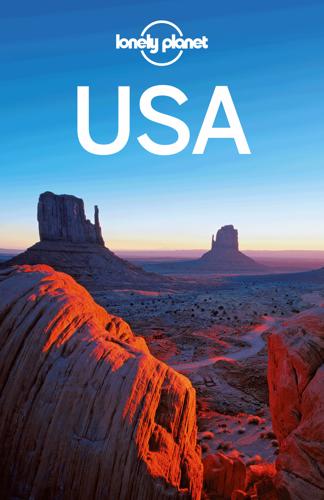
USA Travel Guide
by
Lonely, Planet
Annabelle Inn HOTEL $$$ ( 877-266-2466; www.annabelleinn.com; 232 W Main St; r incl breakfast $159-229; ) Personable and unpretentious, the cute and quirky Annabelle Inn resembles an old-school European-style ski lodge in a central location. Rooms are cozy and come with flat-screen TVs and warm duvets. You can also enjoy after-dark ski video screenings from the upper-deck hot tub (one of two on the property). Little Nell HOTEL $$$ ( 970-920-4600; www.thelittlenell.com; 675 E Durant Ave; r from $545; ) This is a long-time Aspen institution at the foot of Aspen Mountain. Gas-burning fireplaces, high-thread-count linens and rich color schemes make up the elegant modernist decor. An adventure concierge is on hand to help guests get the most from the outdoors. Dining is outstanding and its open air Ajax Tavern is the town hot-spot for some après-ski unwinding.